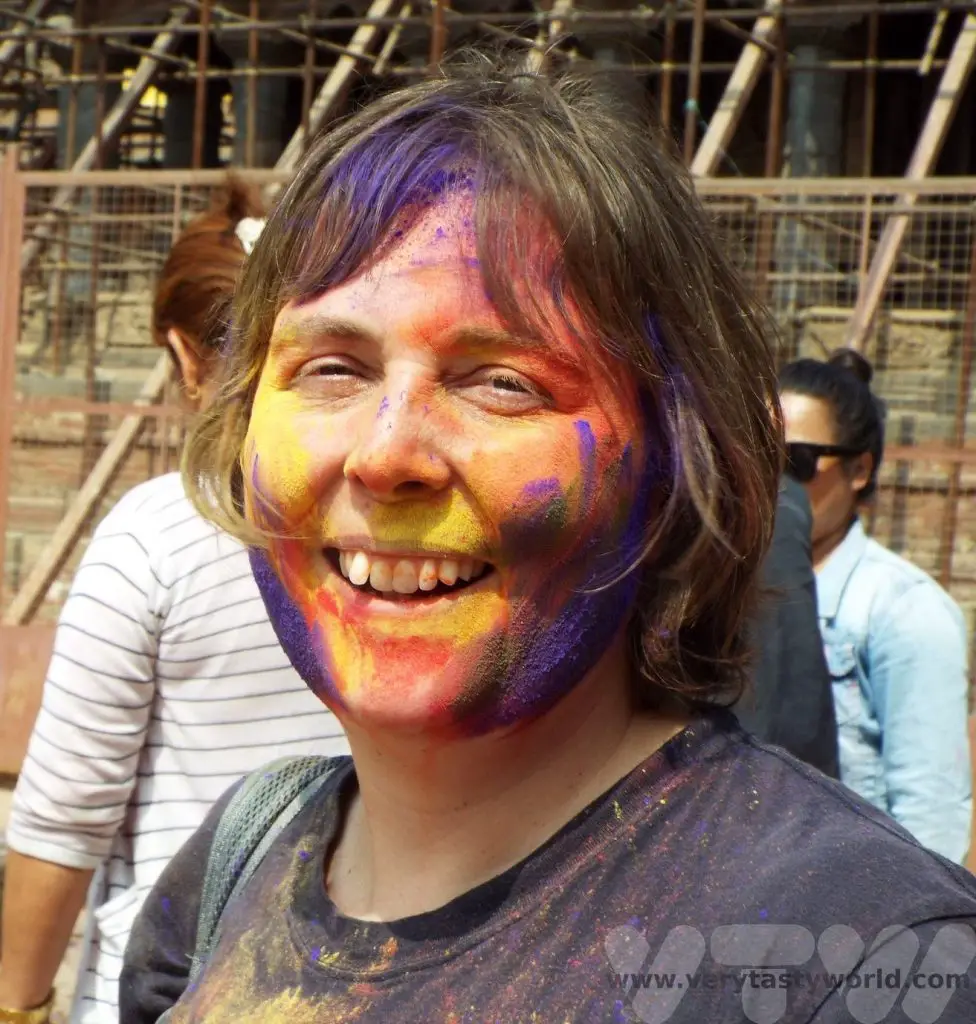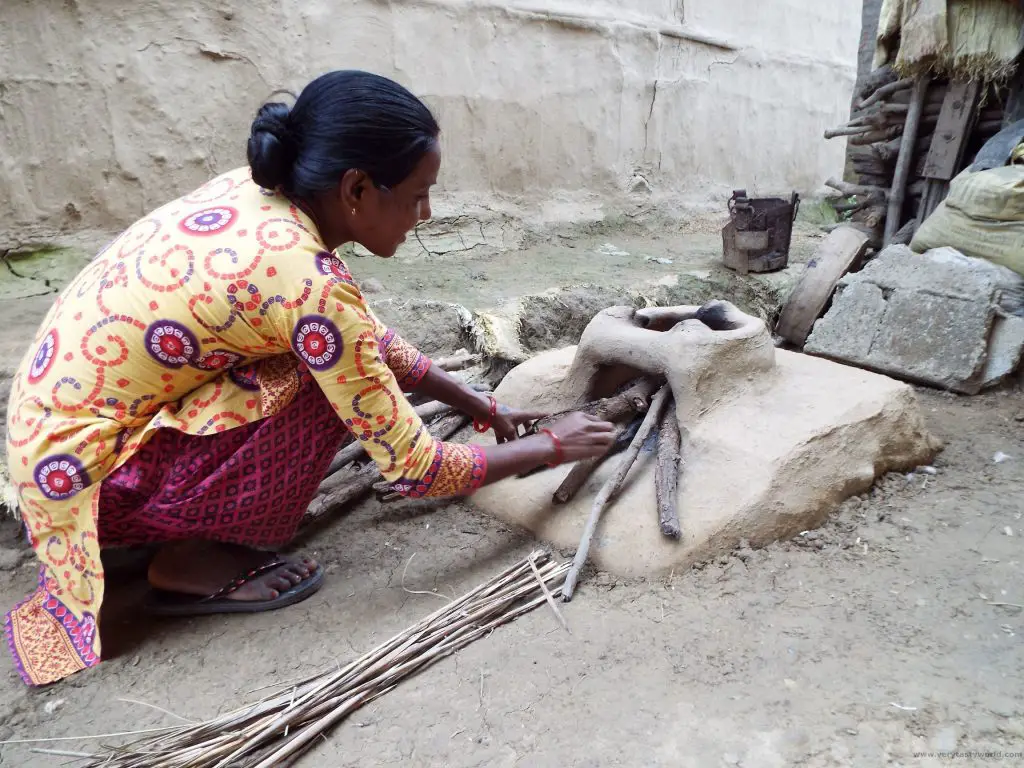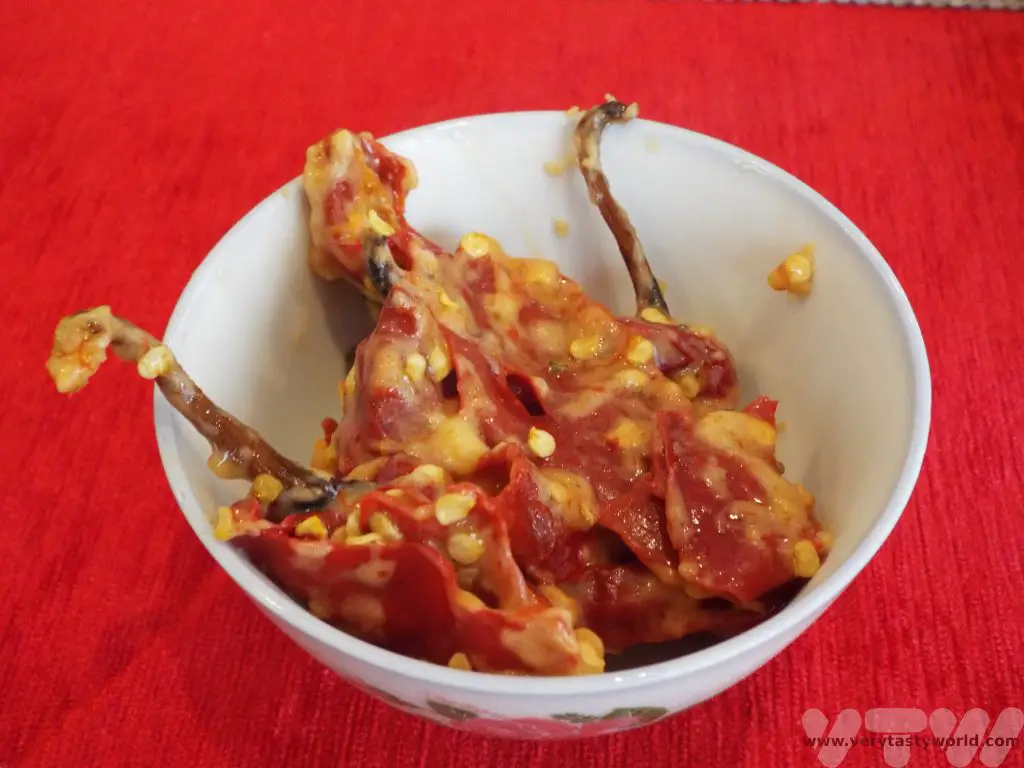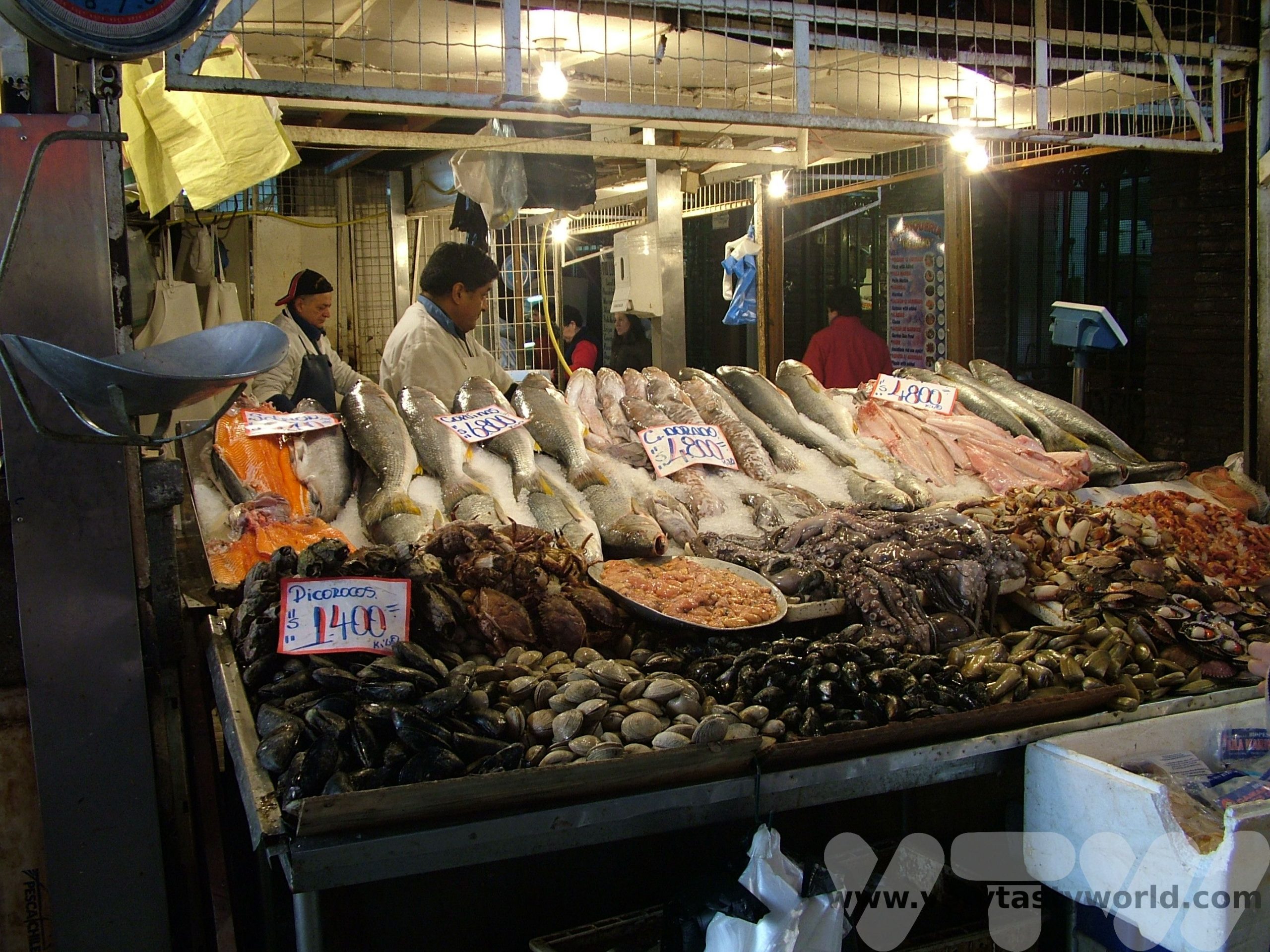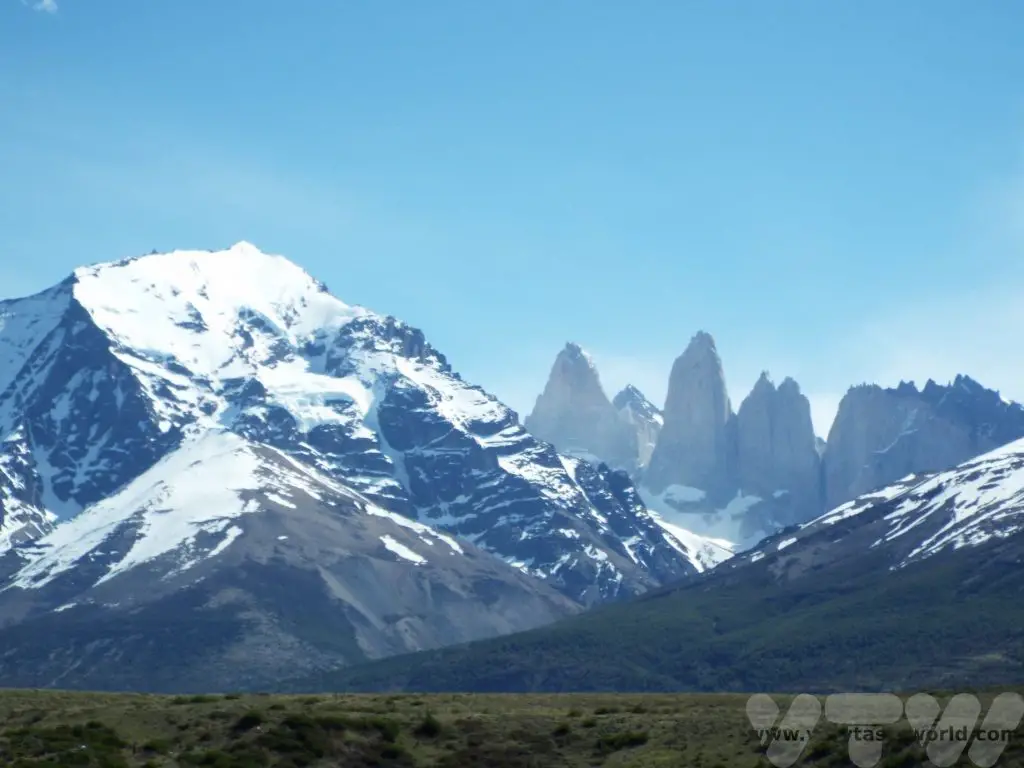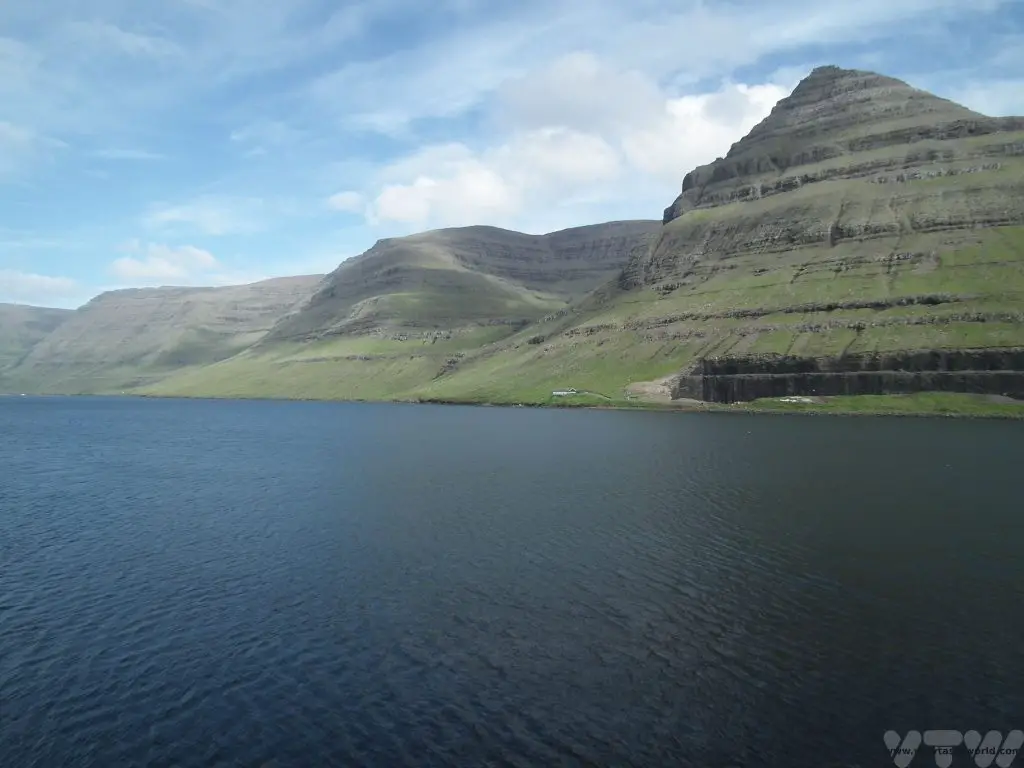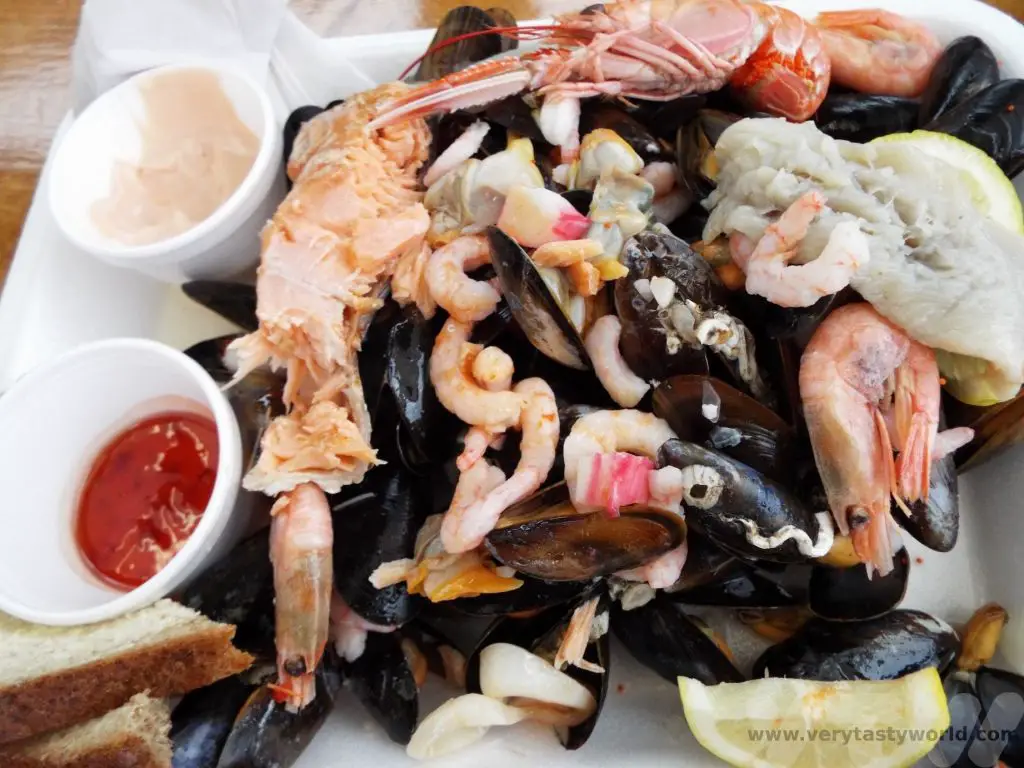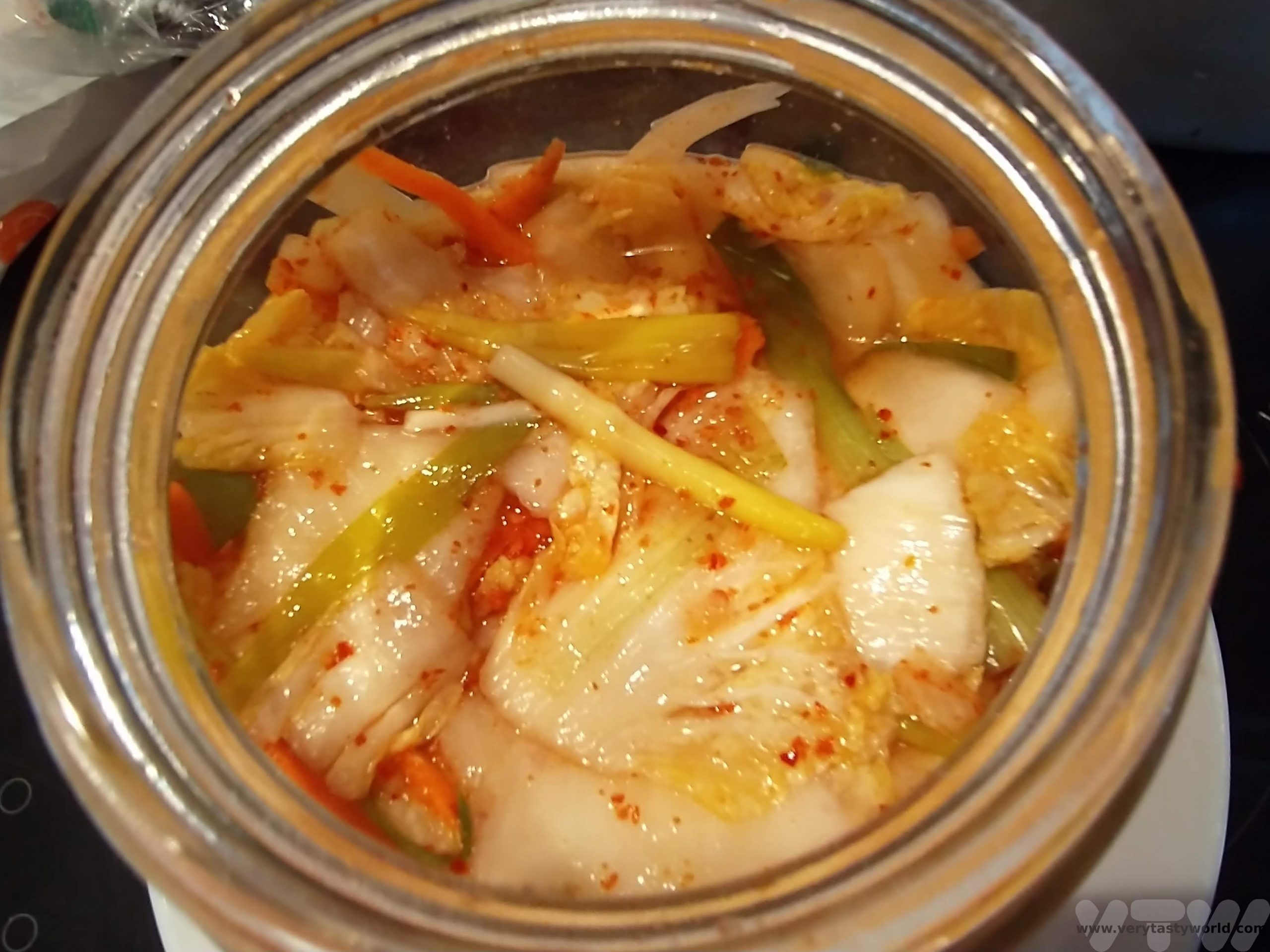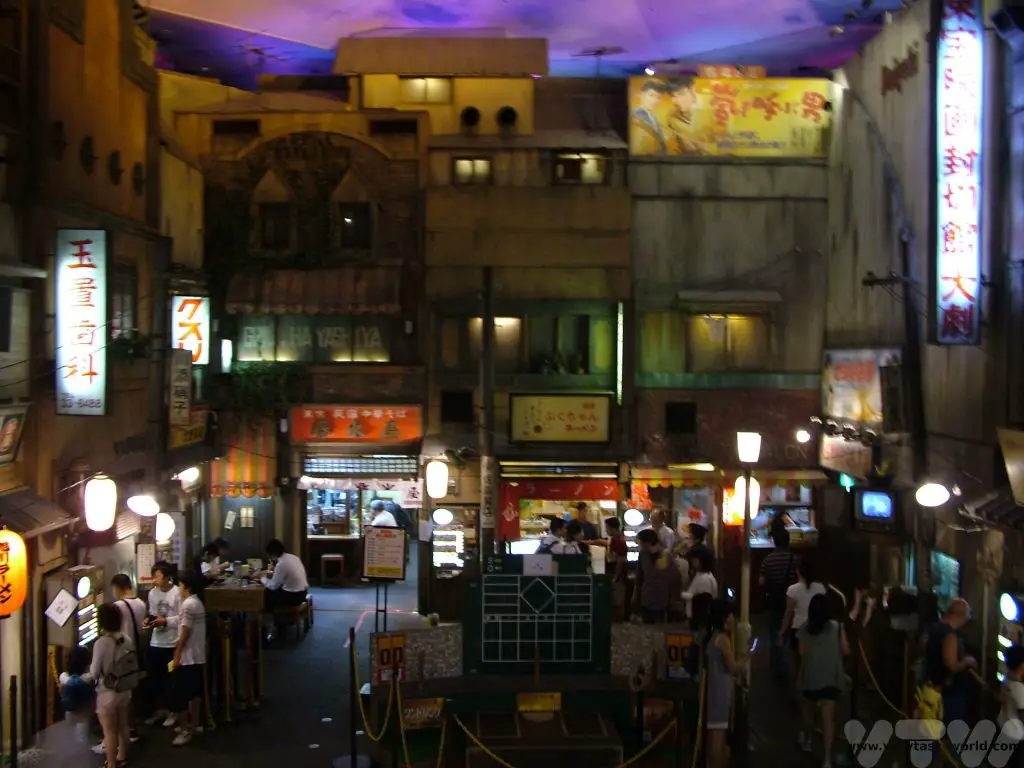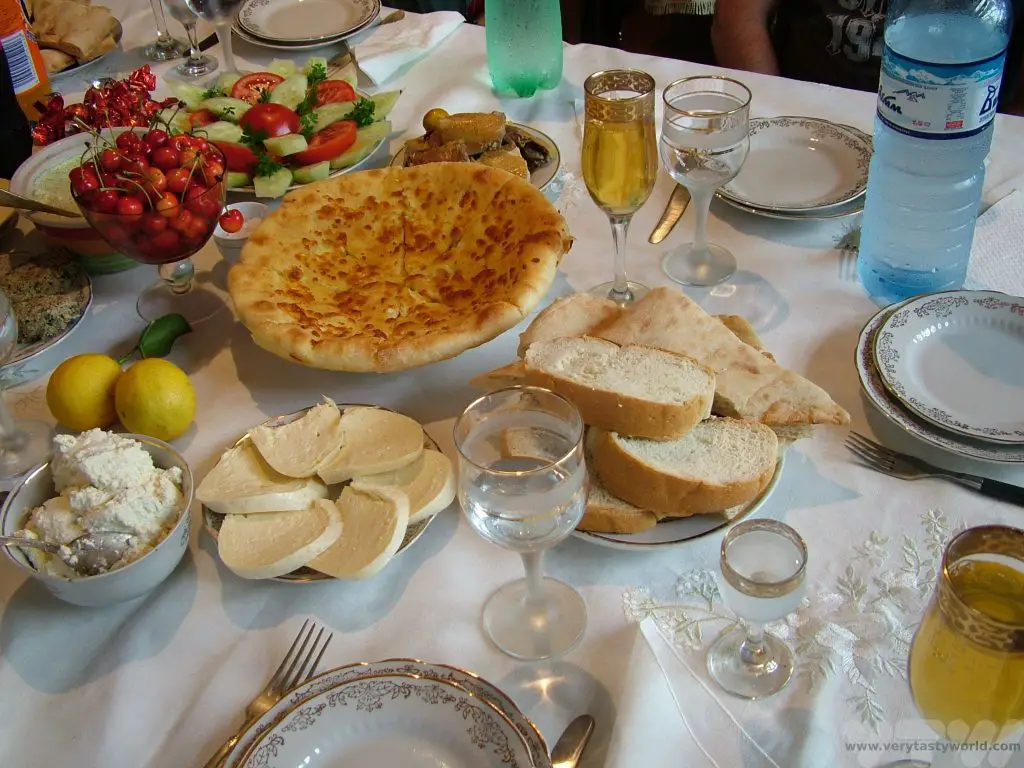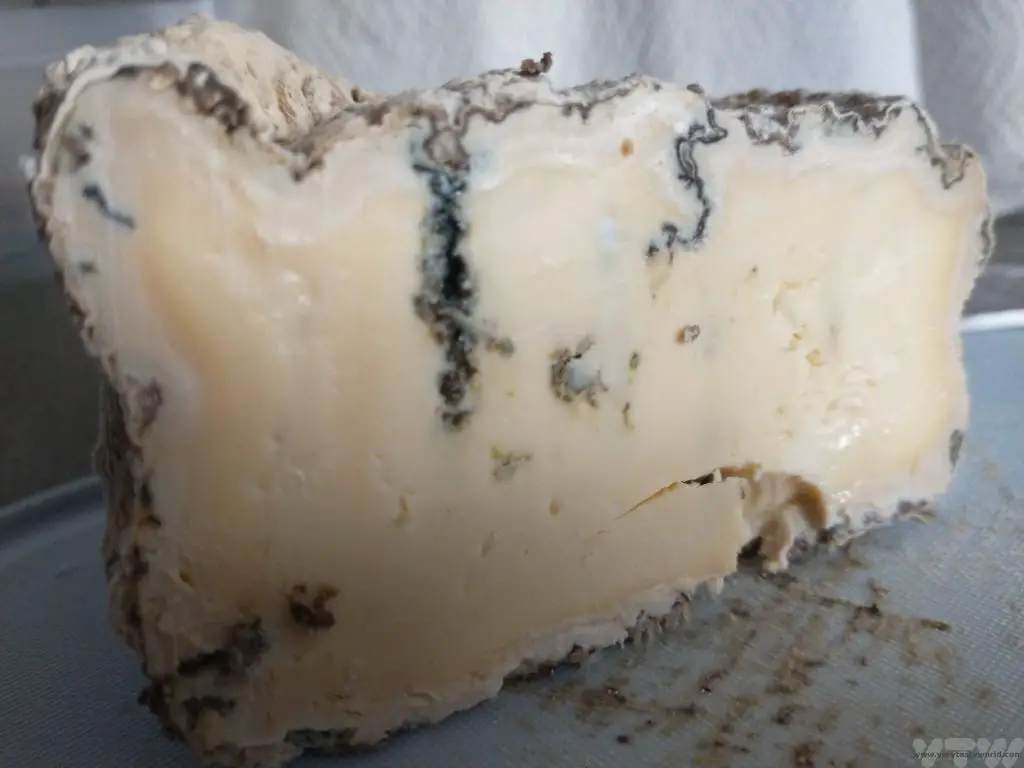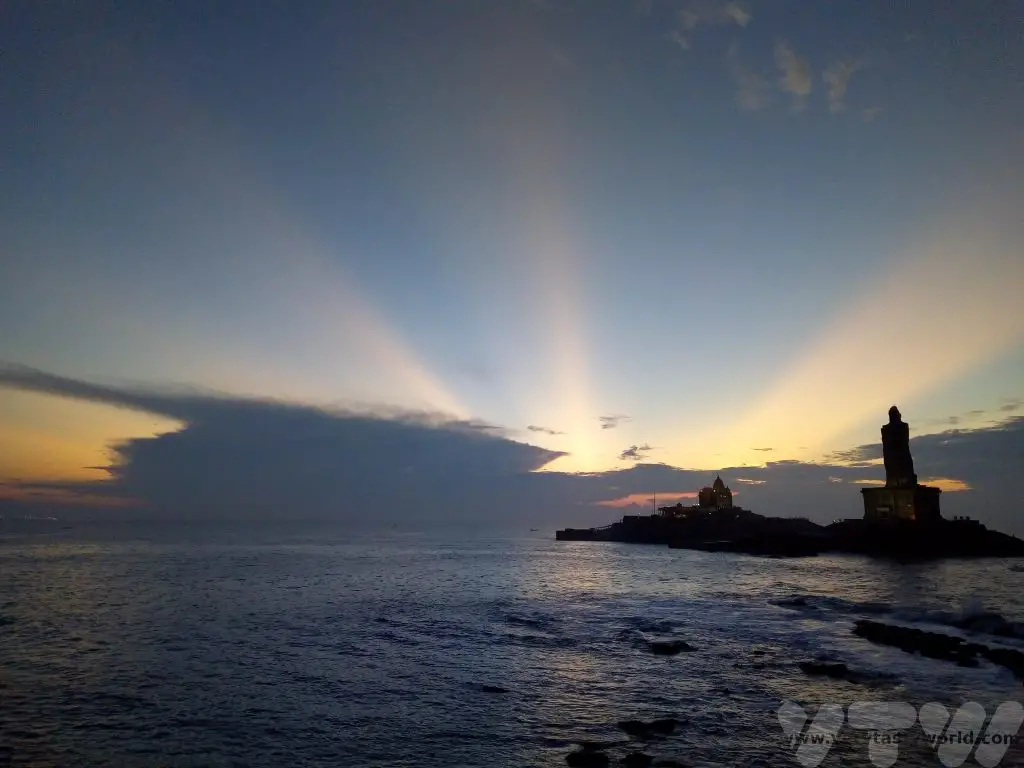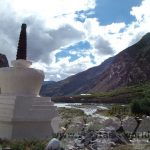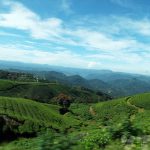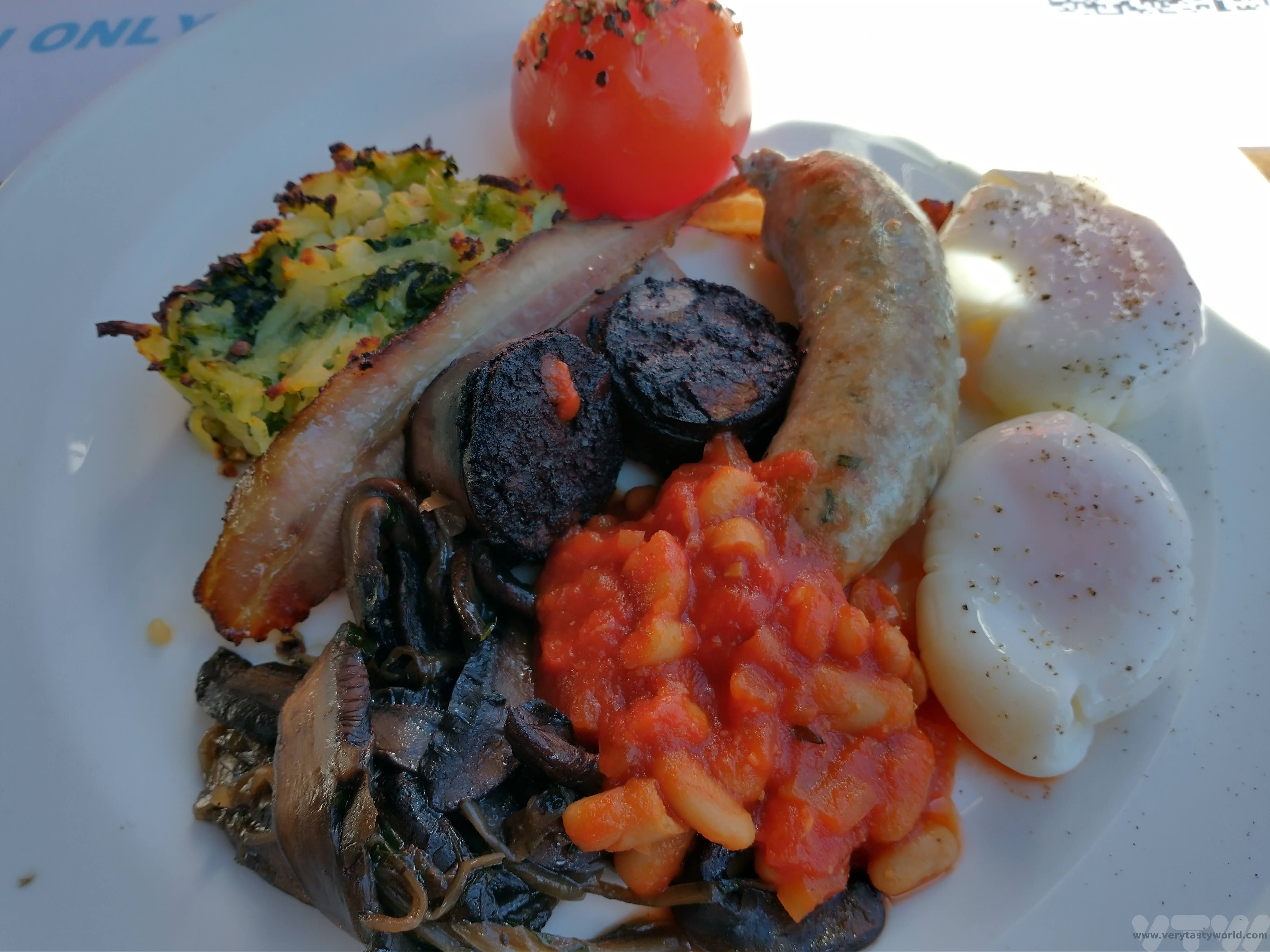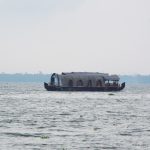The Very Best Views in Scenic Japan
Three is a Magic Number
Of the many, many beautiful places to visit in scenic Japan, there are three that have been officially designated to be the most celebrated. Hayashi Gahō, a philosopher and Confucian scholar, declared the Nihon Sankeiin, or Three Views of Japan, in 1643. These places were considered to be both beautiful and representative of Japan’s cultural heritage. The views are located in very different regions of the country and, as Japan is an island nation, they all have a setting by the sea. It is possible to visit them using public transport and they are emphatically worth travelling to see.
Scenic Japan View Number One: The Itsukushima Shrine
The Itsukushima Shrine is probably the best known of these views. Japanese tourist literature and guides often show a picture of the iconic red torii ‘floating’ in the Seto inland sea. It is located on the delightful island of Itsukushima, more commonly known as Miyajima, which means ‘shrine island’ and it is a UNESCO world heritage site.
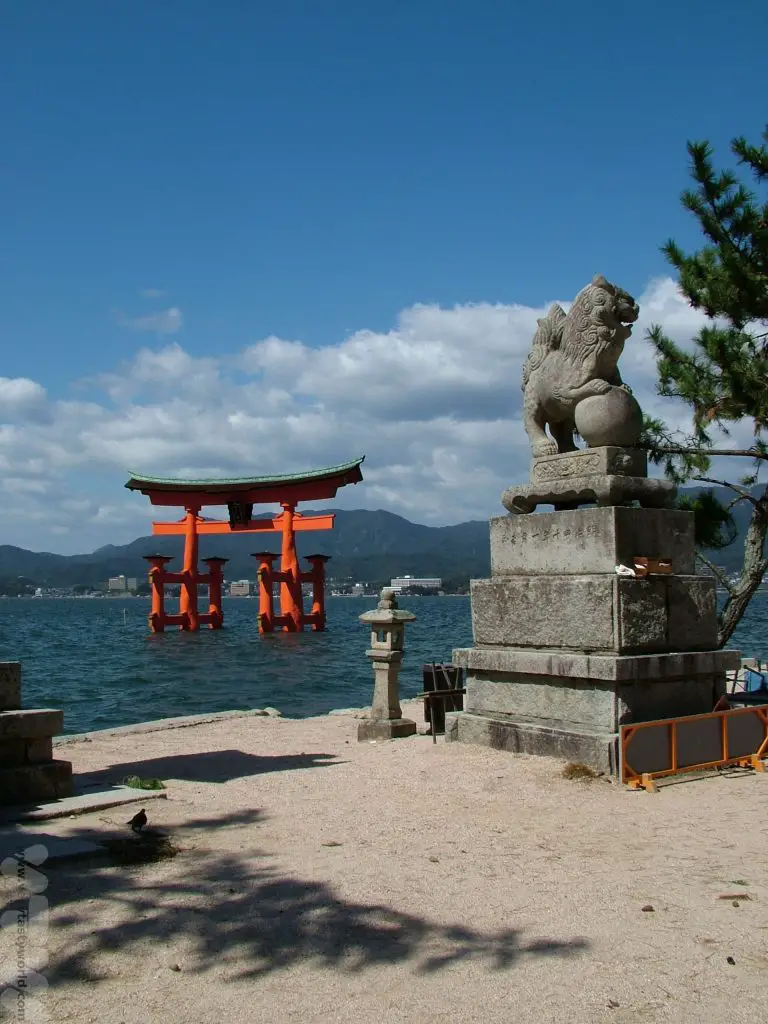
It is a beautiful sight, especially when the sunlight catches the sparkling sea.
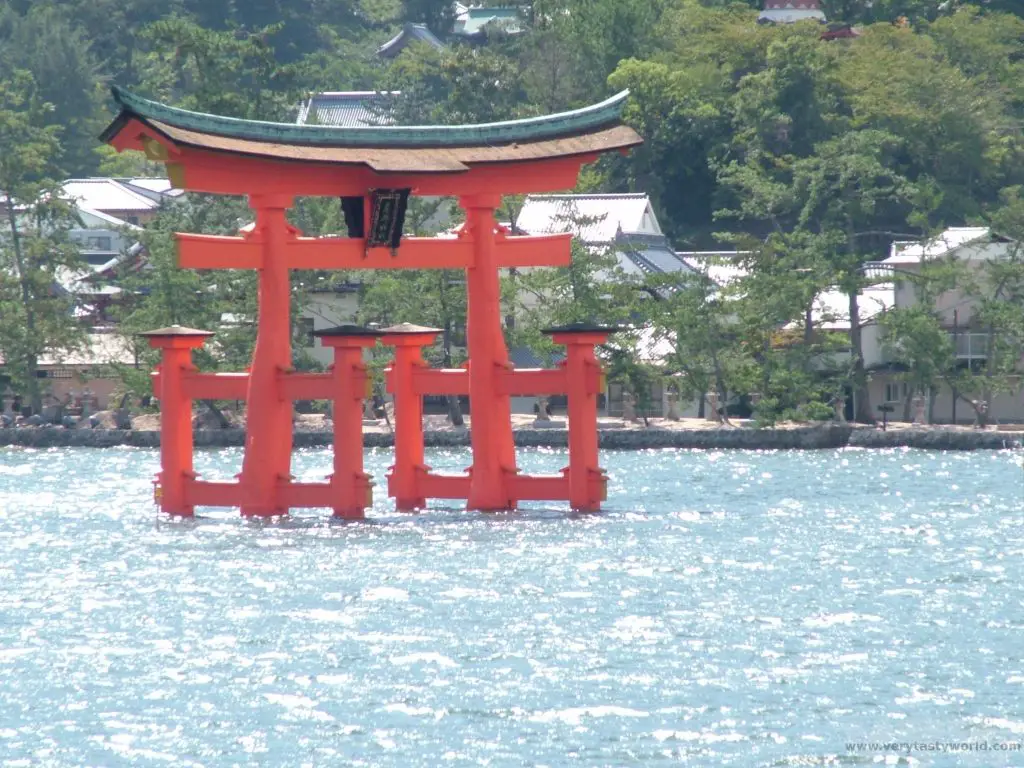
It’s less beautiful when the tide is out so it’s worth planning a visit for when the tide is high if you want to take that perfect Instagram snap.
The torii, in common with all Shinto temples, is actually the gateway to the shrine and it is possible to visit the shrine complex itself. These include Toyokuni Shrine, with its five-story pagoda, as well as the Daiganji Temple. The compound even has a noh stage – for traditional Japanese theatre.
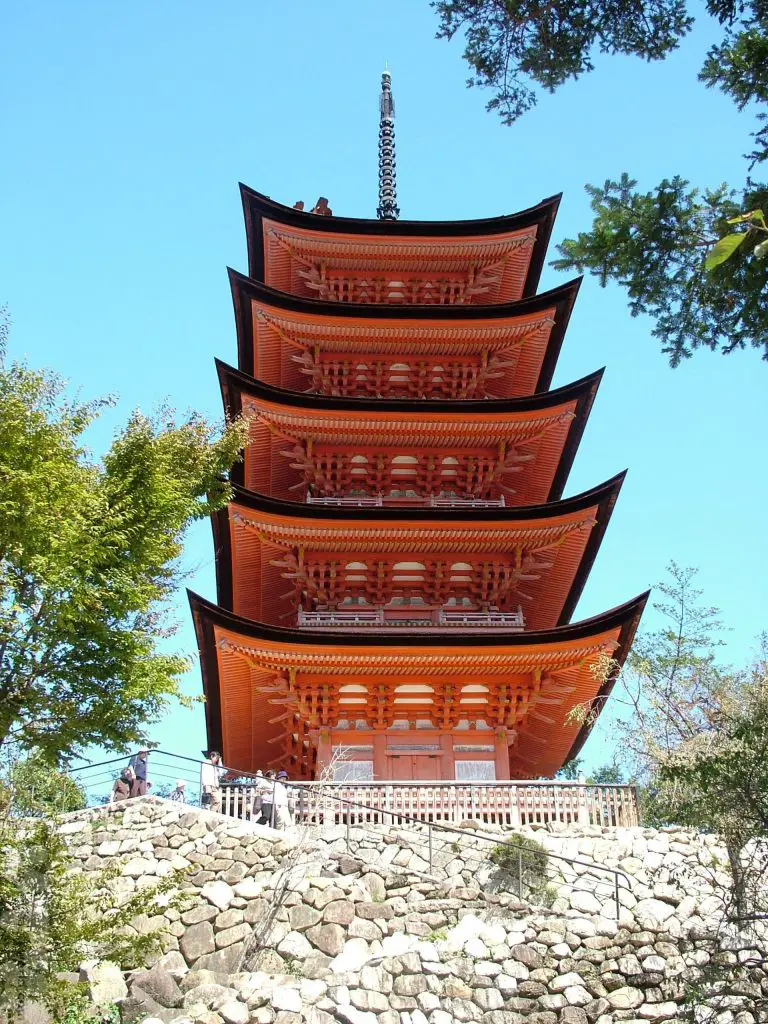
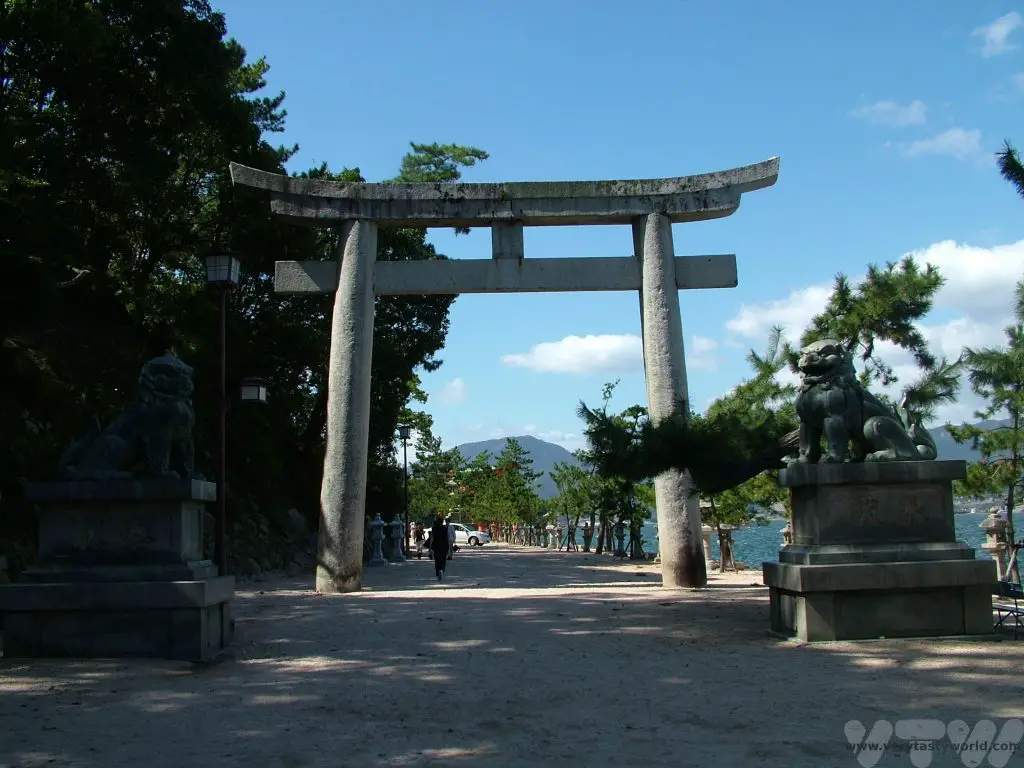
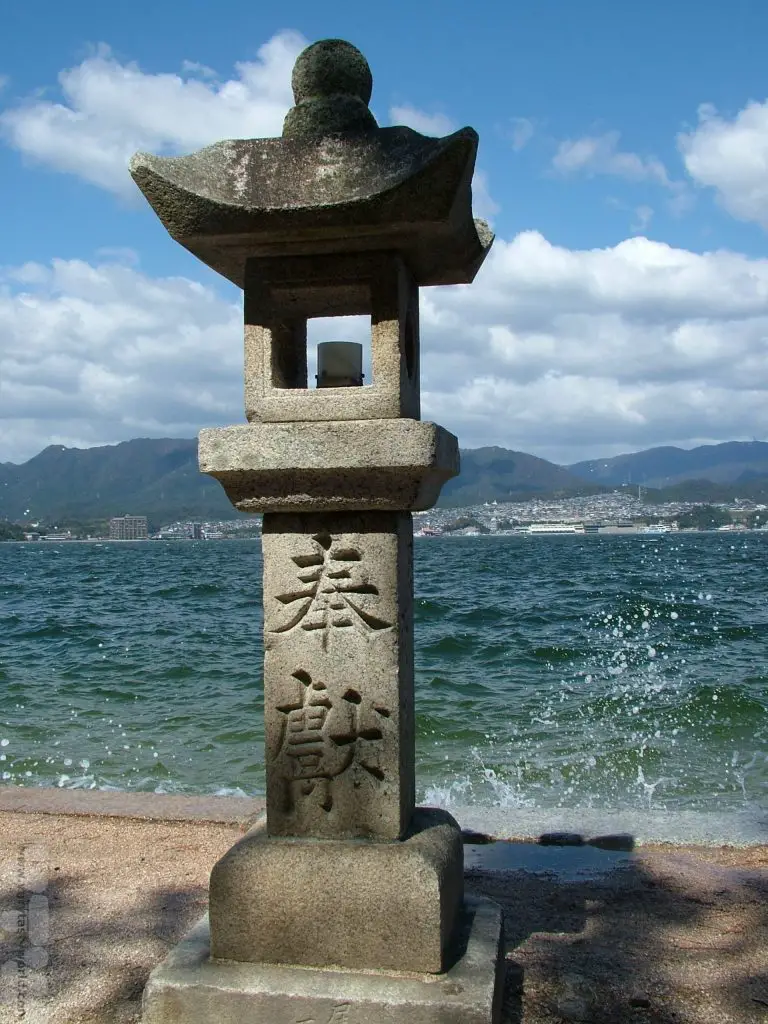
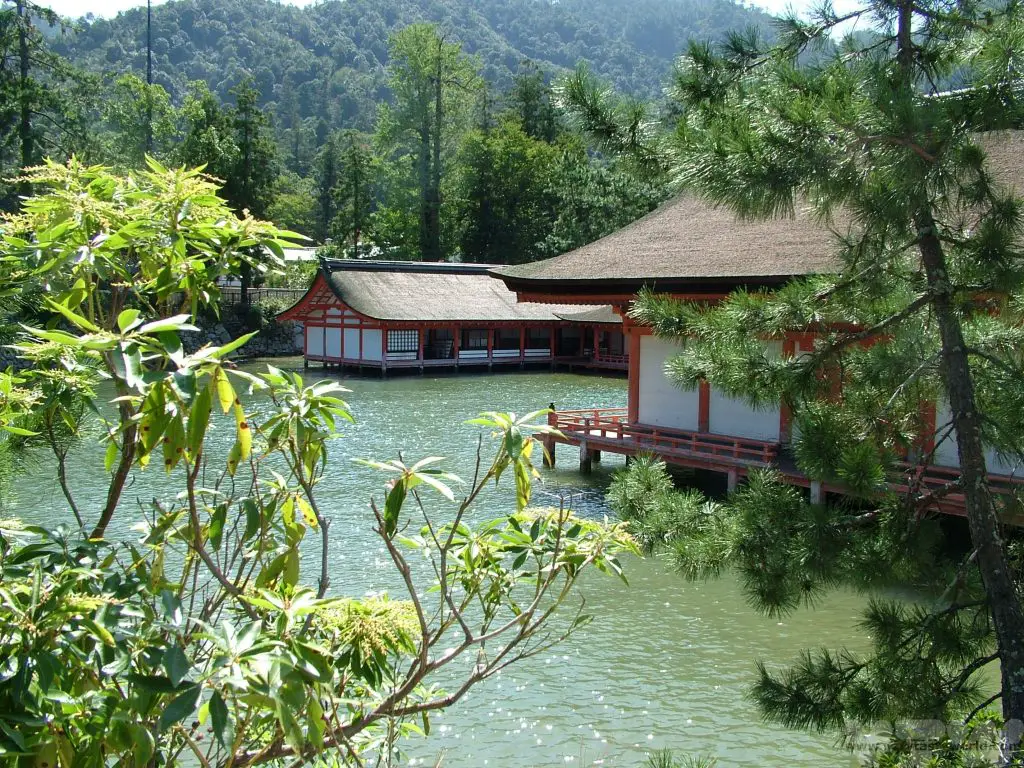
The island is really easy to reach from Hiroshima. You can catch a train and then a ferry to the island on a journey that takes about an hour.
Miyajima is a lovely island, perfect to walk around, especially if you’ve arrived at low tide and need to wait in order to capture that perfect shot of the torii. There are forested walkways to explore and it’s possible to climb up to the island’s highest peak, Mount Misen. If you’re feeling less energetic, there’s a ropeway to take you up to the top.
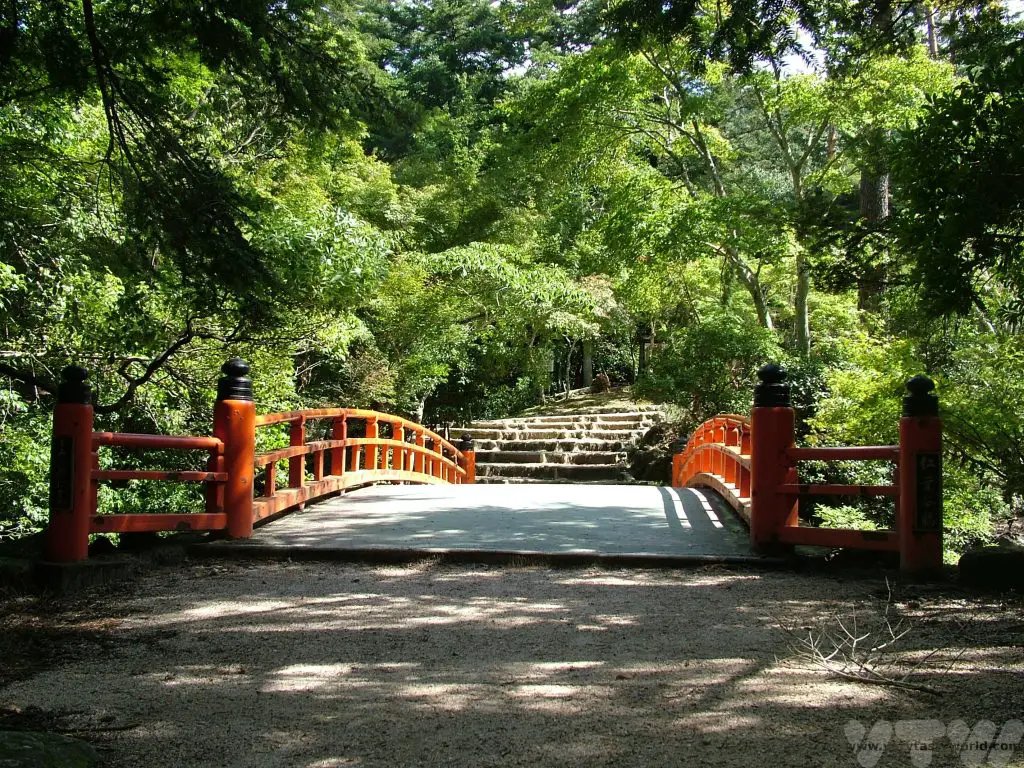
There are also some friendly-ish deer who live on the island. They aren’t as bold as the ones at Nara and, unlike at Nara, you are not allowed to feed them.
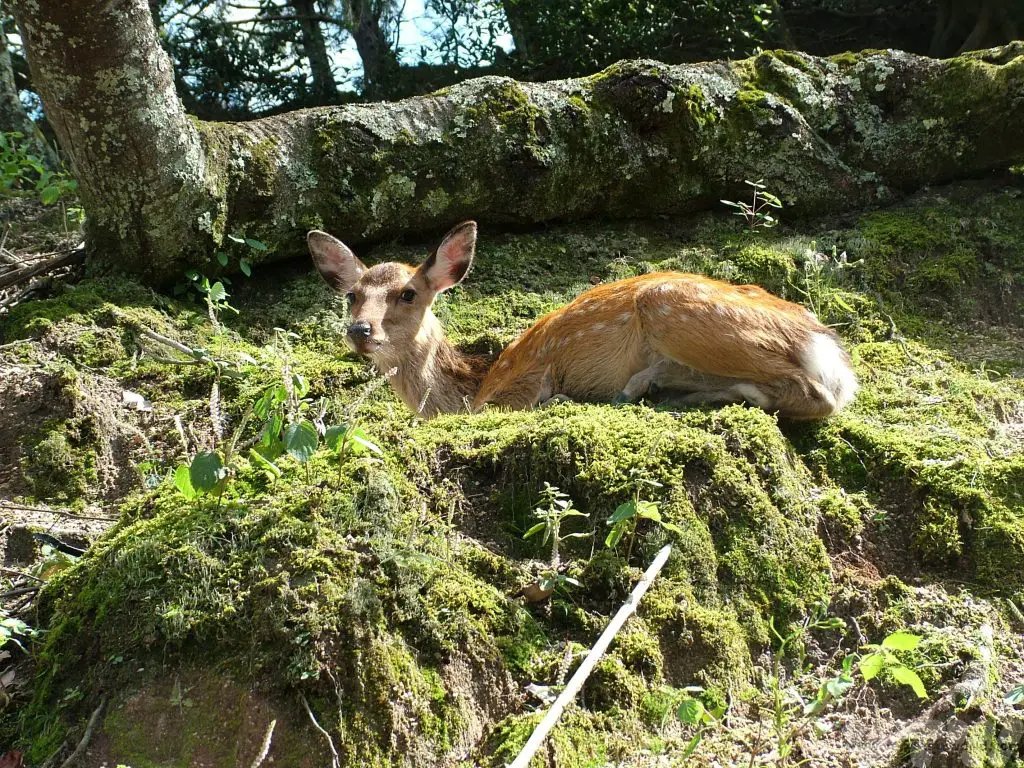
Scenic Japan View Number Two: Matsushima
The next view is that of Matsushima on Japan’s north east coast, which is a short rail journey from the northern city of Sendai, easily accessible from Tokyo via the shinkansen (bullet train).
Matsushima comprises a series of hundreds of forested islands dotted through a bay. It was lucky not to have been too badly impacted by the earthquake and tsunami of 2011, the geography of the bay having some part in protecting the islands.
It is possible to visit some of the islands closest to the mainland by crossing traditional vermillion bridges from the shore.
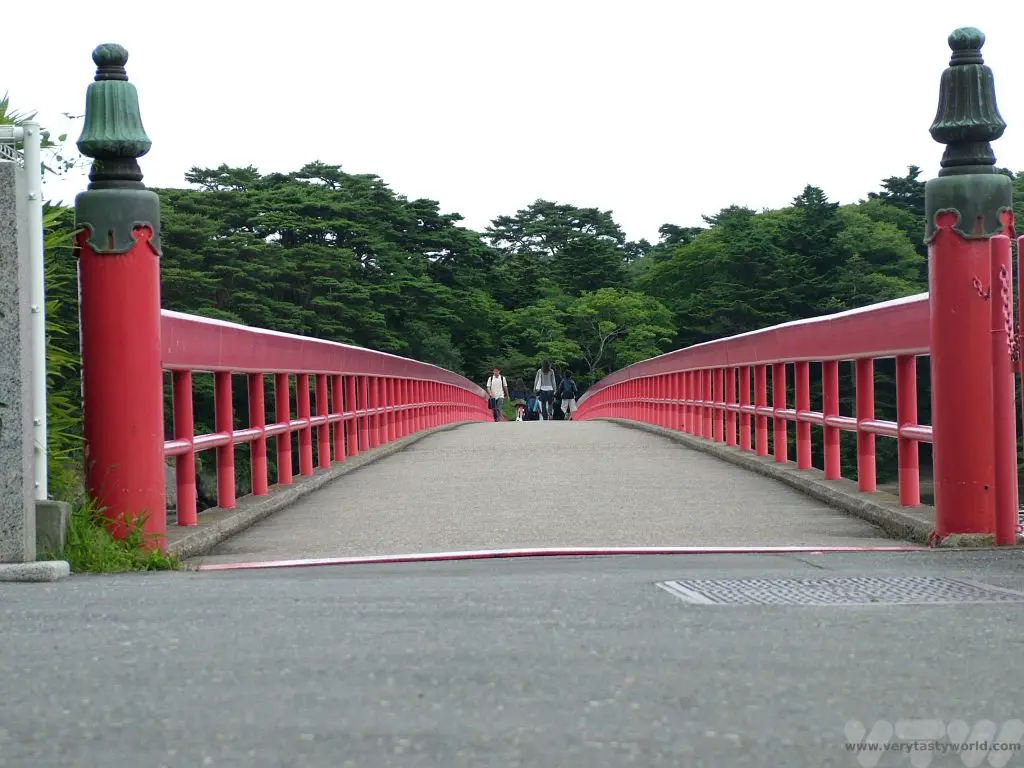
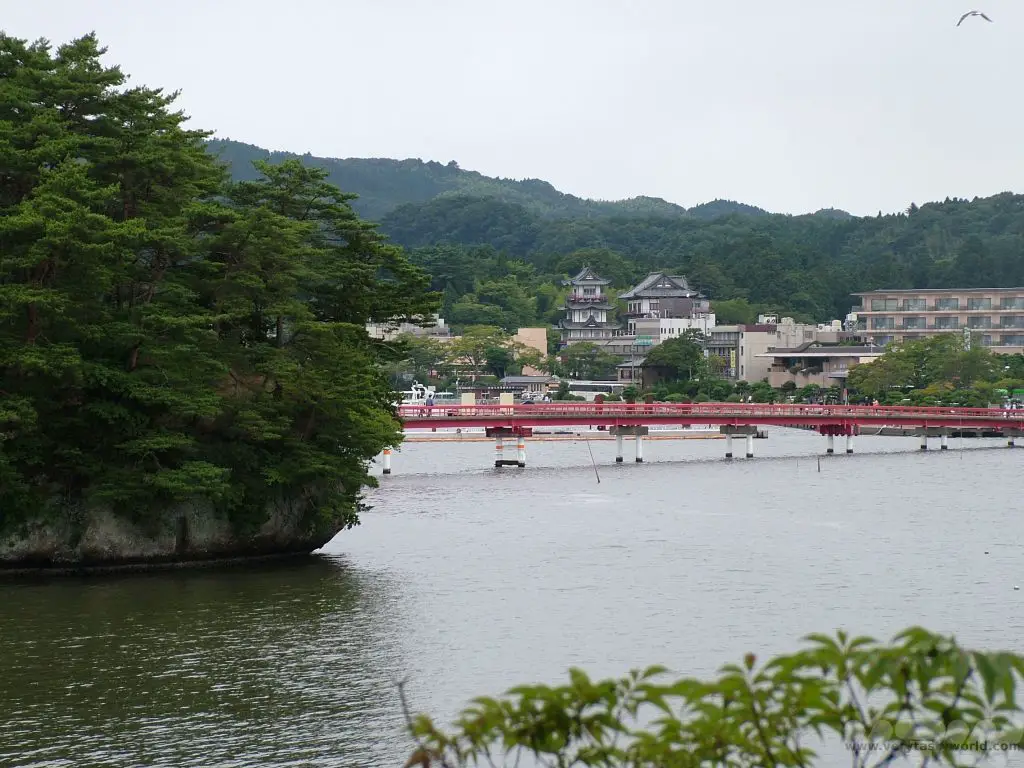
But taking a boat trip across the bay is highly recommended as you will be able to see some of the more remote islands. Beware, though, bird food is available to buy prior to boarding the ship and the seagulls very much know this, so we were followed by flocks of gulls eager to feast upon a tasty snack.
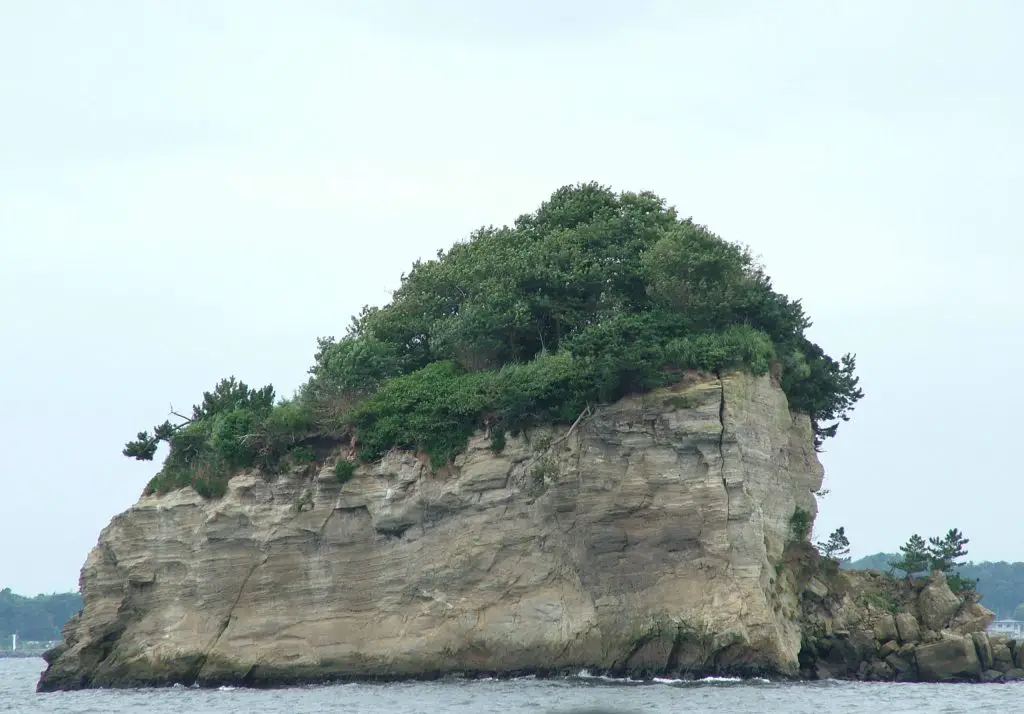
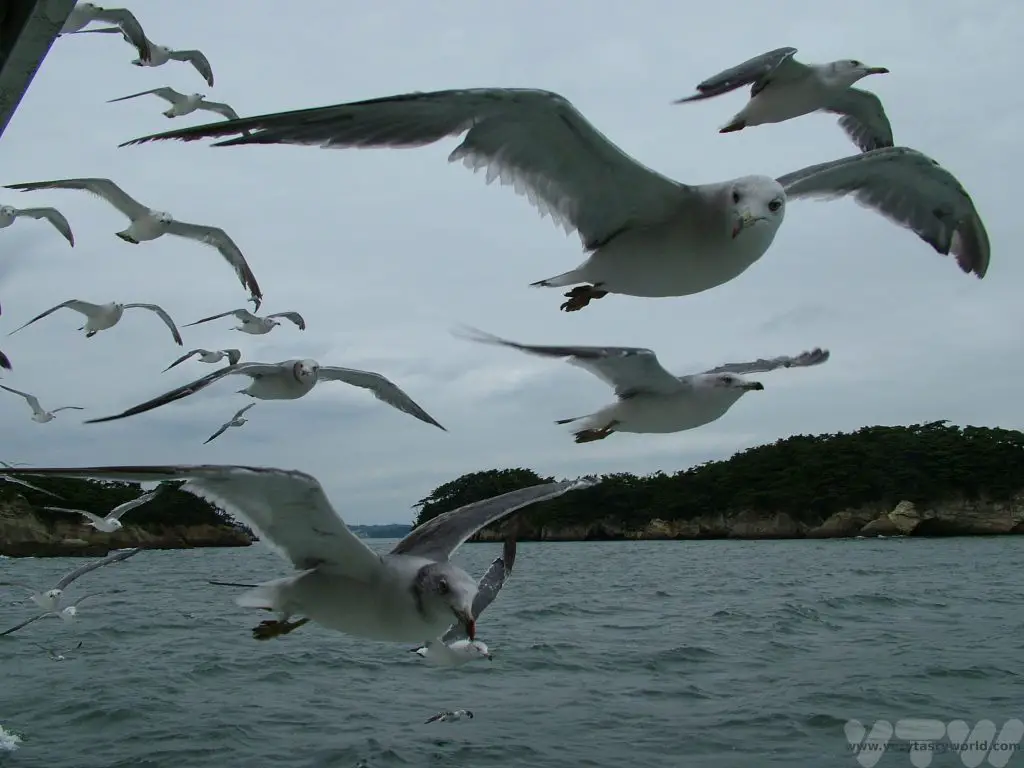
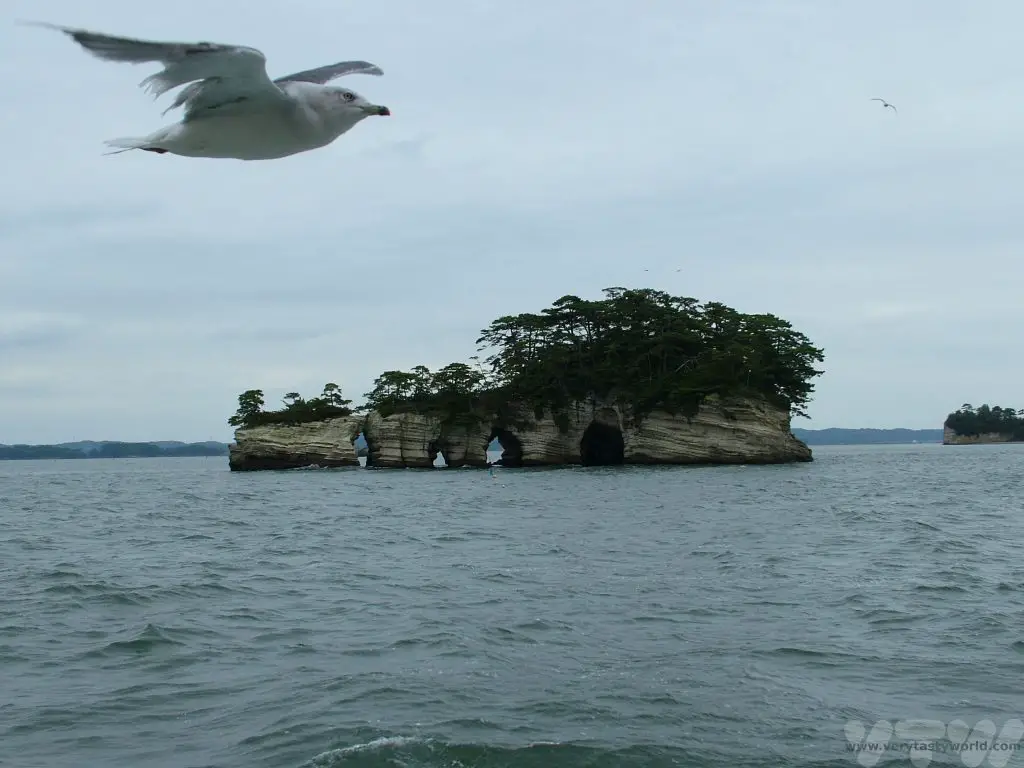
It is reputed that Japan’s most famous poet, Basho, best known in western countries for his haiku, was reportedly so struck by the awesome beauty of Matsushima, that he was lost for words and could only utter, ‘Matsushima, Ah Matsushima, Matsushima,’ to describe his feelings about viewing the area. The story is likely to be apocryphal but the sentiments are appropriate.
The viewing point isn’t near the shore, it’s a walk across the railway tracks and up a hill to a park. The weather wasn’t really on our side on the day of our visit but we had come all this way to see one of Japan’s greatest views, so a rainy trudge wasn’t going to stop us.
In fact, a very kind lady was driving past in her car and stopped to offer us a lift, which we were happy to accept. She knew exactly where we were heading and we exchanged pleasantries about the weather. ‘O-ame,’ (big rain) we declared. She agreed. After she’d dropped us off in the car park we thanked her profusely and wandered through the park to look at the view. This probably isn’t the same view that Basho enjoyed but it was wonderful nevertheless, despite the rain.
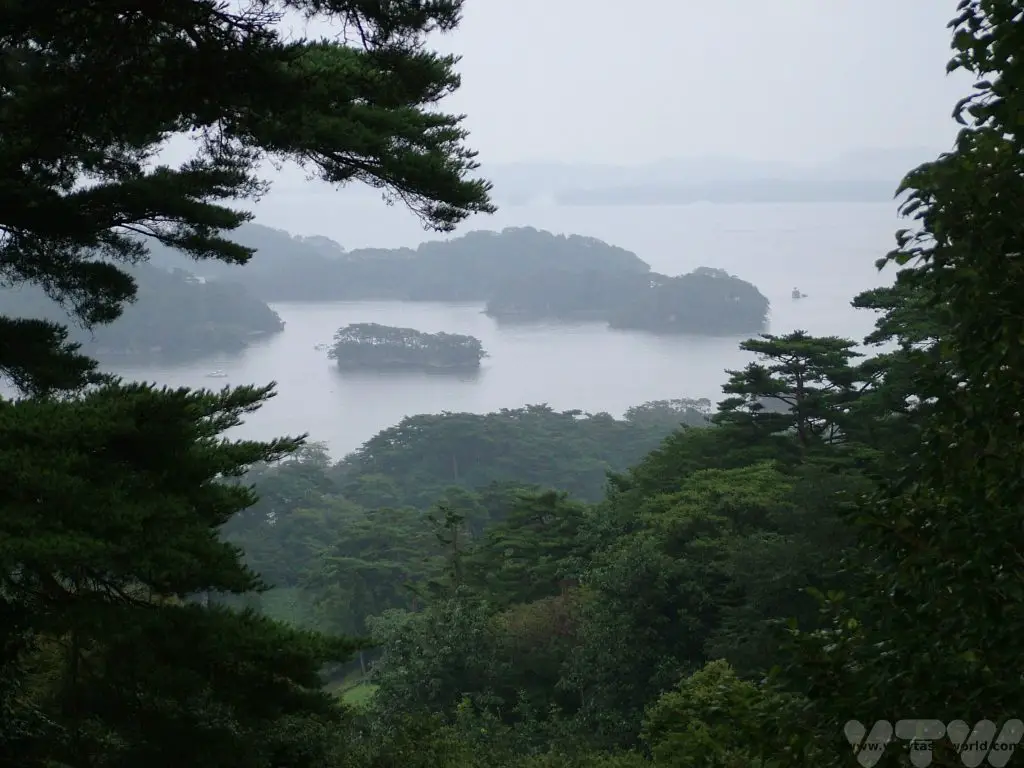
The town is lovely to wander around and there are also some interesting temples to visit.
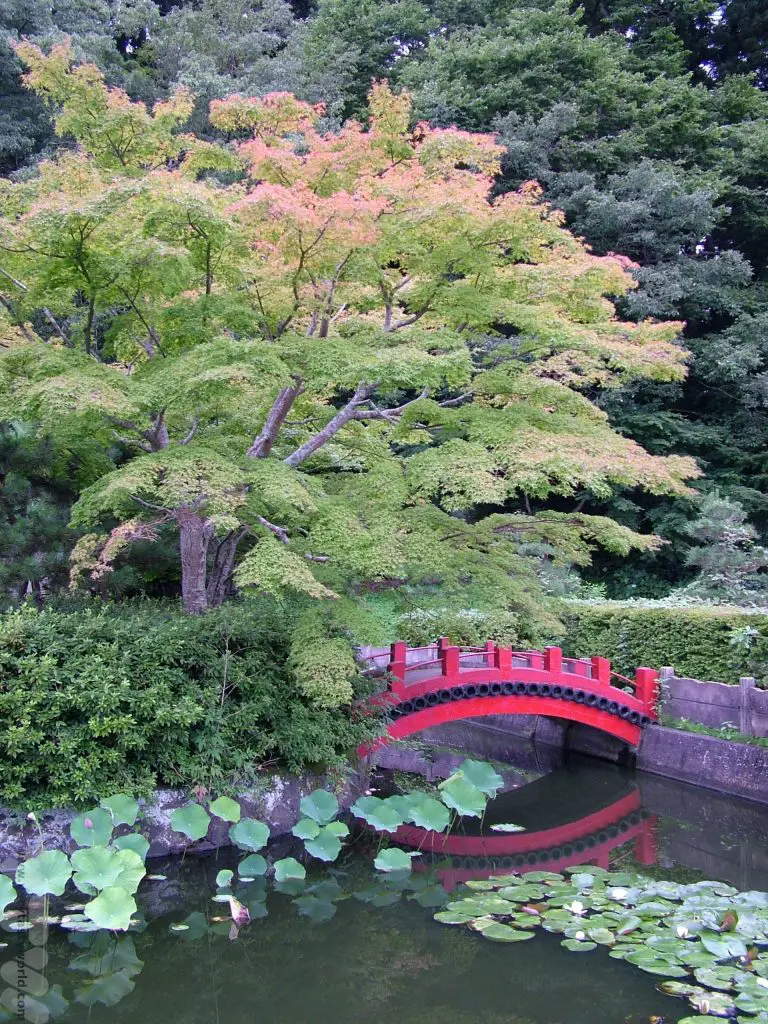
The local foodie specialty is gyu tan – beef tongue. It might not sound very appealing but in fact it’s delicious – it has a very soft texture and is packed full of beef flavour. It’s in the top right of the picture below which shows a set meal that also offered some sushi, miso soup and pickles.
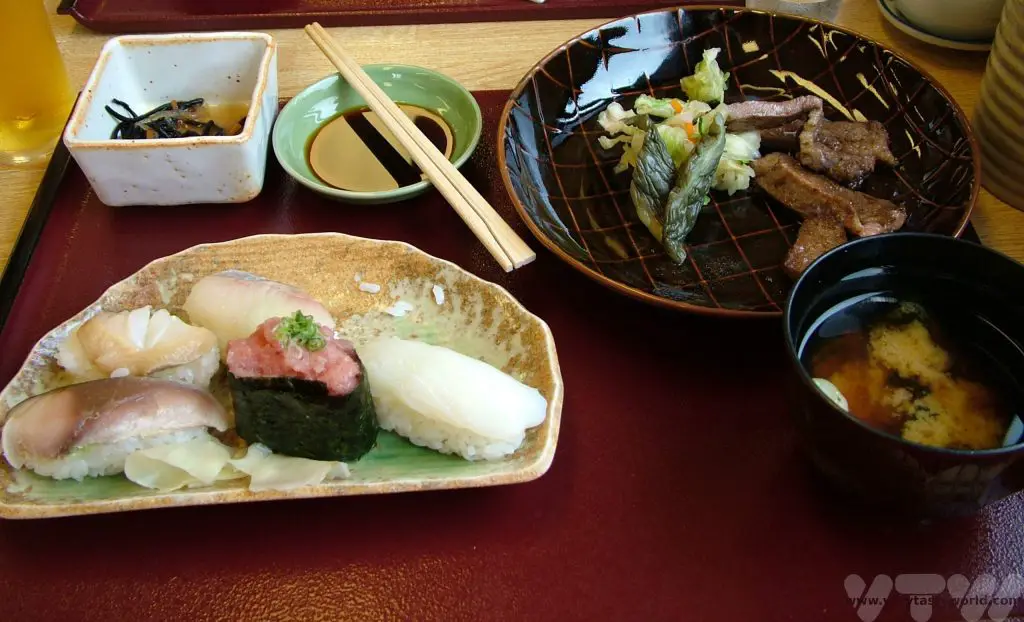
Scenic Japan View Number Three: Amanohashidate
The third view of Japan is a little trickier to reach but it is definitely worth making the journey. You can reach Amanohashidate via a direct train from Kyoto but the journey may be a bit complicated – our train was scheduled to split at a station part way through the journey – fortunately we learned about this prior to the carriages parting and found our way to the right section of the train. The excellent and indispensable hyperdia site will help with journey planning.
Amanohashidate is a sand spit that spans the mouth of the delightful Miyazu bay. The name is a bit of a tongue twister but it translates to something akin to ‘bridge over heaven.’ It is a very pleasant walk from the railway station across the spit to the other side of the bay, a distance of about three and a half kilometres. The sand bar is covered with pine trees that provide shade in the heat of the sun.
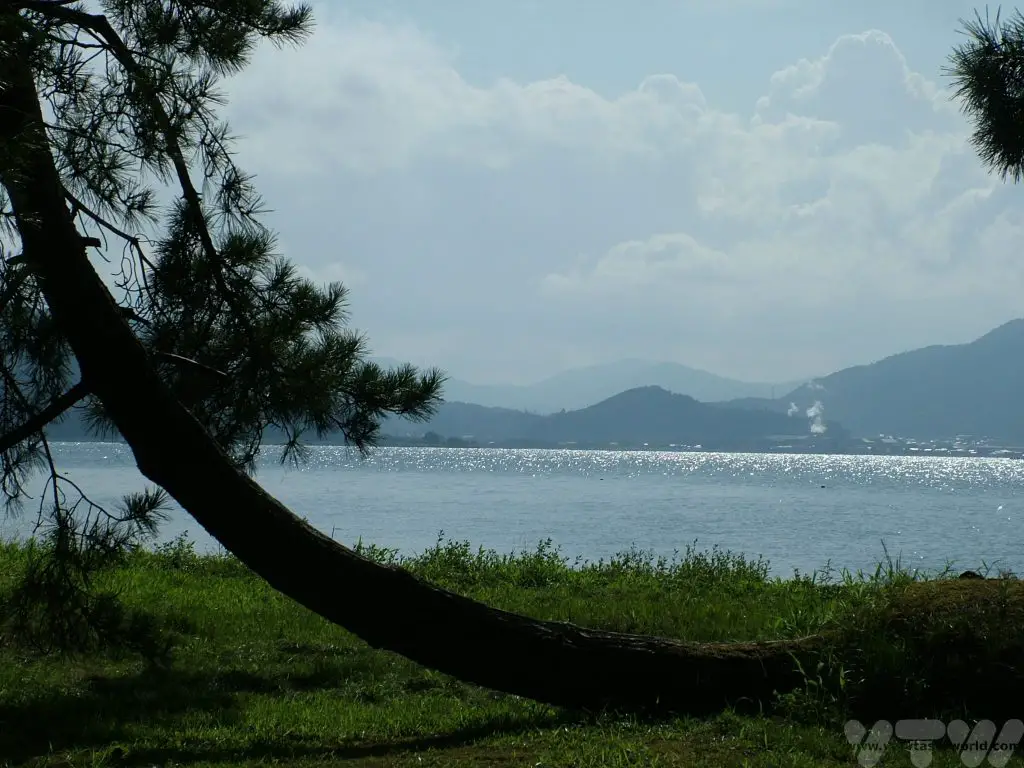
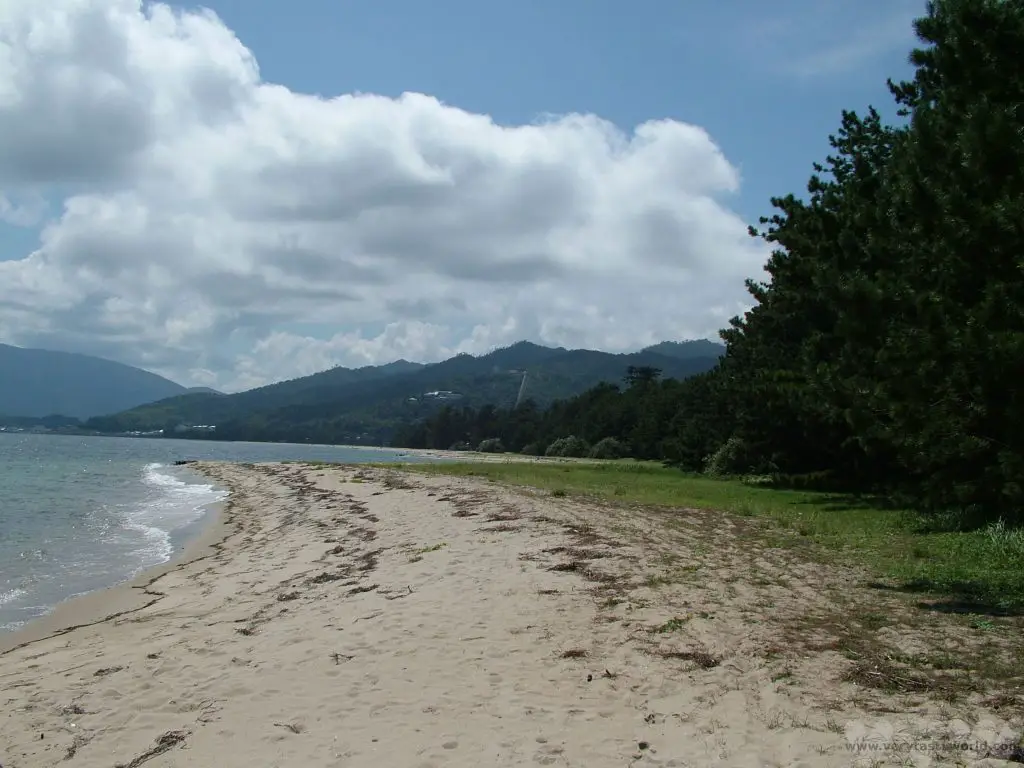
Then you can then wander through the small town of Miyazu to catch a cable car to the viewing point. (This photo shows the downhill run, which obviously has a better view.)
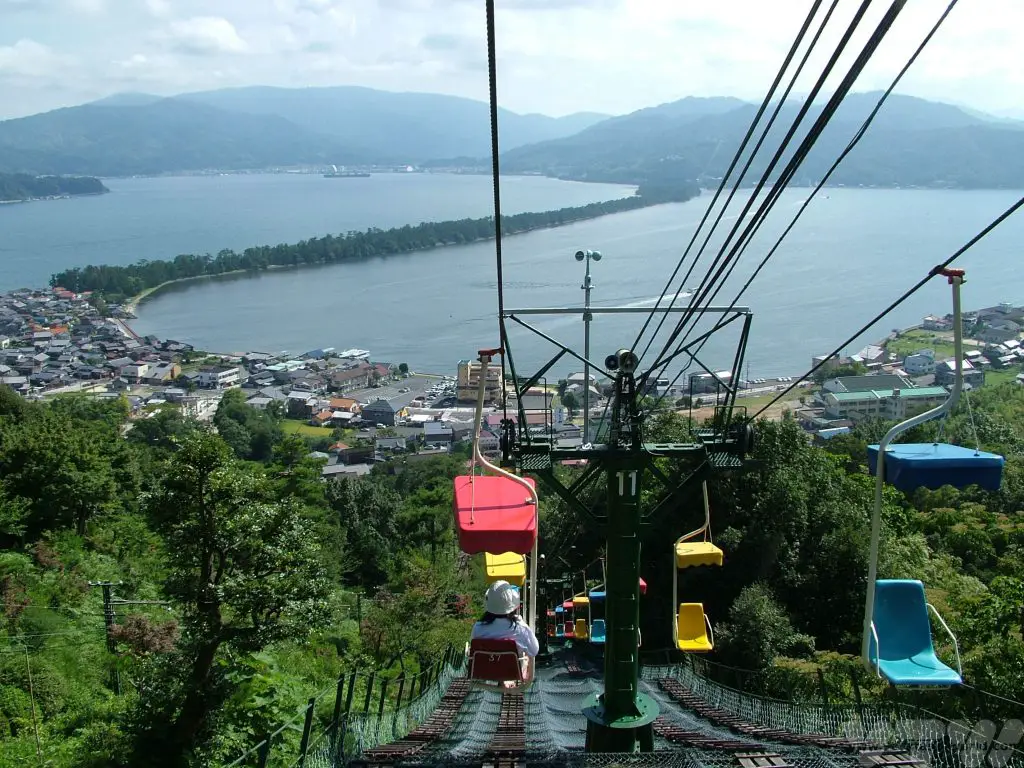
The scenery is wonderful, especially if you are lucky enough to see it on a sunny day.
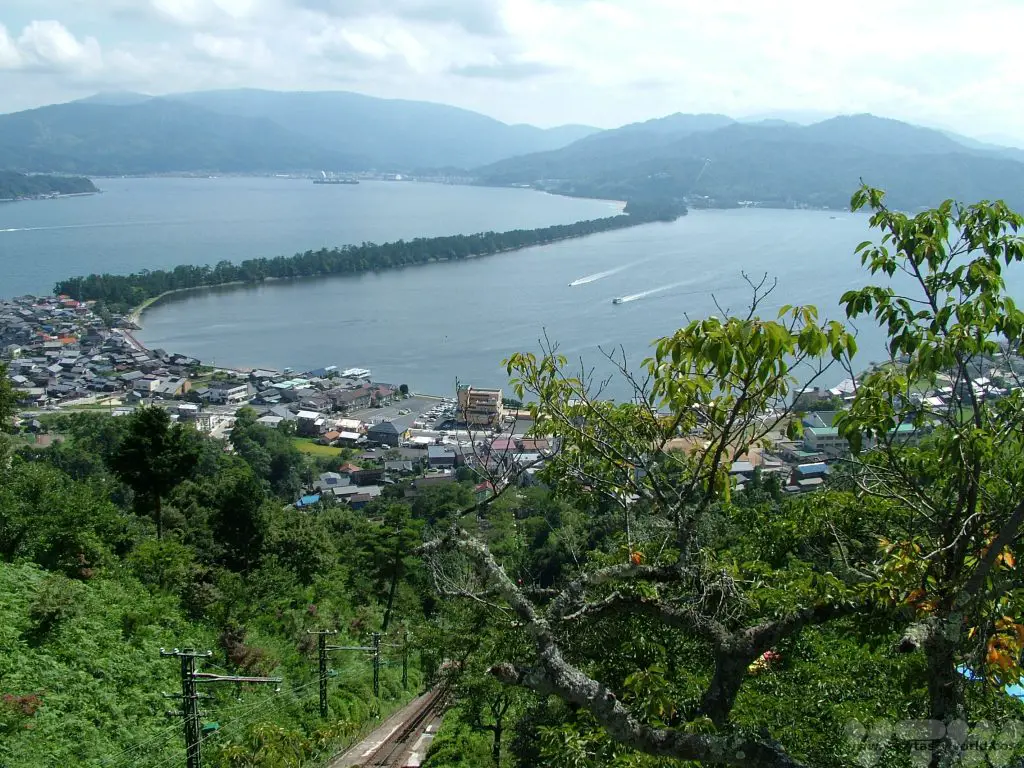
But it’s very important to know that there is a specific technique to maximise your viewing experience. You should bend over and look at the sand spit through your legs – there are special observation points to allow you to do this. The reason for this amusing way of viewing is that an upside-down perspective gives the impression of the bridge floating to heaven.
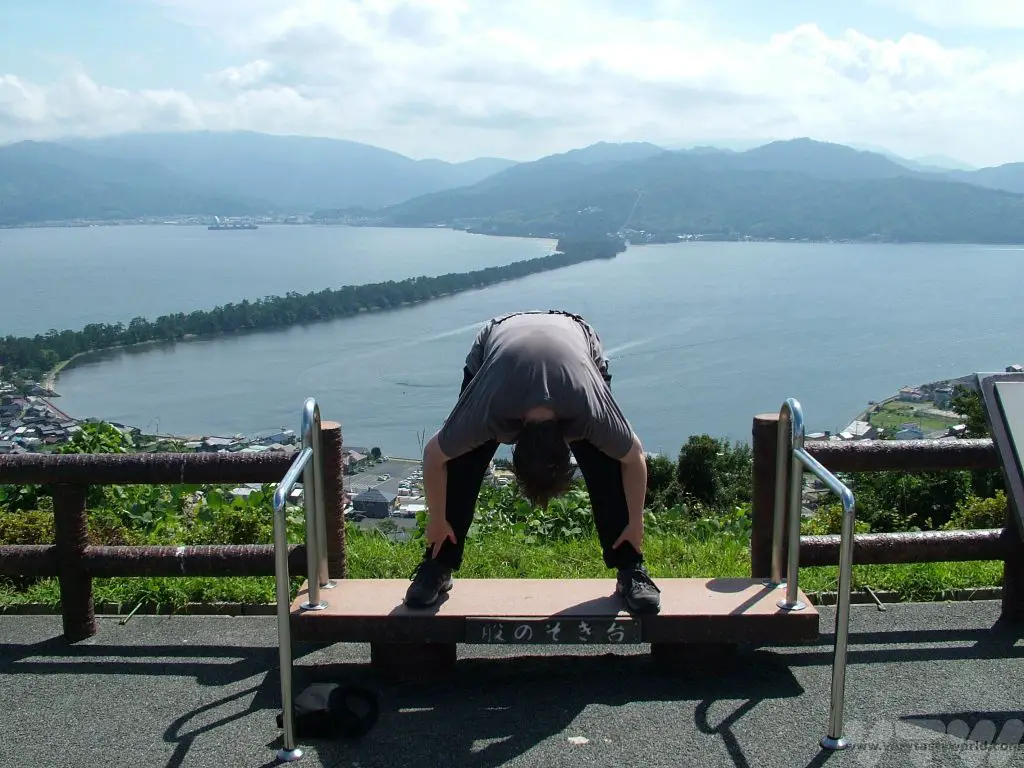
Actually it looks like this.
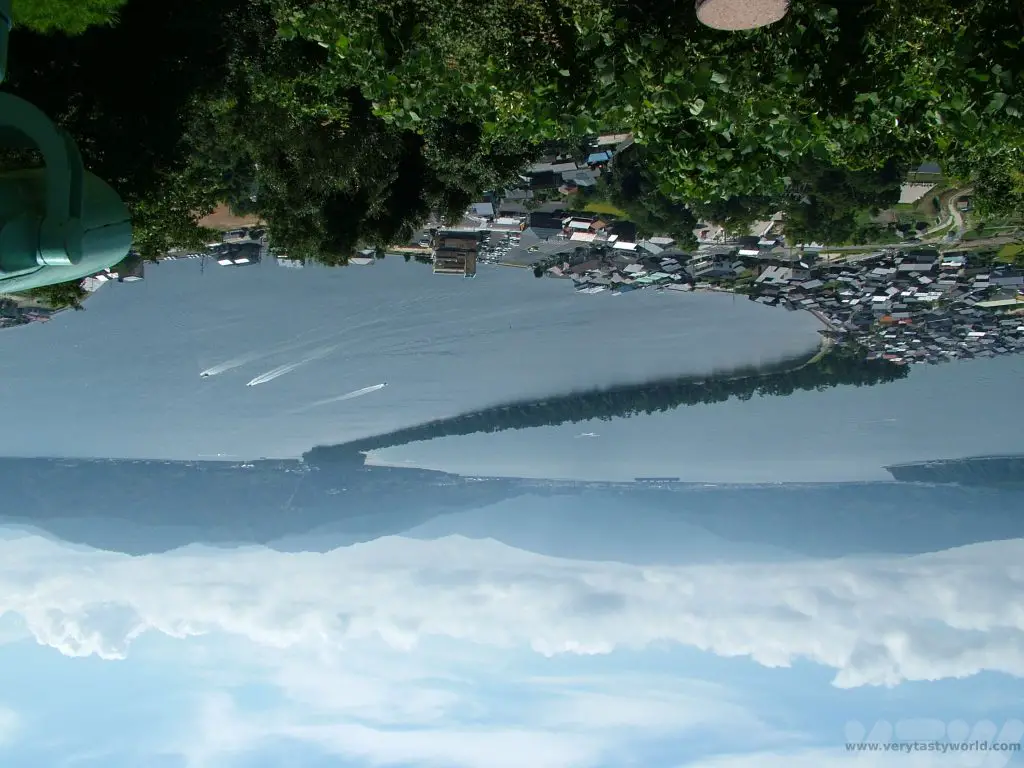
It’s great fun to watch other visitors enjoying themselves – everyone has a good laugh as they bend over to view.
There is a restaurant at the top of the viewing point area. As with most restaurants in Japan, the food is tasty and wholesome. We had chirashi sushi (a rice bowl with prawn, squid, salmon roe and shredded omelette) and udon noodles, accompanied with tempura and washed down with a nice cold beer. All enjoyed with the most delightful backdrop.
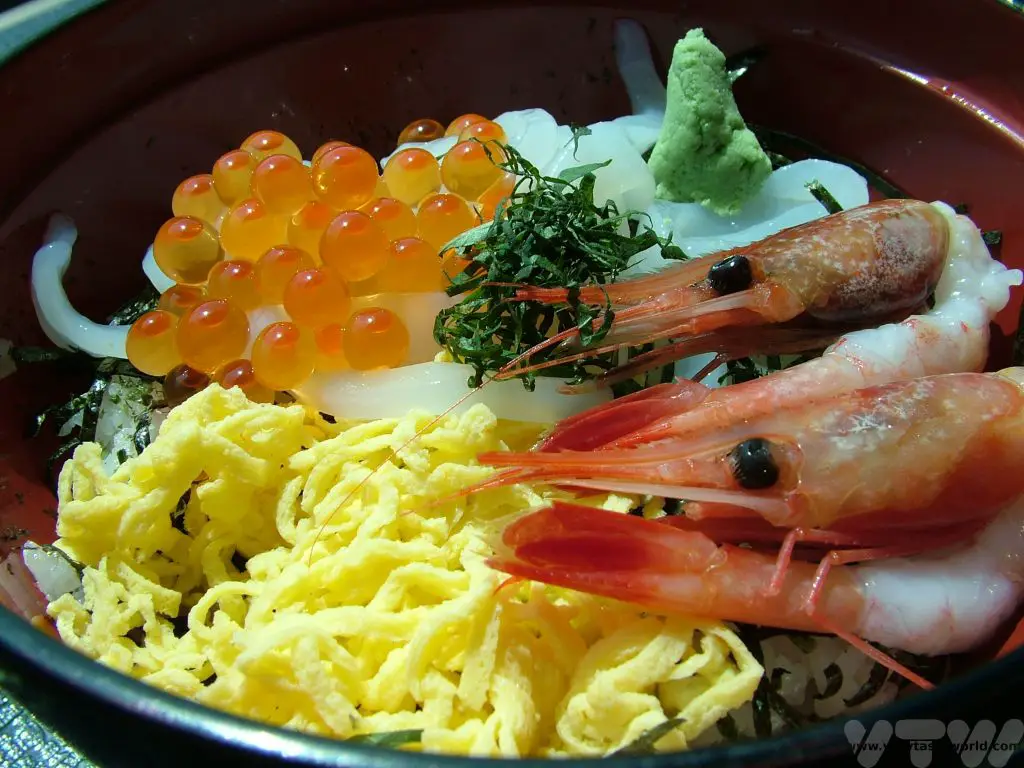
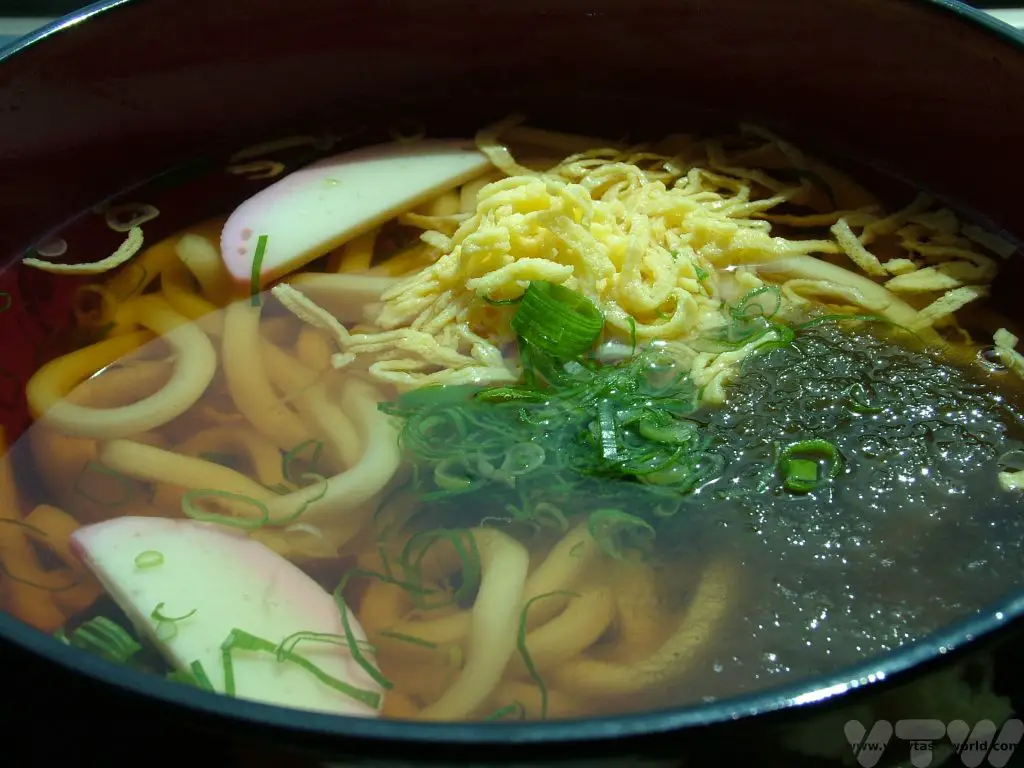
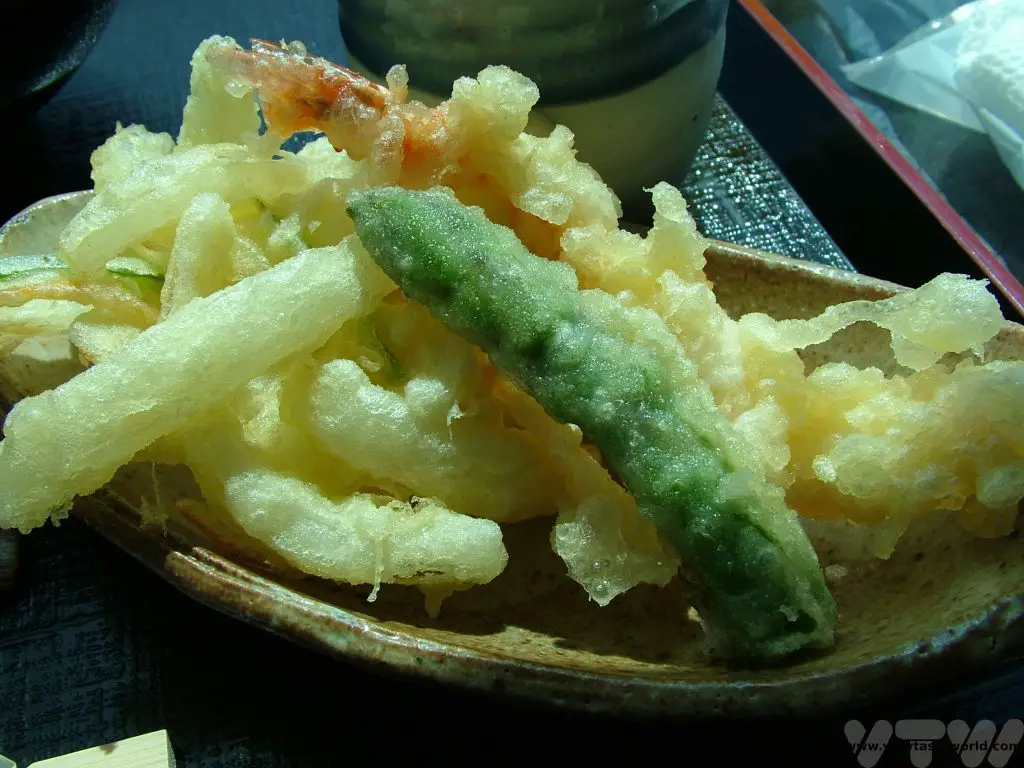
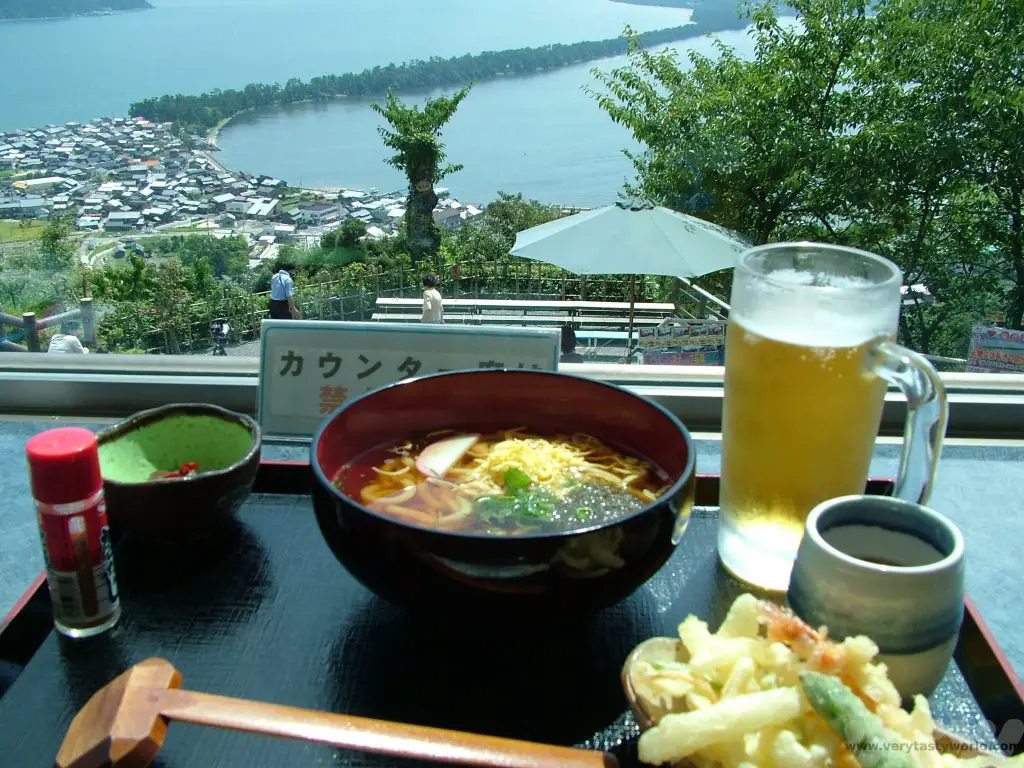
Three amazing places, three spectacular views. But these are the daytime views. Japan also has three night-time views. Actually, there are top three gardens, castles, mountains, sacred sites, hot springs, festivals and many, many more.
But that’s for another time.

- Recipe: Simmered Shiitake Mushrooms
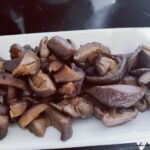
- How to Use Public Transport in Japan

- RECIPE Oyakodon Donburi

- Planning a Trip to Japan
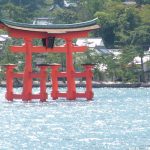
- The Makanai: Cooking for the Maiko House
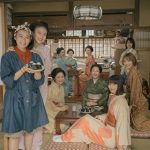
- Setsubun Food – Bean Throwing Day
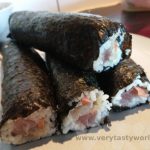
- The Gassho Farmhouses of Rural Japan
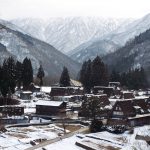
- Recipe: Japanese Simmered Pork Belly – Buta no Kakuni

- RECIPE: How to Make Umeboshi

Nepal Momo FOMO
It is possible to stay in Buddhist monasteries when visiting Nepal. The Neydo Monastery is located about half an hour’s drive from Kathmandu (once you manage to leave Kathmandu – the traffic can be incredibly busy). It offers simple accommodation which is basic but clean as well as an evening meal and breakfast. If you get up early enough you are welcome to watch the monks’ daily worship as they chant from religious texts accompanied by a variety of instruments. Just enter the temple quietly and sit on one of the mats provided at the back of the room. Naturally no photos are permitted inside the monastery’s prayer hall.
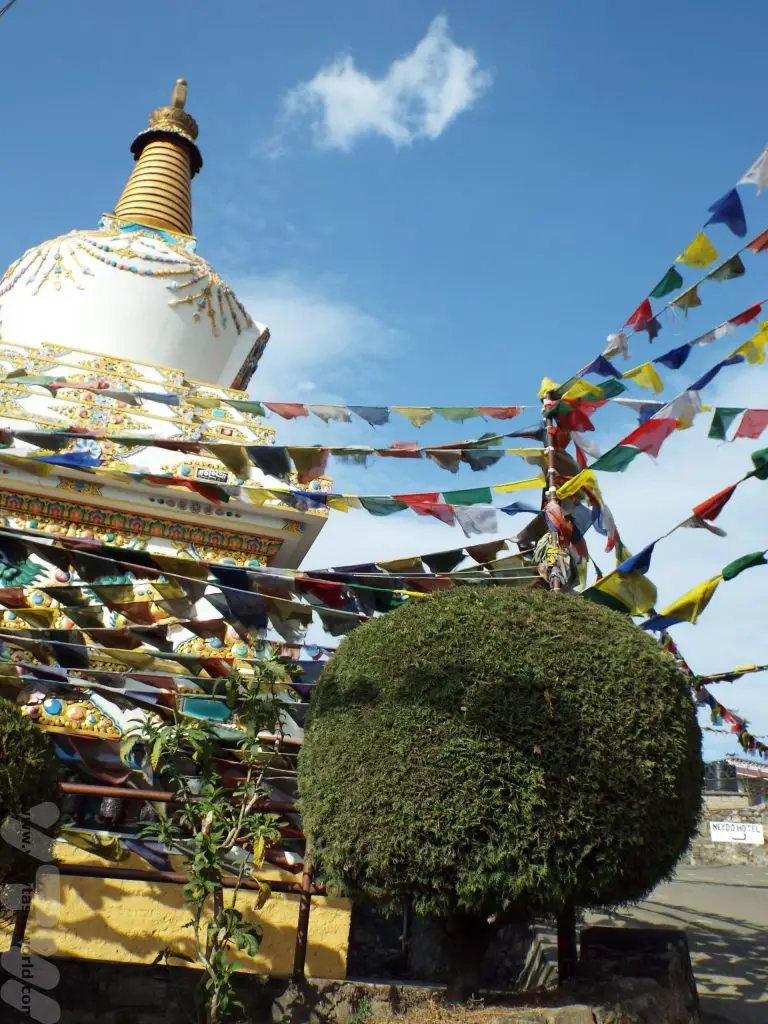
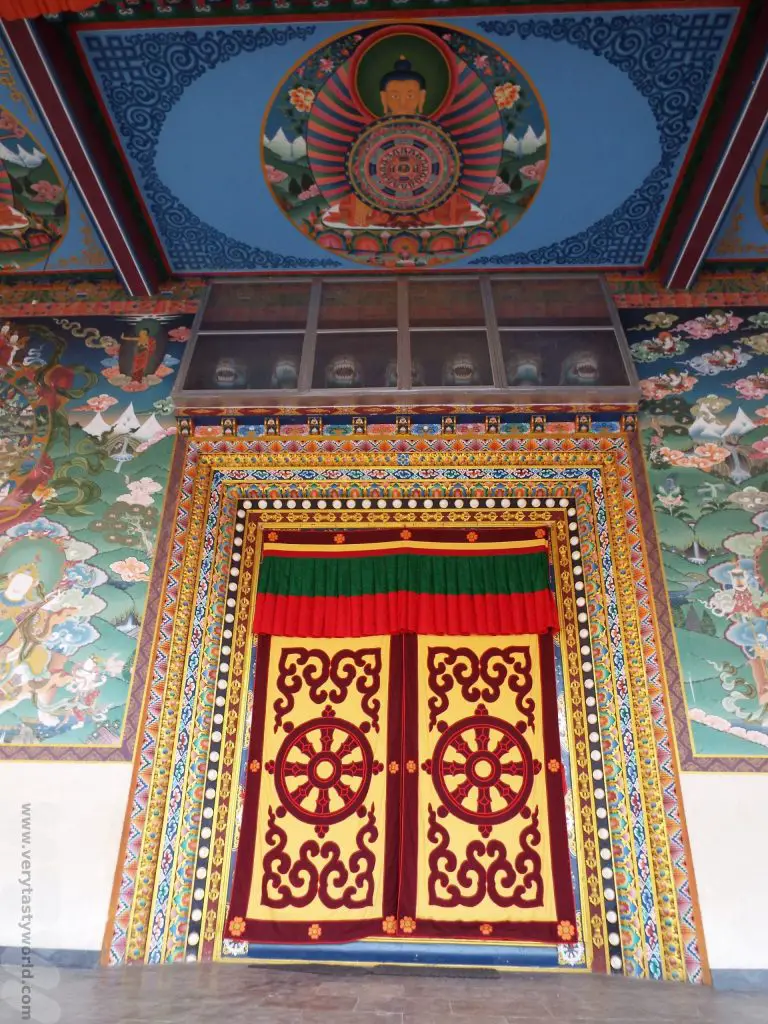
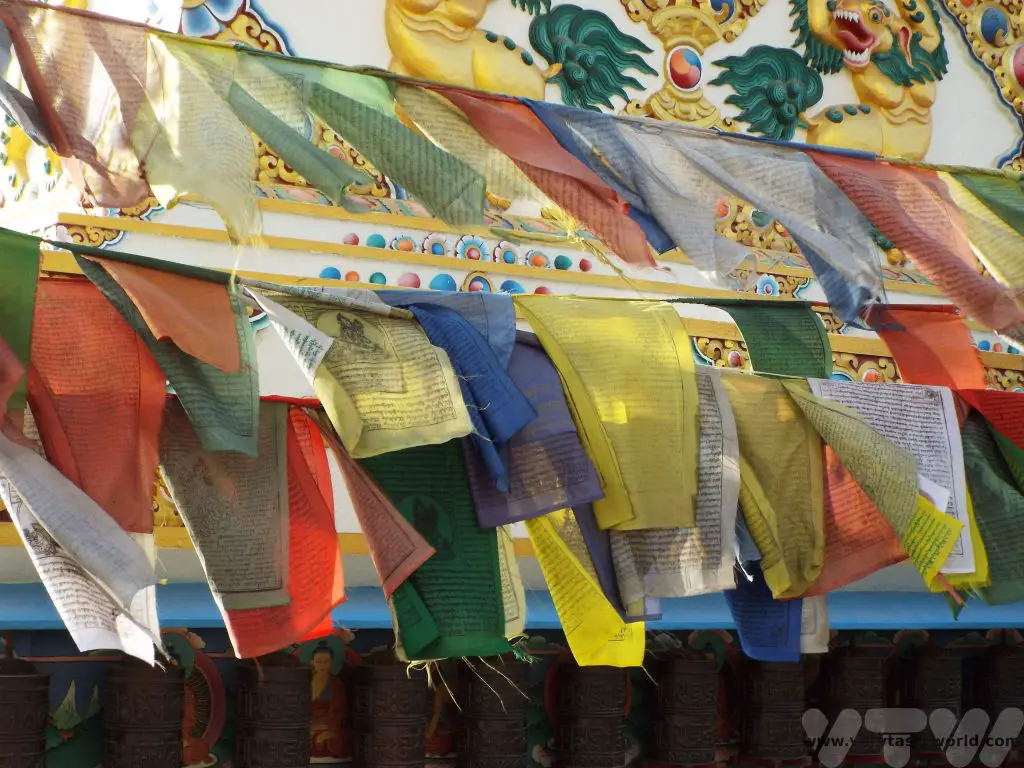
Dinner – Nepal Momo
The evening meal on offer was momos, which are delightfully delicious dumplings, basically a flour and water dough filled with meat, vegetables or cheese. They are usually steamed, often over a bowl of flavourful stock, but can also be pan fried or even deep fried. They are often accompanied by a dipping sauce, something akin to a chutney.
These were vegetable momos with a mild savoury dipping sauce accompanied by a light soup.
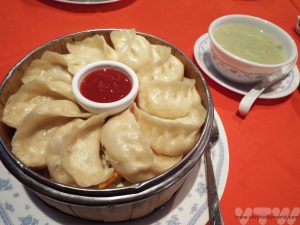
Nepal momos are so popular that you will even see fast food dumpling outlets, especially in Kathmandu. These often offer set meals – you can order via a picture menu just as you would at a burger bar. During our trip to Nepal we had eaten plateful upon plateful of the delicious little darlings, but it was on our last day – in one of these restaurants – that we realised that we had been eating them all wrong! Maybe it’s because we’re British, we were trying politely to take a delicate bite of a momo each time we ate one. However, a friendly local, who kindly hid his appalled expression when he saw us daintily eating momos, explained that you should always eat them whole.
The reason? As the momos steam the juices from the filling create a little soup inside the dumpling shell. Bite into part of the momo and the soup drains out – lost forever. Eat the whole momo and the flavour of the broth fills your mouth with soupy deliciousness.
Just make sure the momos have cooled down a little before scoffing.
Related Posts You May Enjoy
A Day Trip Around Lake Akan Hokkaido
Japan’s northernmost main island of Hokkaido is a nature-lover’s paradise. To the east of the island, just north of the city of Kushiro is the Akan National Park, named for the beautiful lake in the region. We spent a day in the Lake Akan Hokkaido park area. You need transportation to get around this area as many of the attractions are some distance apart.
Eastern Hokkaido is a popular holiday region and because of the volcanic activity there are plenty of onsen – hot springs resorts. Lake Akan itself was formed inside a caldera when lava cooled and formed a dam 6000 years ago. It’s a large lake of around 14 square kilometres and is known for its clear water. There are all sorts of activities in the area, including boat trips across the lake.
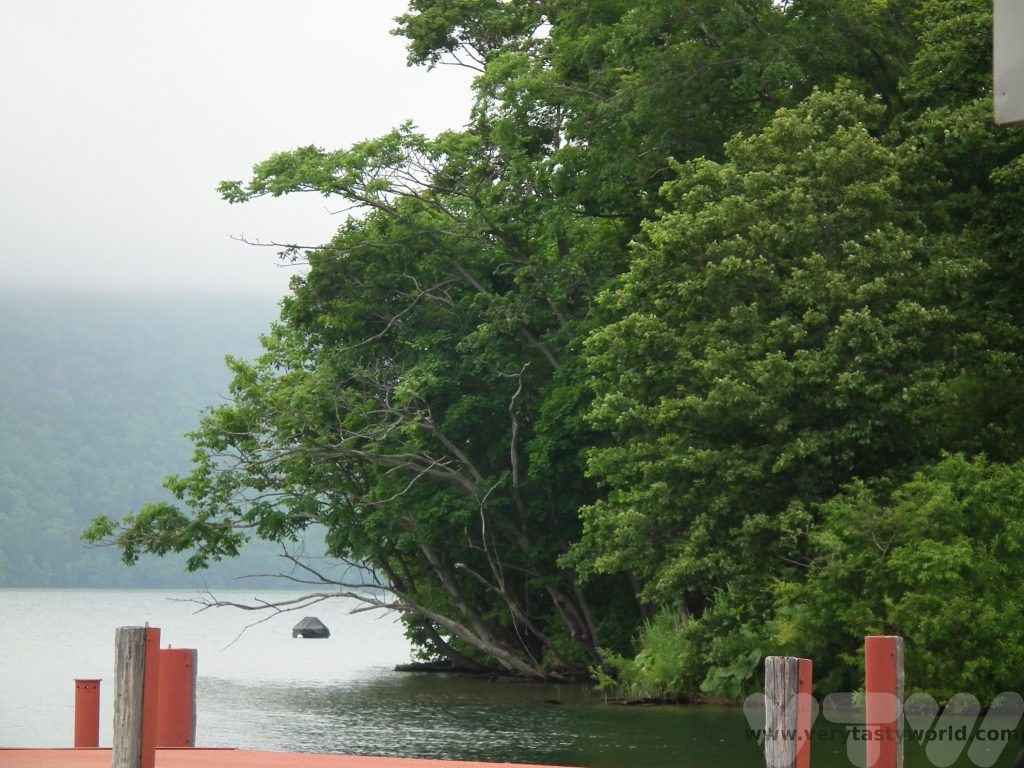
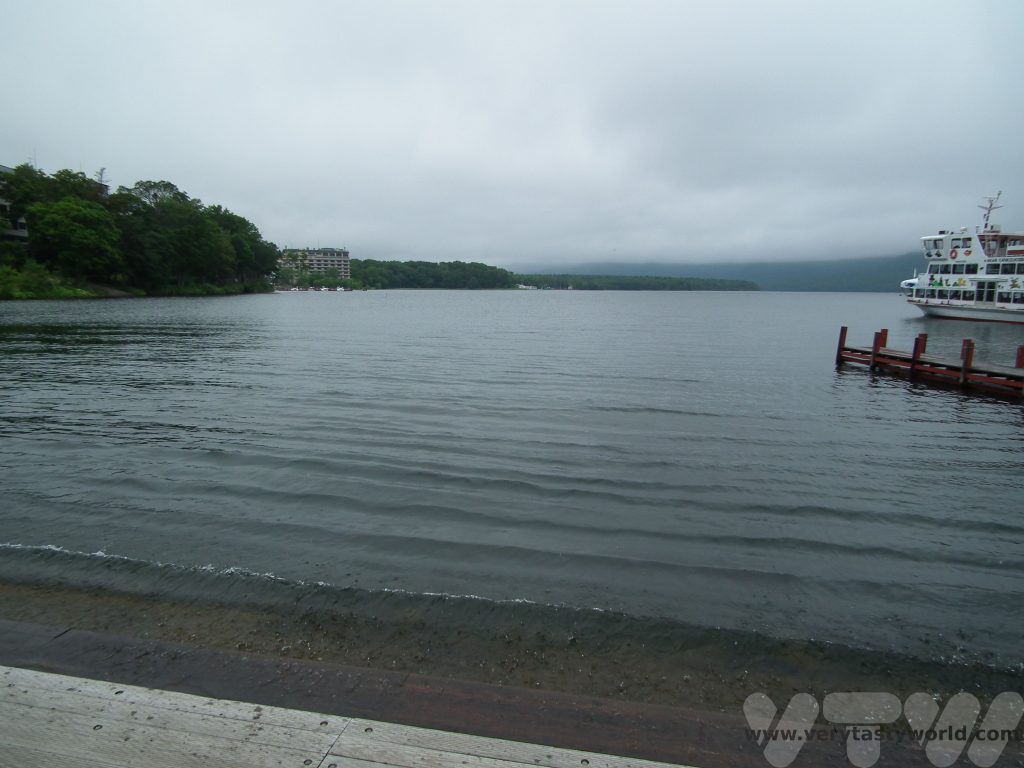
There is a very pretty waterfall close by.
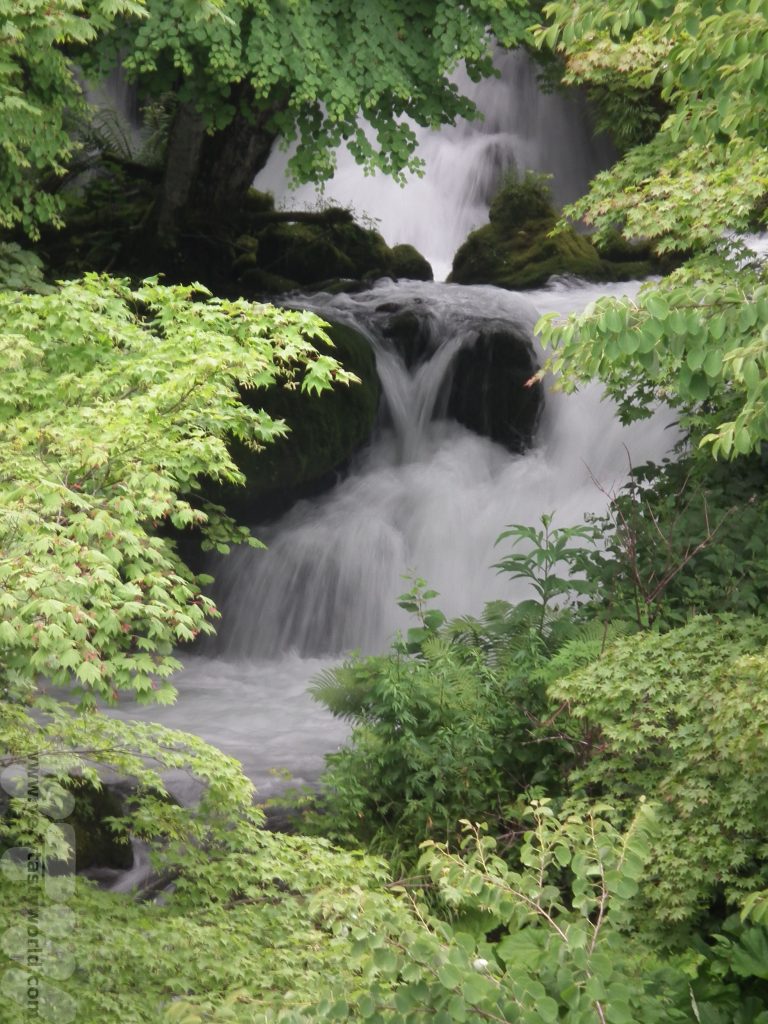
Akan is not the only lake in the national park. Lake Mashu is also renowned for its beautiful clear water. That’s if you can see it. Unfortunately we visited on a particularly vile day – when we arrived it was raining and misty and there was no view of the prestigious lake to be seen. Hey ho. Can’t help the weather. This is what it looks like on a sunny day.
We did manage to see the sign though.
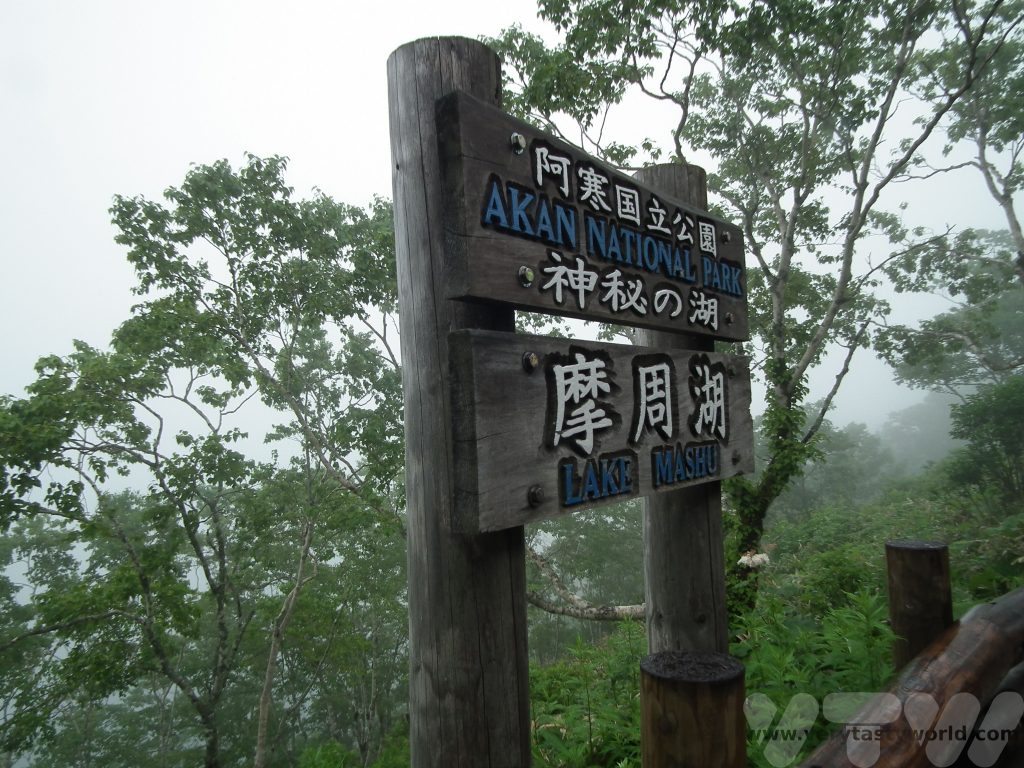
To make up for the lack of view, we decided that lunch would be a good option. The region specialises in soba noodles.
Mashu soba is made from buckwheat noodles. The noodles are made that morning, so are really fresh. They are cooked, rinsed in cold water and then served on a bamboo mat. Pick them up with chopsticks, dip into a savoury, refreshing dipping sauce and devour. Wasabi and negi (like spring onions) are available to add an extra dimension of heat and crunch. And don’t forget, it’s perfectly acceptable to slurp your noodles.
If you’re hungry you can eat mashu soba as part of a set meal. Vegetable and prawn tempura, miso soup, pickles and a cup of green tea make for a veritable feast.
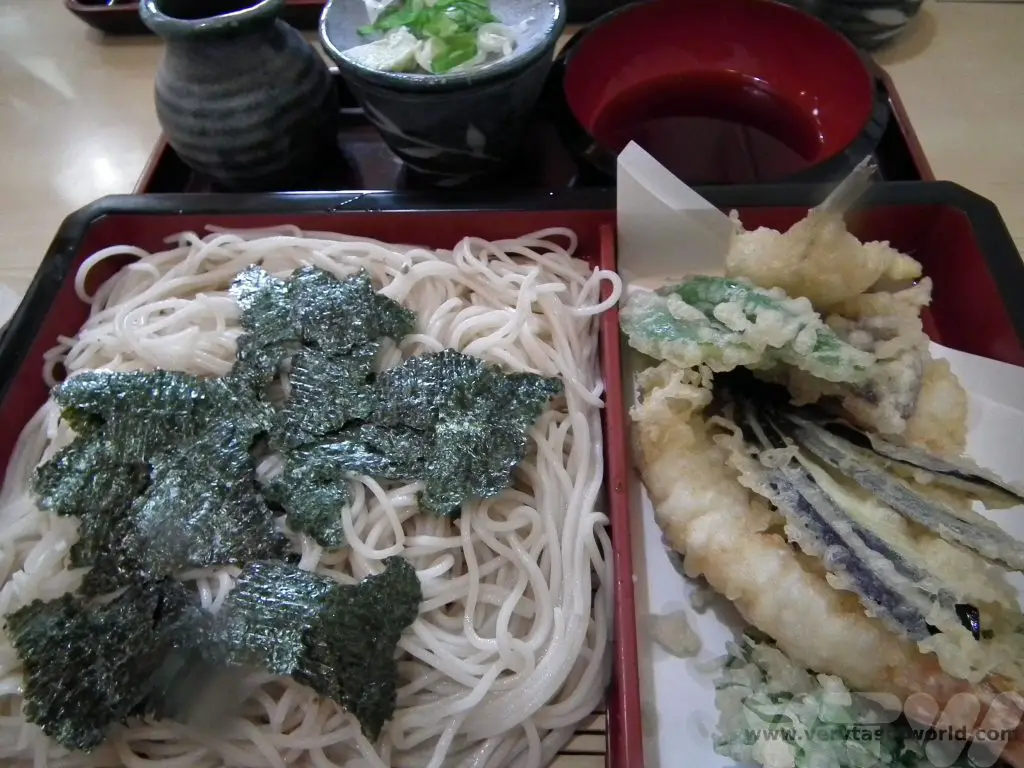
You might think that cold noodles on a rainy day might not be the best combination for maximum enjoyment but actually it works. Especially if your next stop is to a hot spring foot spa. Simply dip your toes in the hot water and ignore the rain… (we’ll spare you the pictures of our feet in the water).
There are also some other interesting places to visit in the area.
The Iozan volcano area (Iozan literally means ‘sulphur mountain’), with its gloriously yellow sulphur deposits and eye-watering smells if you get too close. You are free to walk around on the footpaths, although areas are off limits for safety reasons. You can also buy eggs cooked using the natural heat of the mountain at the visitor centre.
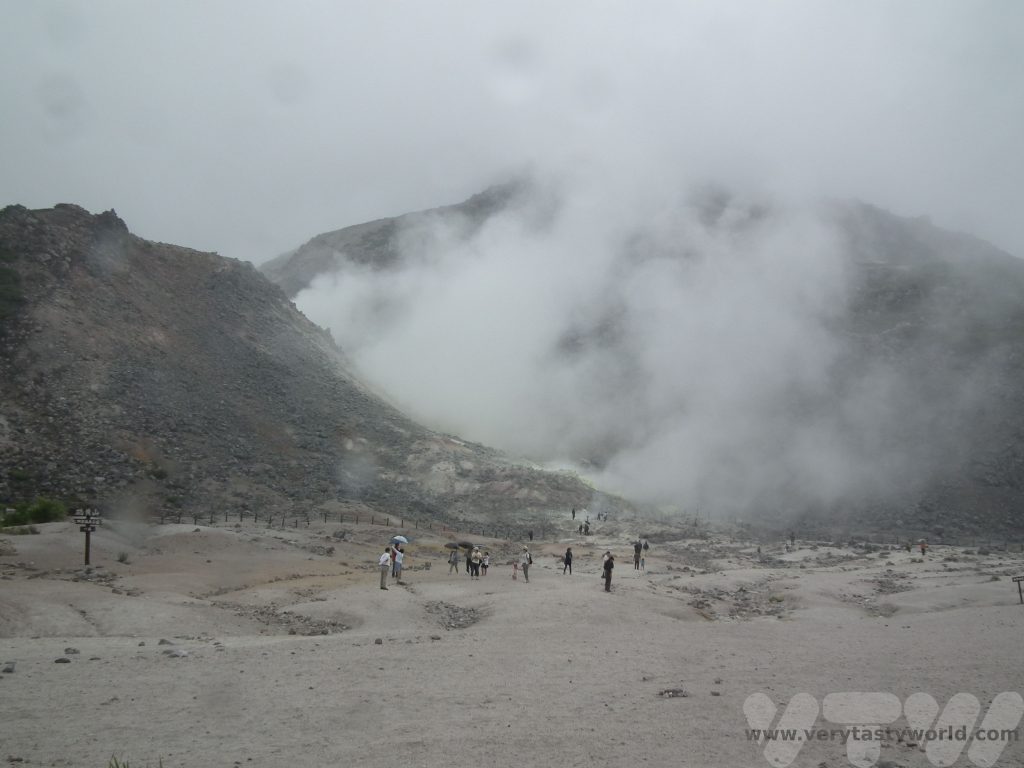
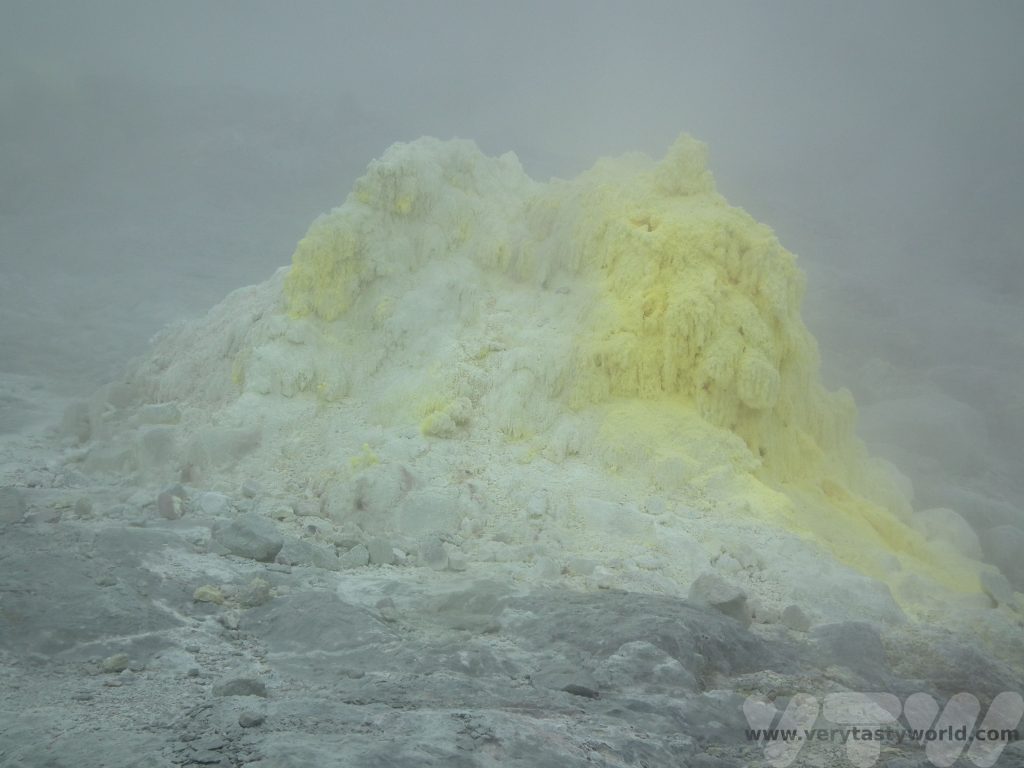
The Kushiro wetlands.
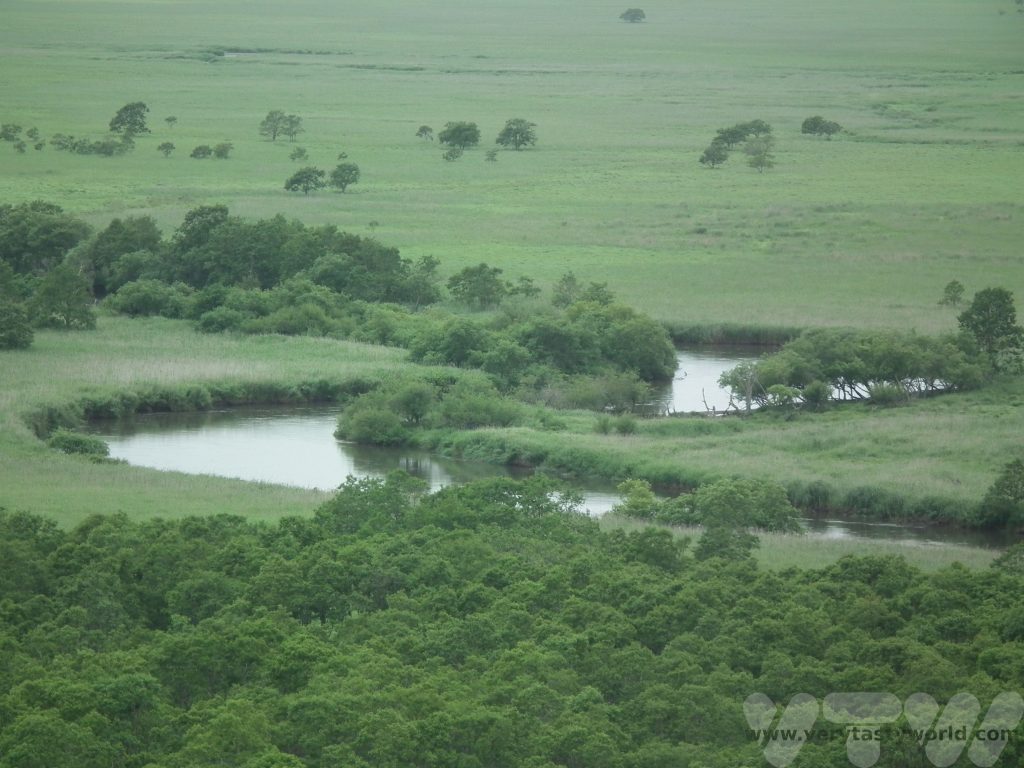
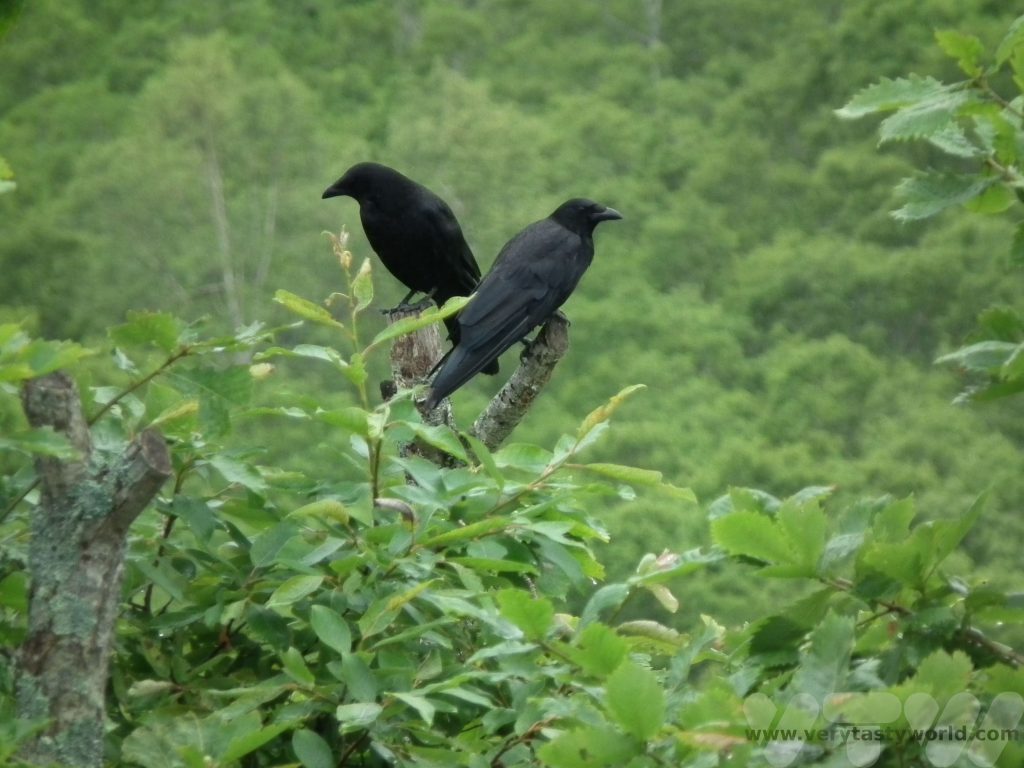
And the Akan International Crane Sanctuary. The red crowned cranes are amongst the rarest cranes in the world but many reside on the eastern side of Hokkaido. They are best known for their courtship dancing ritual, especially during winter. The sanctuary provides a feeding station for wild crane visitors but also homes a number of captive cranes in a natural environment.
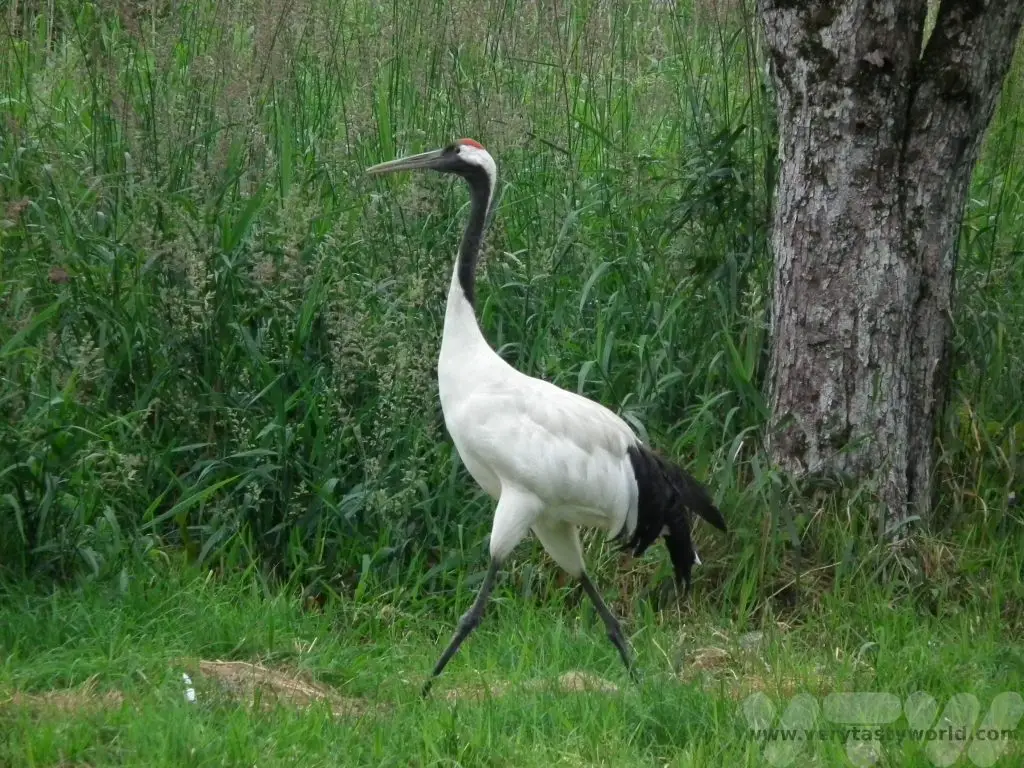

- Recipe: Simmered Shiitake Mushrooms

- How to Use Public Transport in Japan

- RECIPE Oyakodon Donburi

- Planning a Trip to Japan

- The Makanai: Cooking for the Maiko House

- Setsubun Food – Bean Throwing Day

- The Gassho Farmhouses of Rural Japan

- Recipe: Japanese Simmered Pork Belly – Buta no Kakuni

- RECIPE: How to Make Umeboshi

Icelandic Lobster in Hofn
Iceland is a wonderful destination to visit and, while many visitors fly into Reykjavik to tour the Golden Circle and bathe in the Blue Lagoon, the country has many other beautiful places to see further afield. We toured southern Iceland for a week in winter, after picking up a hire car at Keflavik airport. It meant we could travel at our own pace, so that we could enjoy the spectacular sights that the country had to offer. Being an island, the local cuisine has a lot of seafood to offer and Icelandic lobster was definitely something we wanted to try.
Having driven in a ‘smile’ along the south coast of the island we arrived at Skaftafell and enjoyed some walking in the area. We were blown away by the magnificent and beautiful Jokulsarlon glacier lake.
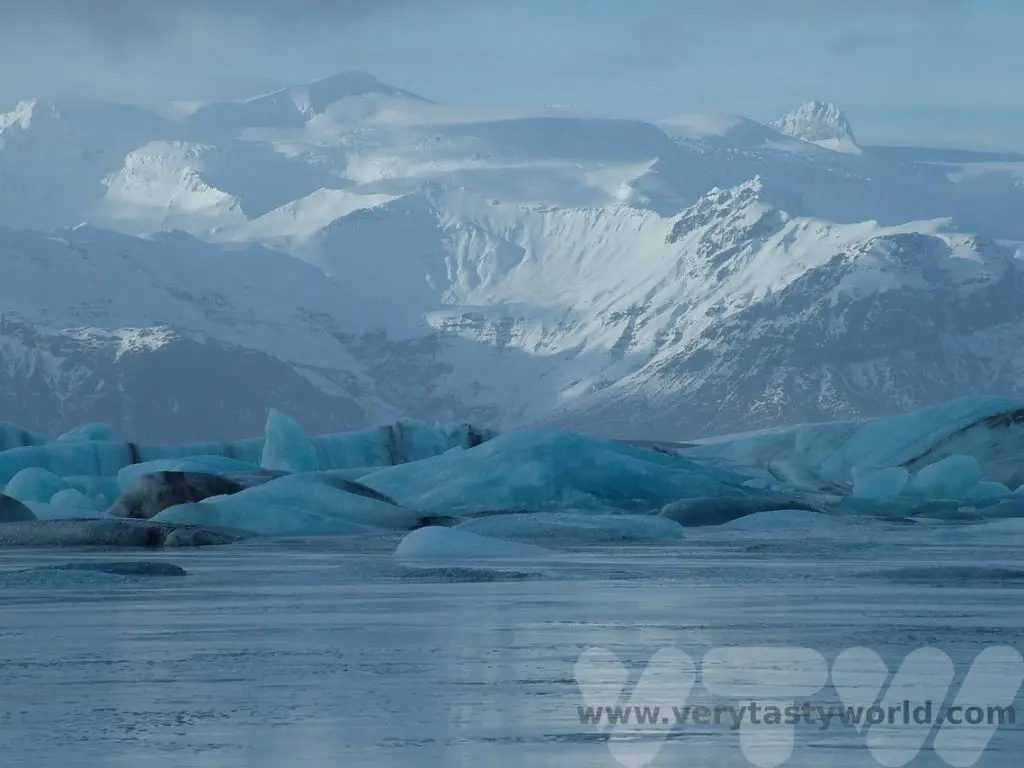
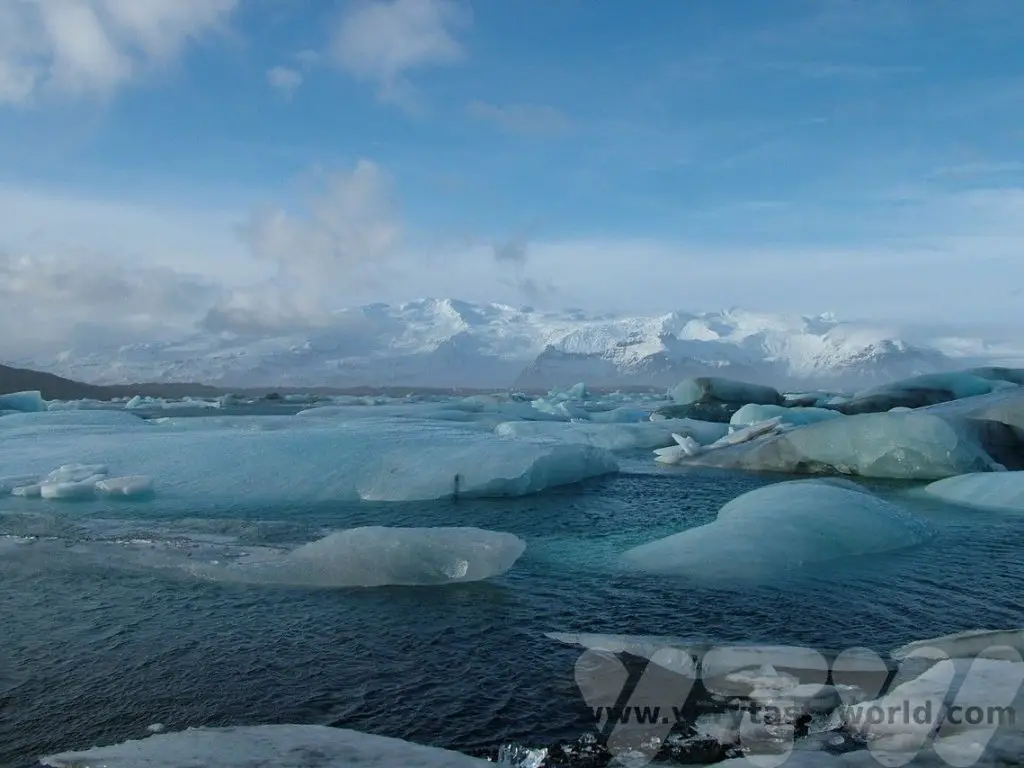
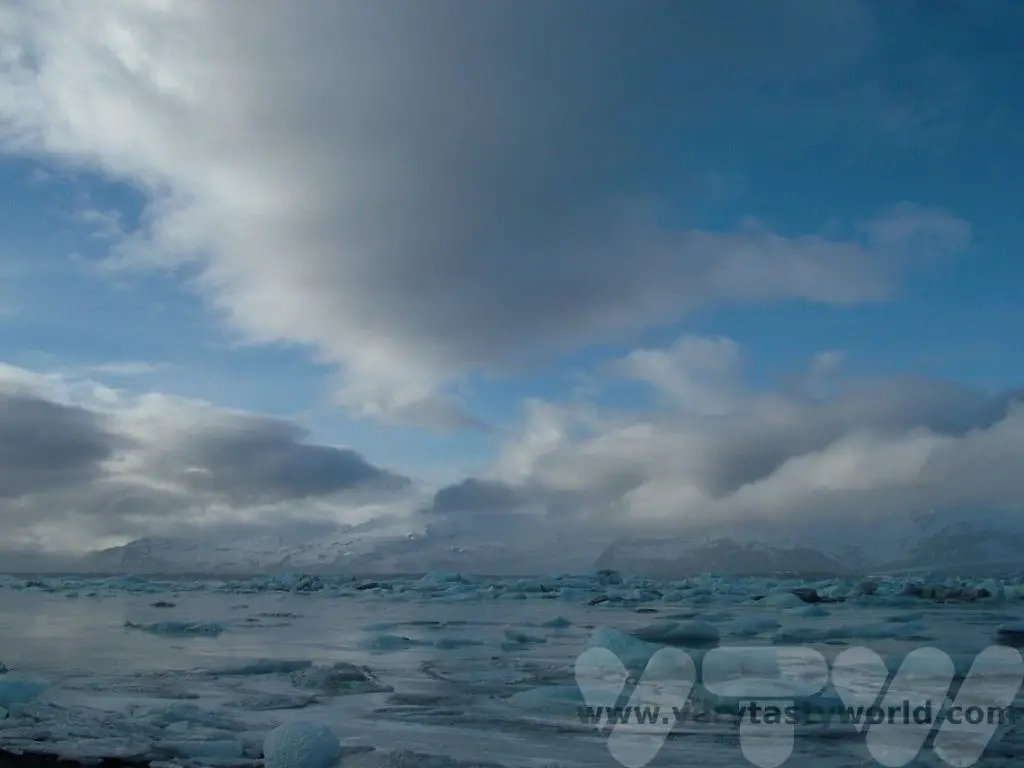
The Harbour of Hofn
In the south-eastern corner of Iceland lies the fishing town of Hofn, located around 450km from Reykjavik. The name means ‘harbour’ in Icelandic and it lies on a peninsular inside one of the country’s natural harbours.
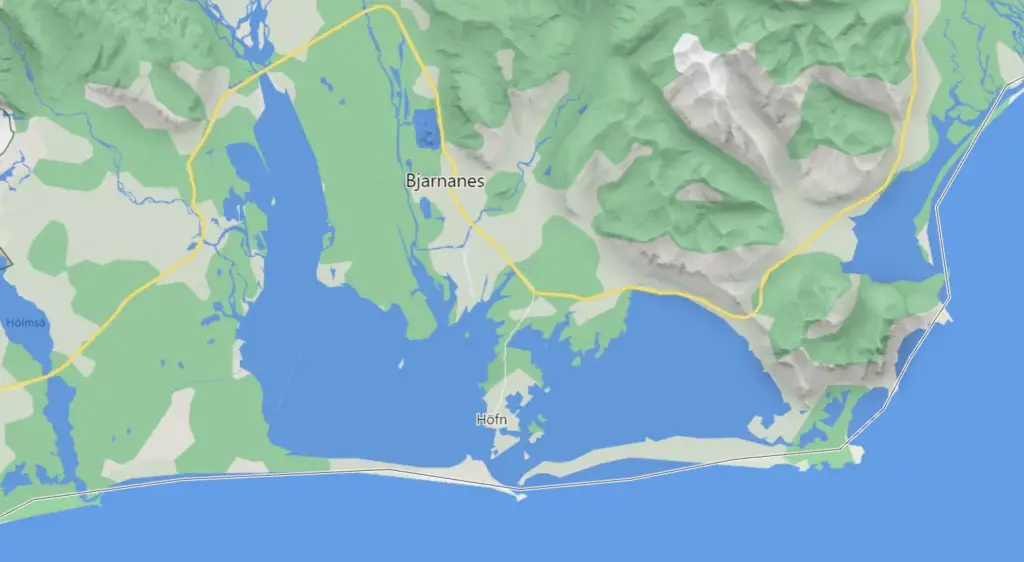
It’s a small, town, at the end of Route 99, which is just off Iceland’s main ring road, Route 1.
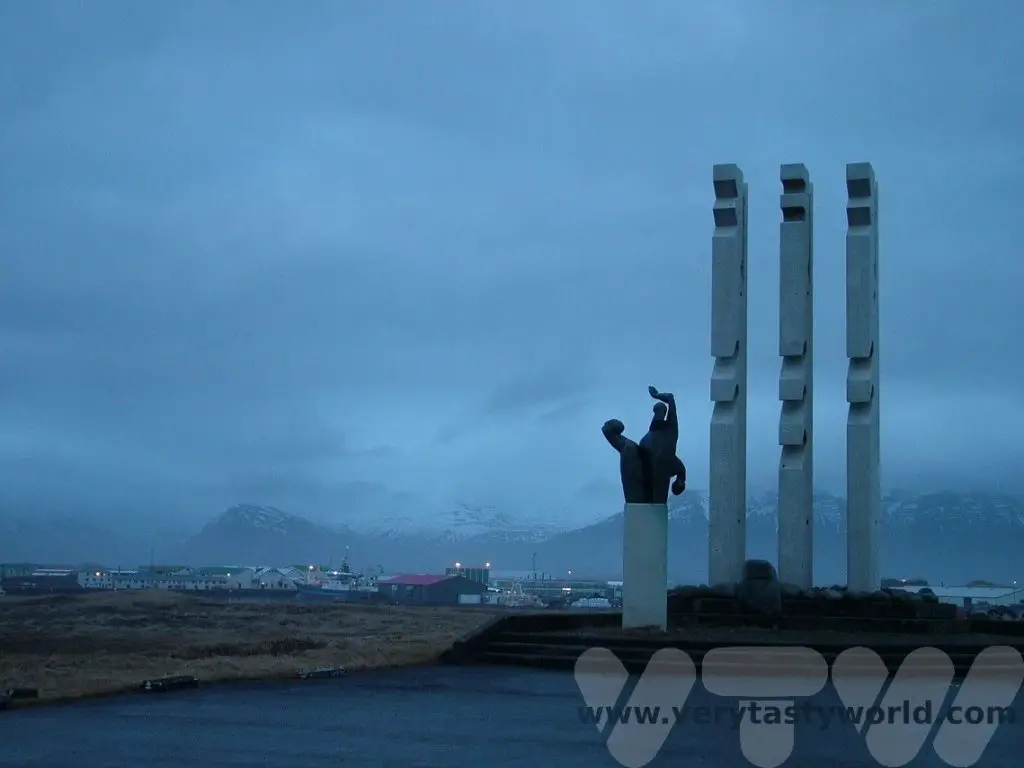
Because we had spent the day exploring the glaciers in the area, it was approaching dusk when we arrived.
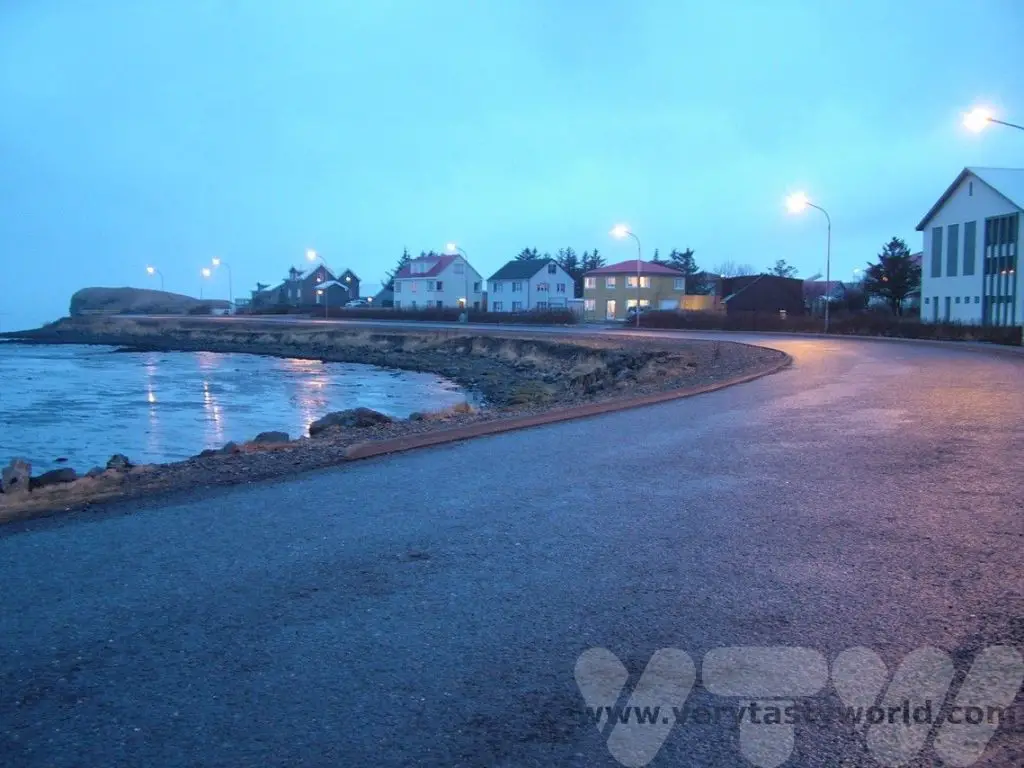
It’s very much a working town and had a great view of the harbour where we could see the boats coming in.
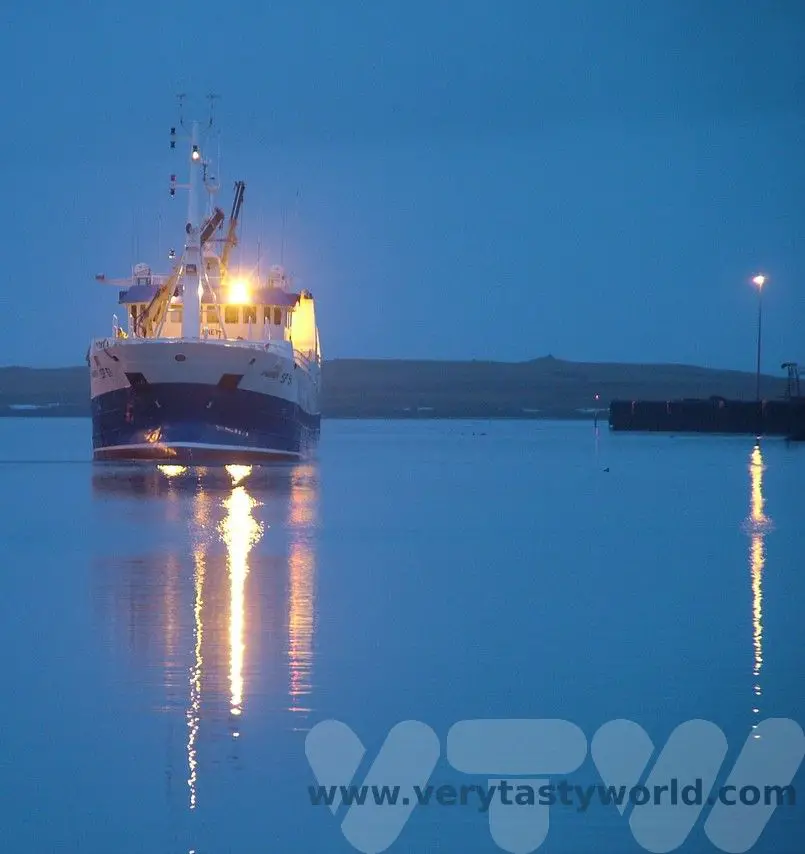
Icelandic Lobster in Hofn
Hofn is the lobster capital of Iceland and has a number of restaurants where you can eat leturhumarinn or Icelandic lobster. In fact, Hofn is so famous for its seafood that the town holds a lobster festival every July.
We hadn’t chosen to stay in Hofn but were keen to visit in order to try the Icelandic lobster as they are considered to be a delicacy. There are no actual lobsters to be caught around Iceland’s waters, so the term lobster has been applied in Iceland to describe langoustines, also known as Dublin Bay Prawns, or Norweigan Prawns. They are related to the lobster but are smaller and have a narrower body.
Iceland is an expensive country to visit and prices for food are no exception. But good value Icelandic lobsters can be found in Hofn. We discovered a local restaurant that offered a simple dish – grilled leturhumarinn in a cream sauce served with chunky slices of bread. Because of the size of the Icelandic lobsters you only eat the flesh from the tail – the claws are too small to extract any decent quantity of meat.
We were offered a plate piled high with lobster tails. They taste delicious – succulent and sweet – it was a real treat.
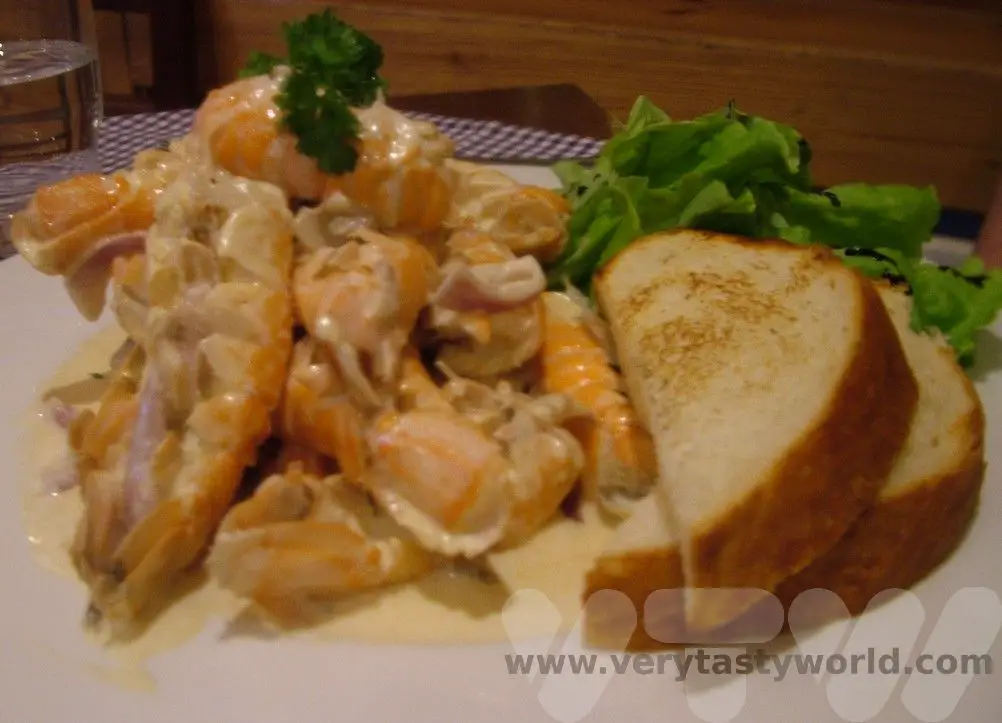
Related Posts You May Enjoy

Osaka Okonomiyaki – As You Like It
Osaka okonomiyaki is often described as the Japanese equivalent of a pancake-pizza hybrid. You can see why it would be given that description – it has a pancake-type batter based around cabbage (but don’t let that put you off) with a variety of toppings – meat, fish, egg or veggie based – to choose from.
Osaka in the Kansai region is one home to okonomiyaki, although there other regional variations. (Hiroshima, for example, uses udon noodles in the pancake batter.) The city itself is bright and bustling, full of friendly locals and has an excellent food scene. The seafood on offer – crab, fugu (puffer fish), takoyaki (battered octopus balls) – is just wonderful, as it is all over Japan.
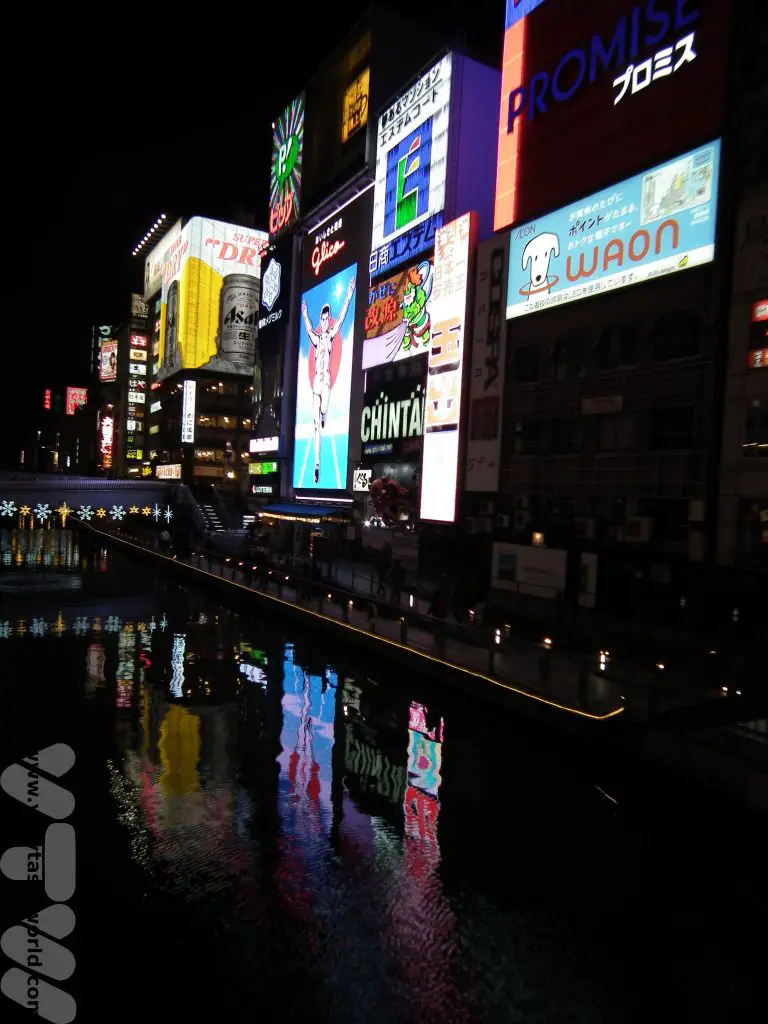
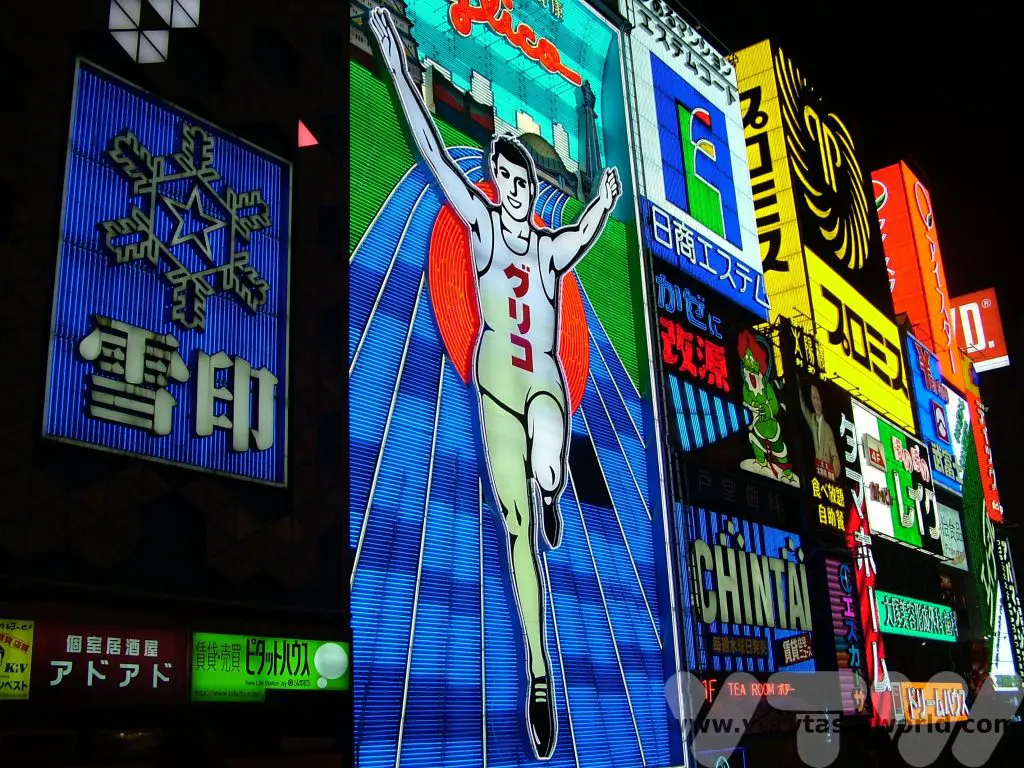
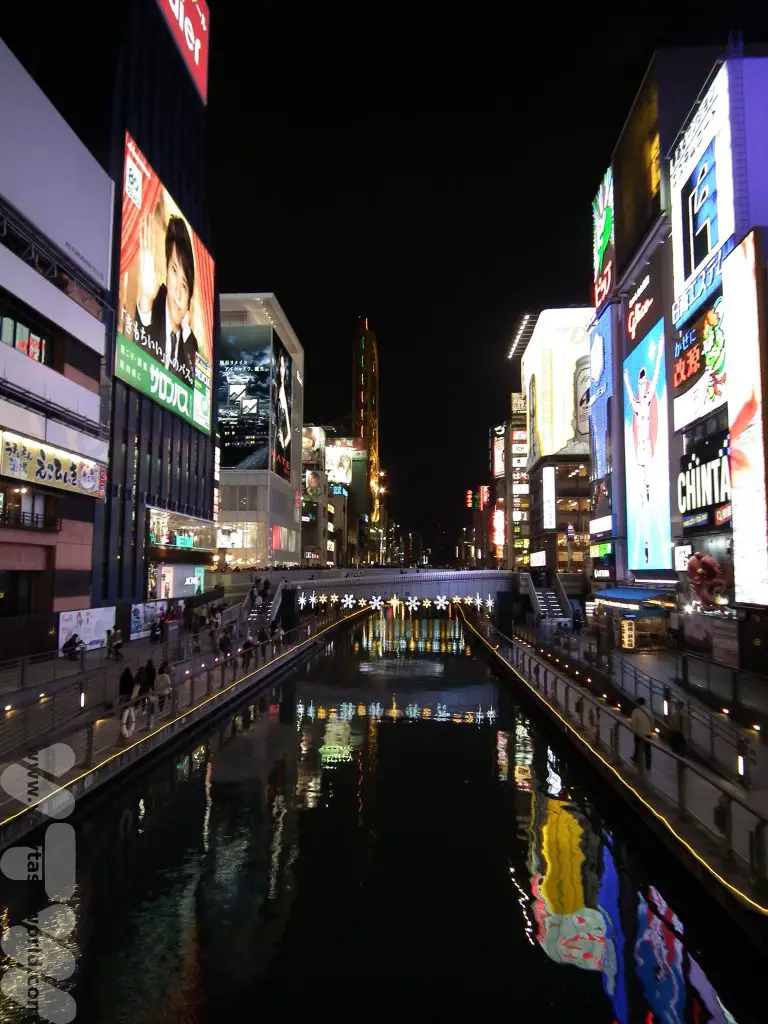
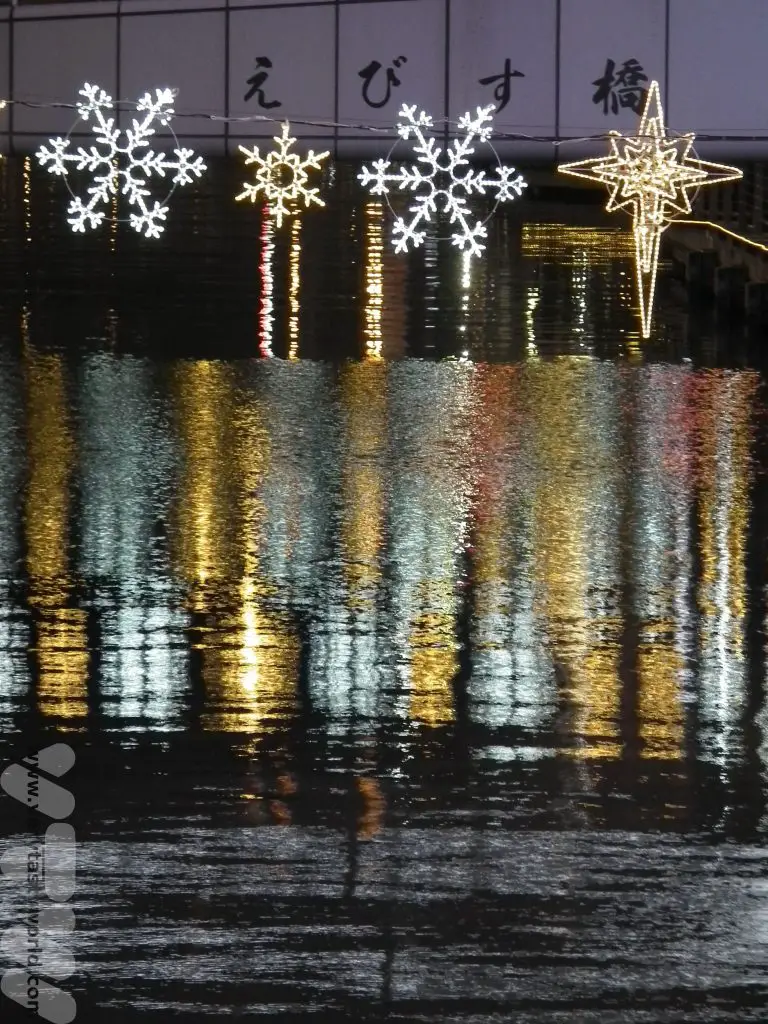
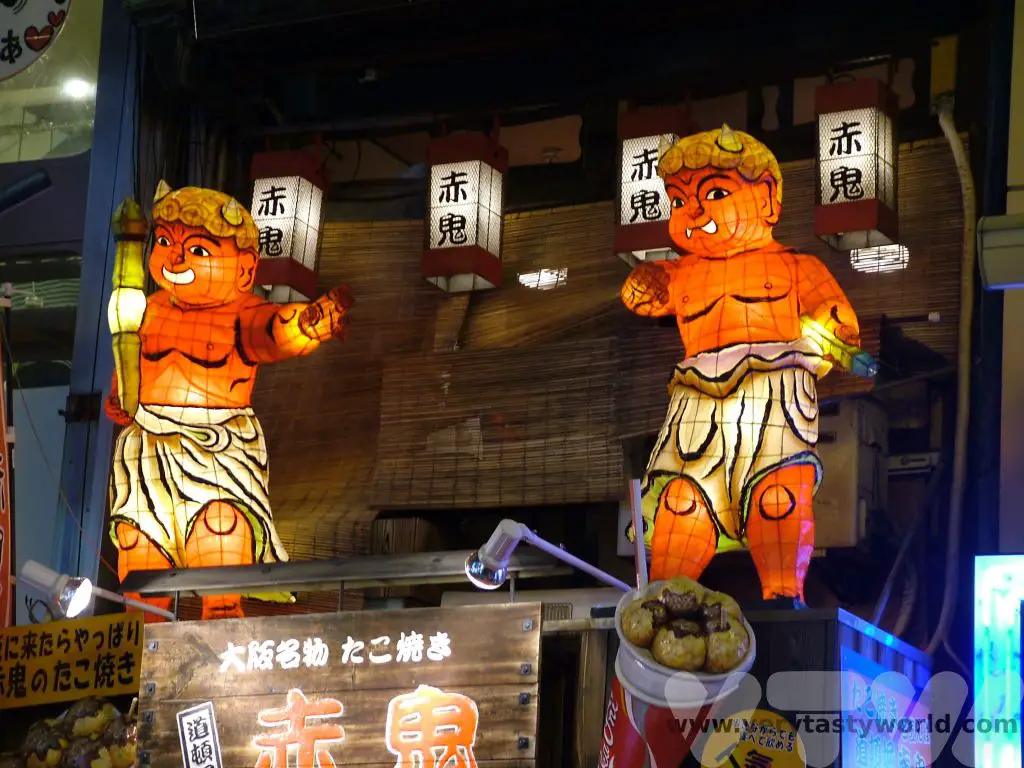
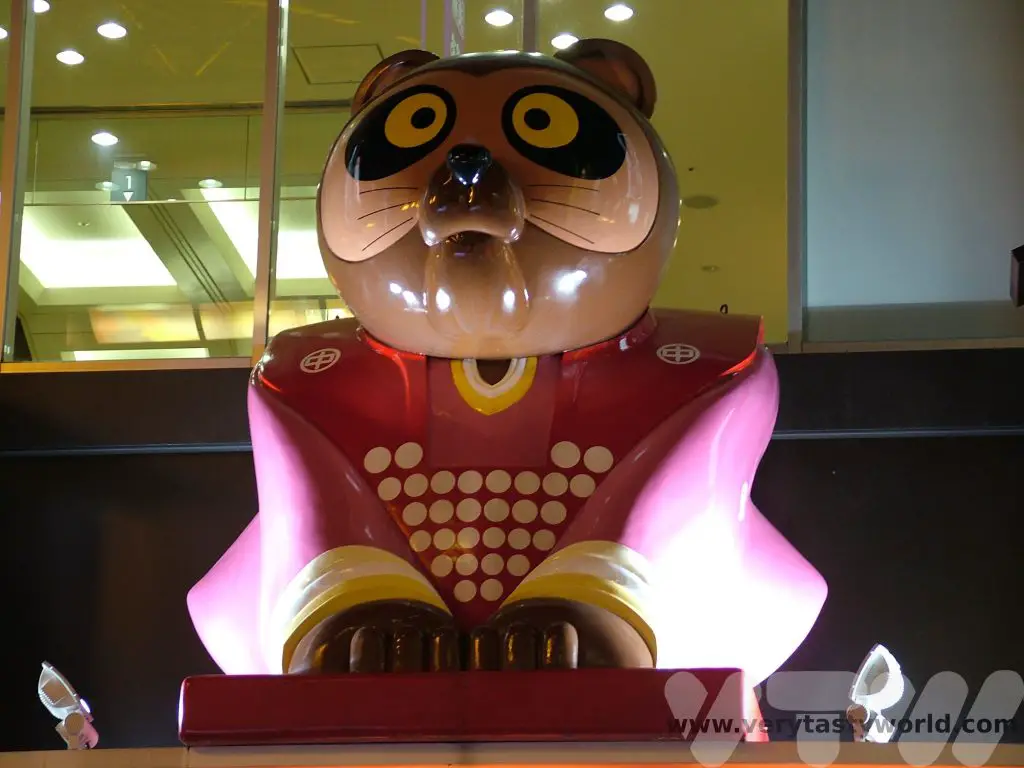
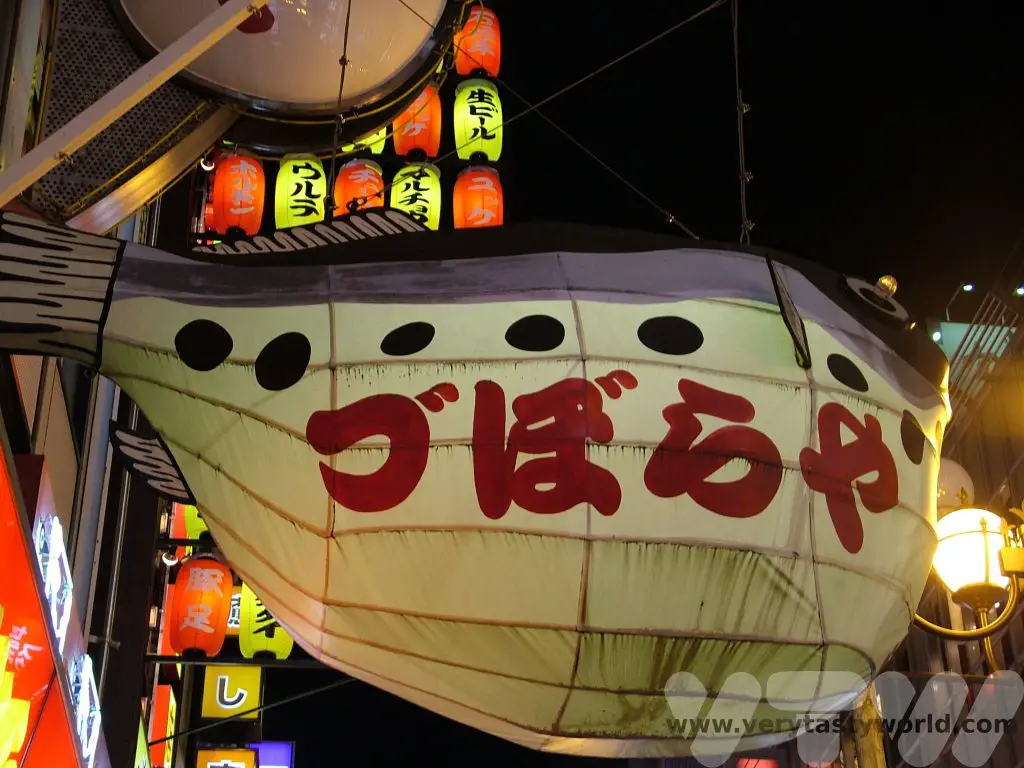
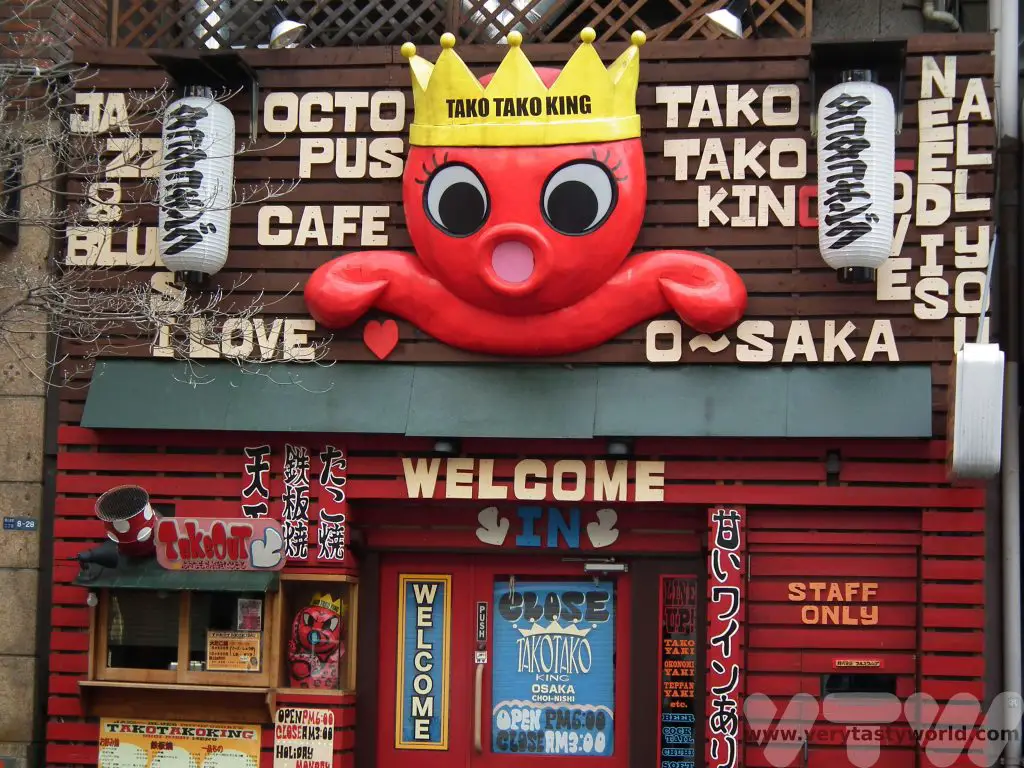
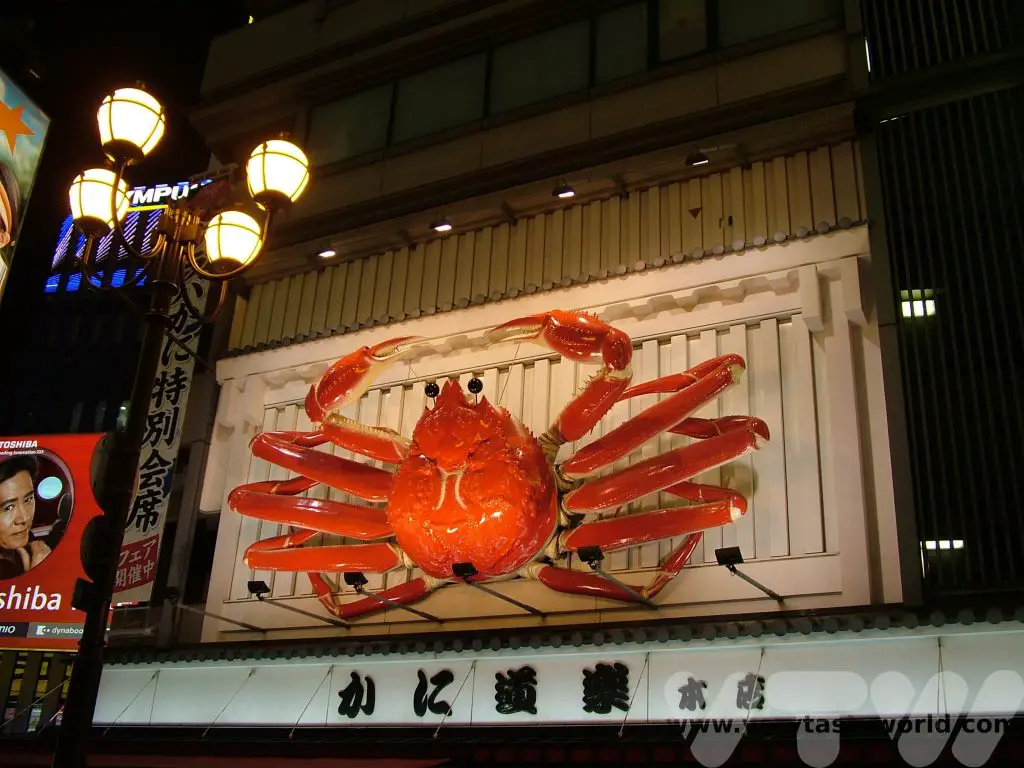
Okonomiyaki In Osaka
There are okonomiyaki restaurants all over Osaka (and indeed all over Japan). They offer a good, cheap eat, that is filling and fun. Part of this fun is that you will see your meal being cooked in front of you. In some restaurants they will even let you cook it yourself!
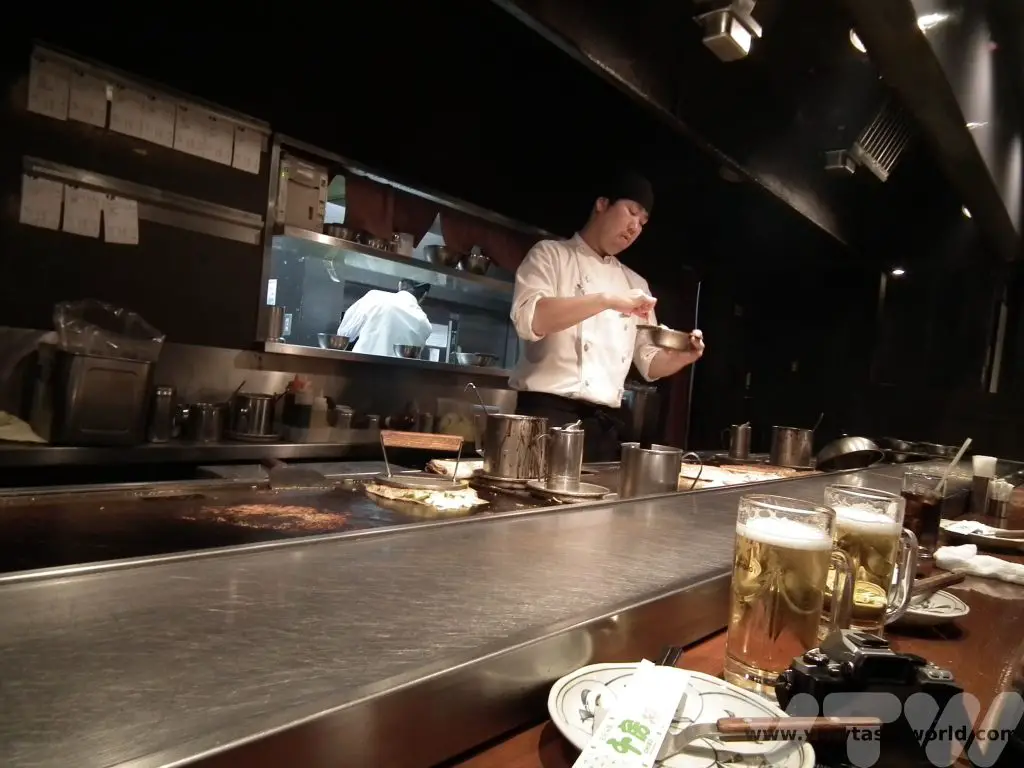
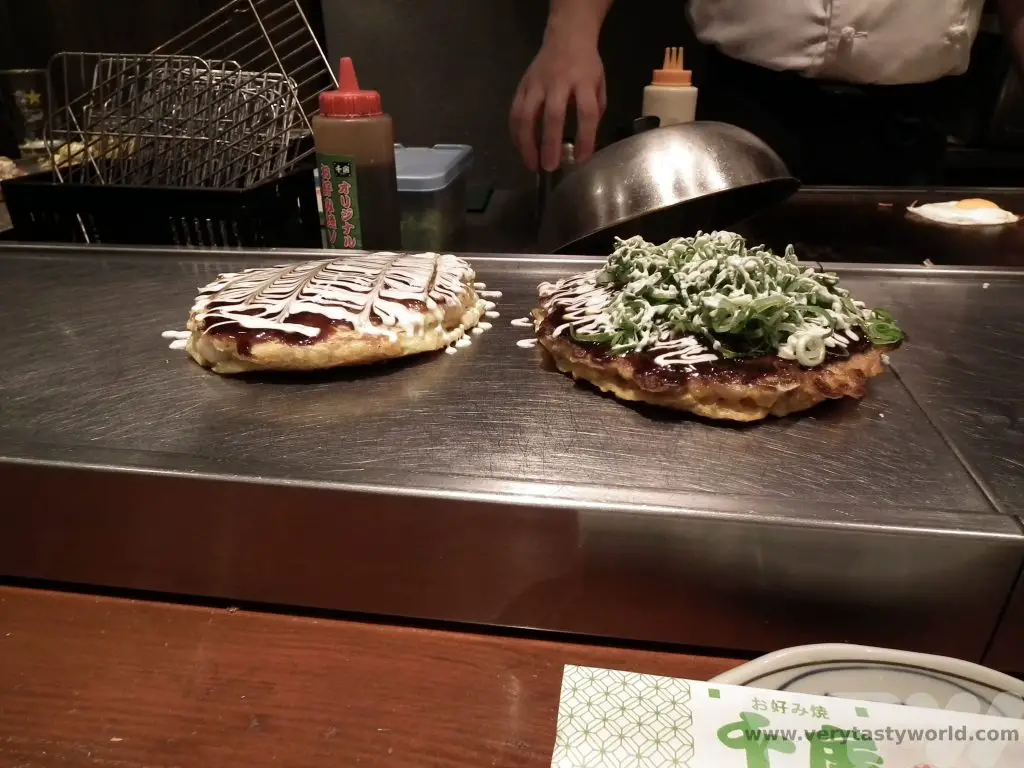
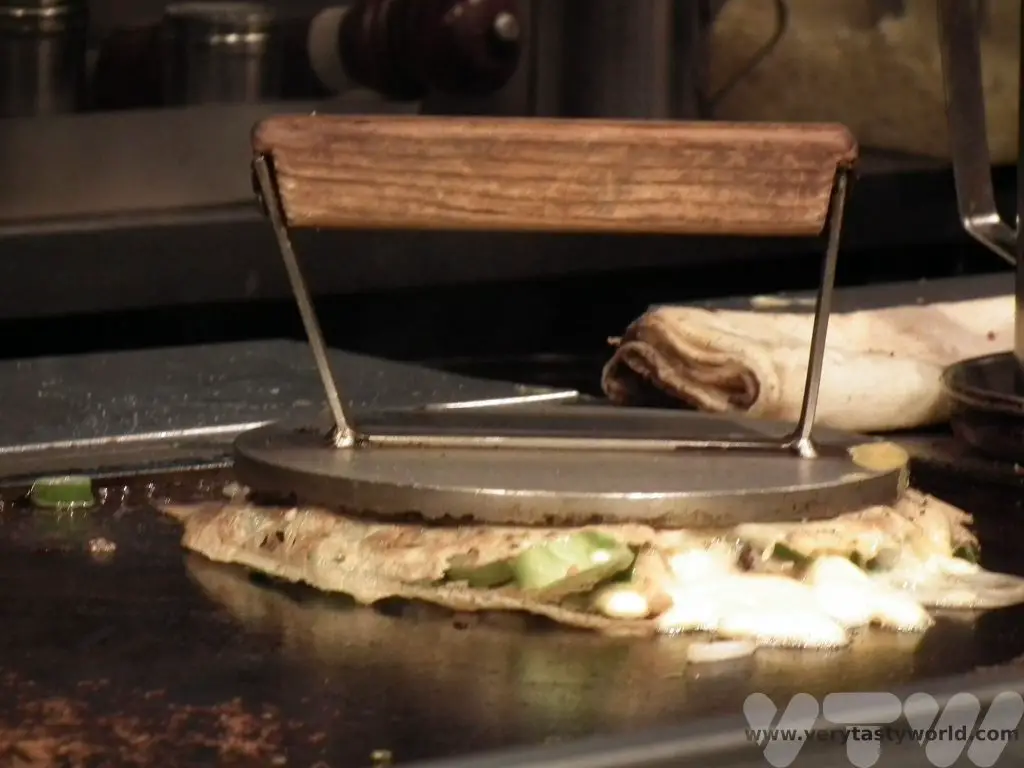
The term ‘okonomiyaki’ actually derives from ‘okonomi’ – favourites, ‘yaki’ – grilled. There are three basic elements to the dish:
The pancake base which comprises flour, eggs, dashi (stock), yam powder (optional) and cabbage. The fabulous Osaka all-female pop-punk band Shonen Knife, who have been touring since the early 1980s and are still going strong, love okonomiyaki and have a recipe for it in their Shonen Knife Land book. Naoko, the founding member of the band, recommends a cabbage cutting technique: ”Finely chop the cabbage. It should be in small square pieces maybe about 3mm long.It would take a lot of time and be a lot of trouble if you use a ruler to measure the pieces, so it’s OK to just guess.”
Fabulous Fillings
The filling can basically be anything you like – that’s where the ‘okonomi’ comes into its own. Favourite fillings can include sliced pork or beef, shrimp, squid, konnyaku (a gelatin textured food, also known as Devil’s Tongue) and vegetarians may enjoy pretty much any veg they can think of. Spicy fermented Korean kimchi is great if you decide that there isn’t enough cabbage in the dish already.
The topping is the piece de resistance which adds to both the deliciousness and the sheer joy of okonomiyaki. When asked what topping you would like, we recommend asking for EVERYTHING! Okonomiyaki sauce is a tangy brown sauce (a little like the UK’s HP Sauce), creamy Japanese mayo, chilli sauce for those who like it hot, sprinkles of dried seaweed called aonori, and katsuobushi which are dried & smoked Bonito flakes that wave delightfully in the heat of the pancake. The chefs will go out of their way to make it look stunning as well.
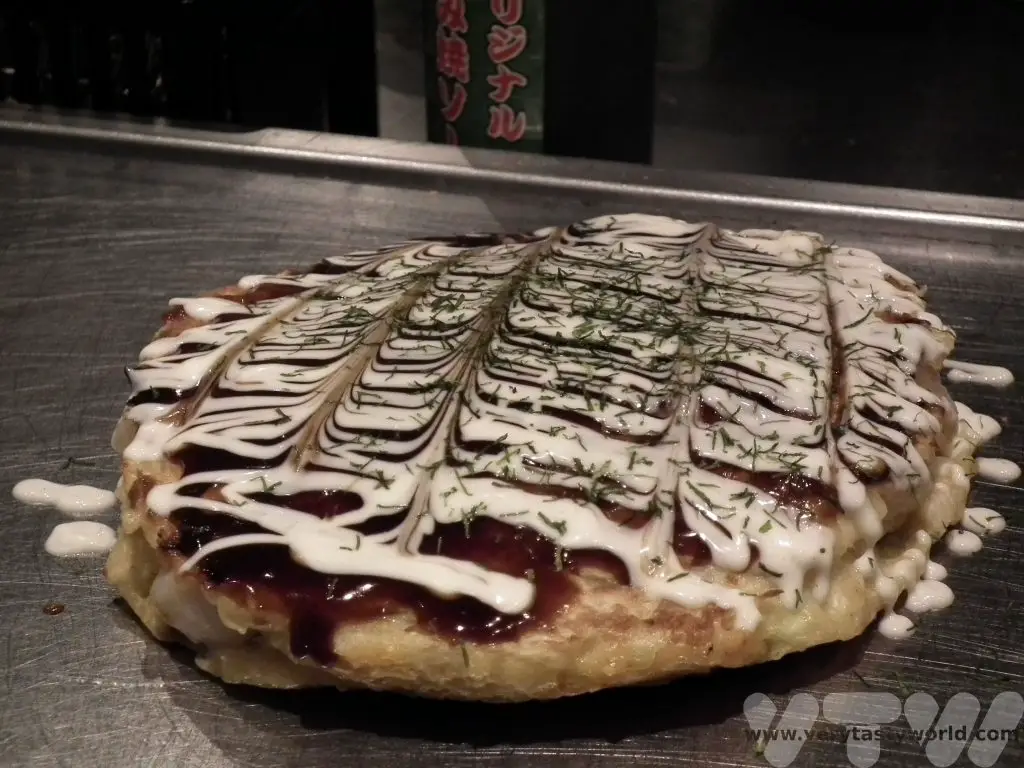
Oh, and there’s also the option of a fried egg!
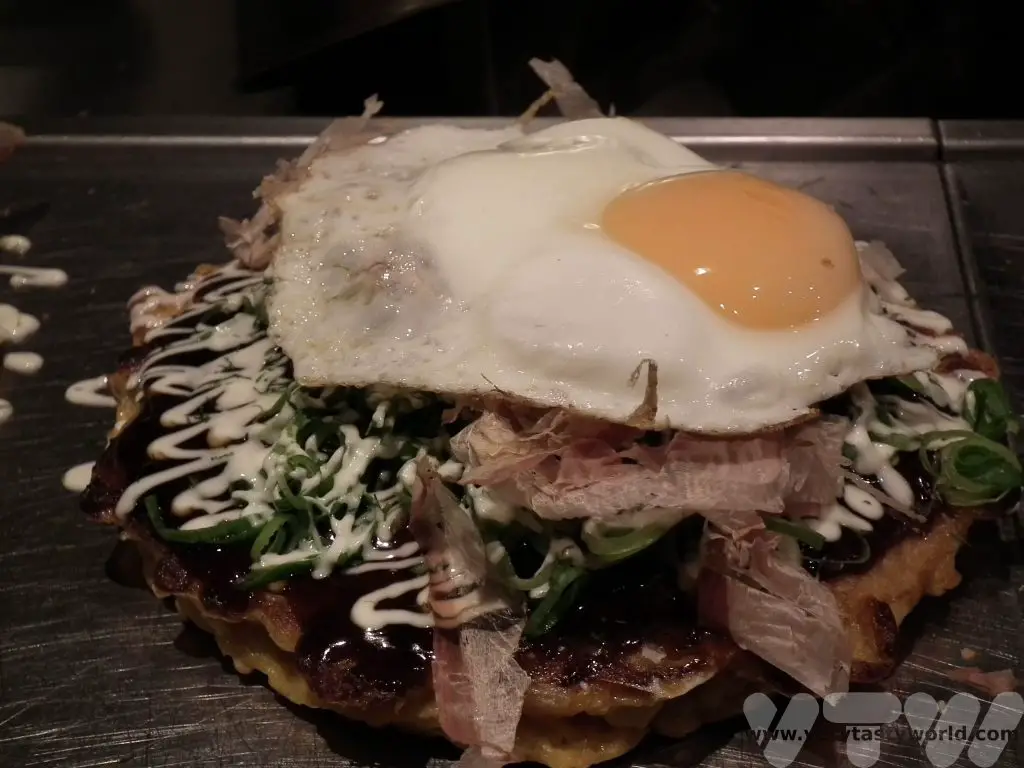
Osaka okonomiyaki is a dish that somehow manages to be both humble and decadent. It’s pretty easy to make at home to
Related Posts You May Enjoy

- Recipe: Simmered Shiitake Mushrooms

- How to Use Public Transport in Japan

- RECIPE Oyakodon Donburi

- Planning a Trip to Japan

- The Makanai: Cooking for the Maiko House

- Setsubun Food – Bean Throwing Day

- The Gassho Farmhouses of Rural Japan

- Recipe: Japanese Simmered Pork Belly – Buta no Kakuni

- RECIPE: How to Make Umeboshi

Who Ate All the Pies (Including the Georgian Cheese Boat)?
Er, we did. Georgia (the one that’s always on my-my-my-my-my-my-my-mind, not the one where the midnight train goes) is famous for feasting. It is thought that wine was possibly invented in Georgia. And we all know that the thing that goes best with wine is cheese*. And the country is famous for its cheese pies including the Georgian cheese boat.
We ate cheese every day on our trip. It felt like our arteries had the consistency of Primula by the time we arrived home but it didn’t matter – all the cheese was utterly delicious. We tried many varieties including Meskh cheese which was like cheese strings, but not made of nasty chemicals, Imeruli cheese, a mild, tasty and very holey number from the Imereti region which can then be made into Sulguni which is most popular in the Samegrelo Region. We visited a family who demonstrated how to make Sulguni and then offered us lots of it with an unexpected feast for lunch. Georgian hospitality is simply unsurpassed.
Much of the cheese we consumed involved tasting the regional variations of the national dish – cheese pie or khachapuri – which was served at pretty much every meal we ate. Each pie contains about 150,000 calories but don’t worry, it’s worth it. The pie itself is bread based rather than pastry based and filled with varying amounts of cheese, from the relatively modest Imeruli pie which merely contains cheese inside the pie, to the more decadent Megruli which melts a few pounds of cheese on top, just in case the cheese inside doesn’t quite satisfy your cheesy cravings.
Imeruli is the most common type of cheese pie.
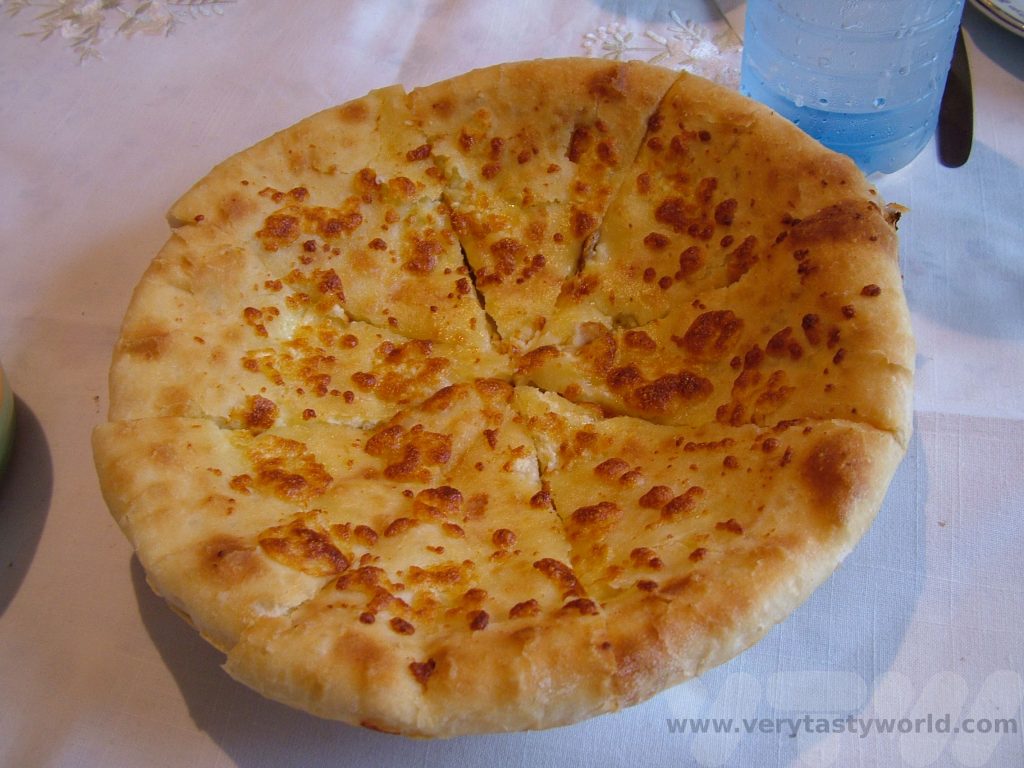
We ate this with most meals in central and eastern Georgia – the capital Tblisi and its surrounding regions.
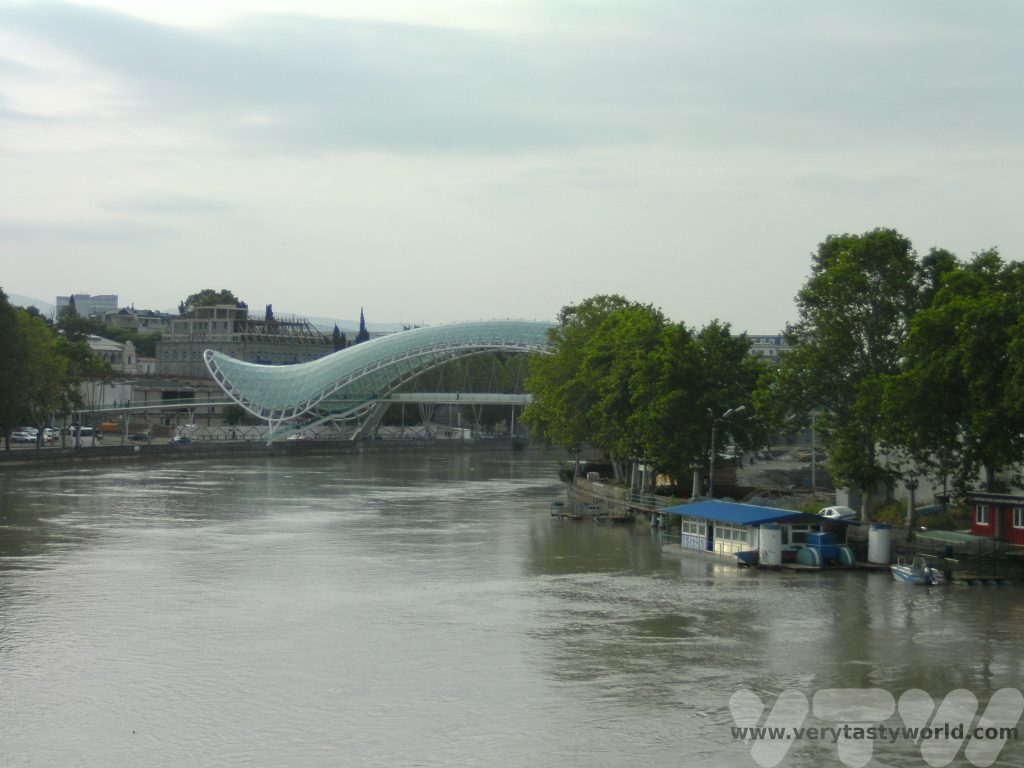
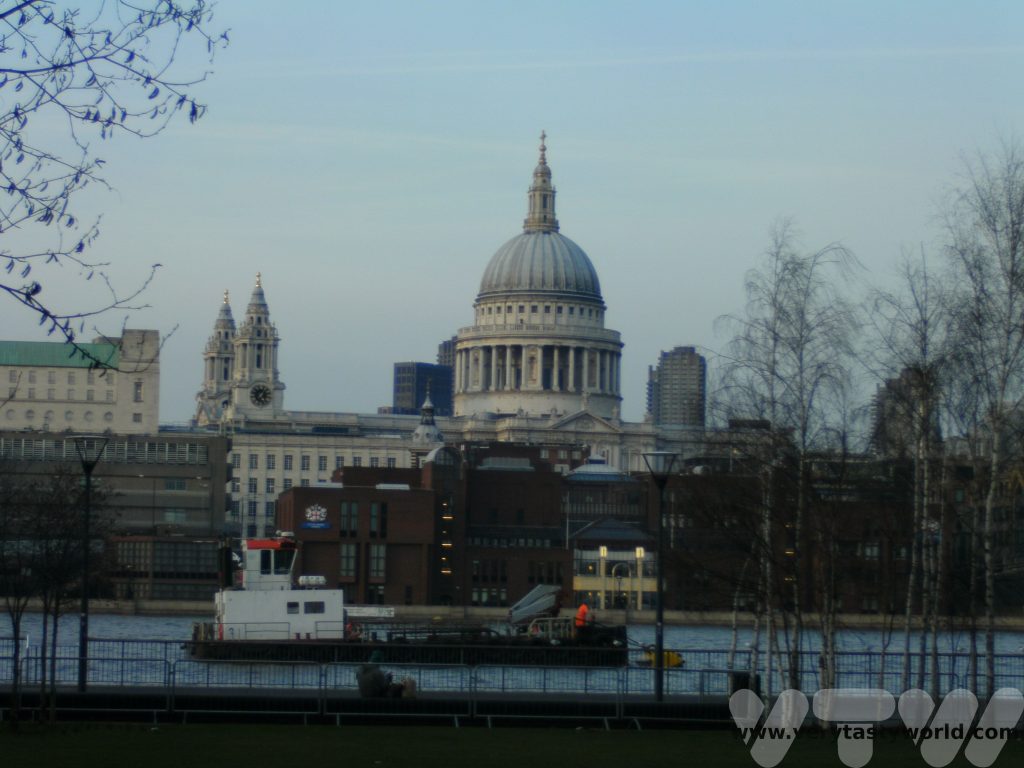
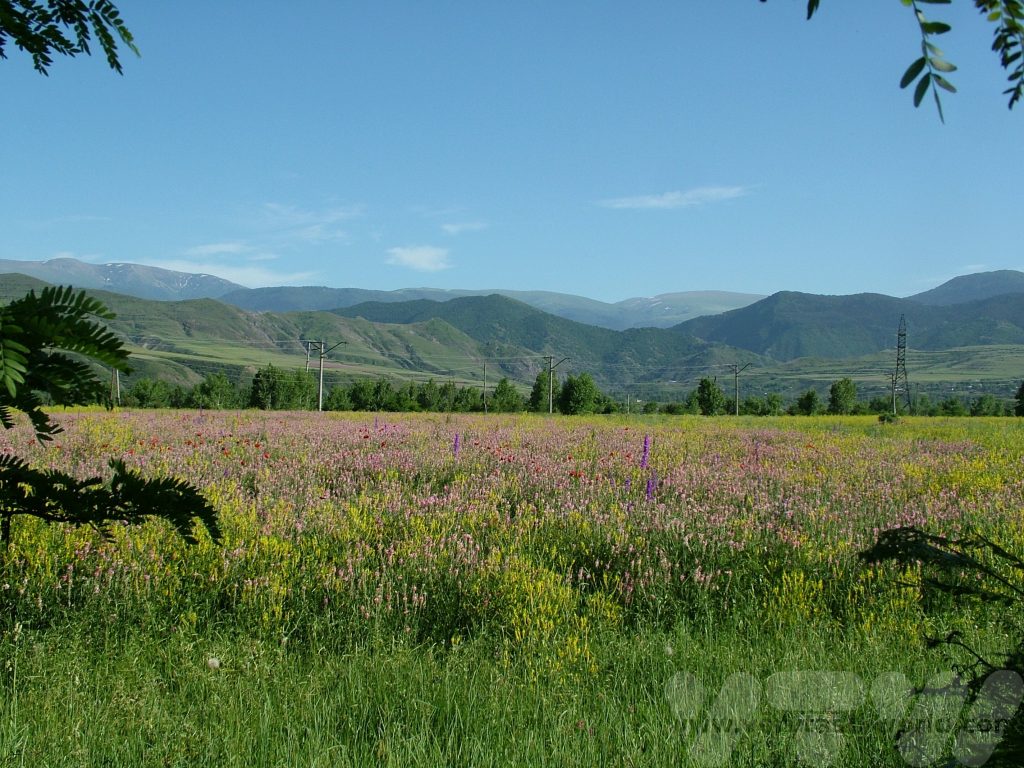
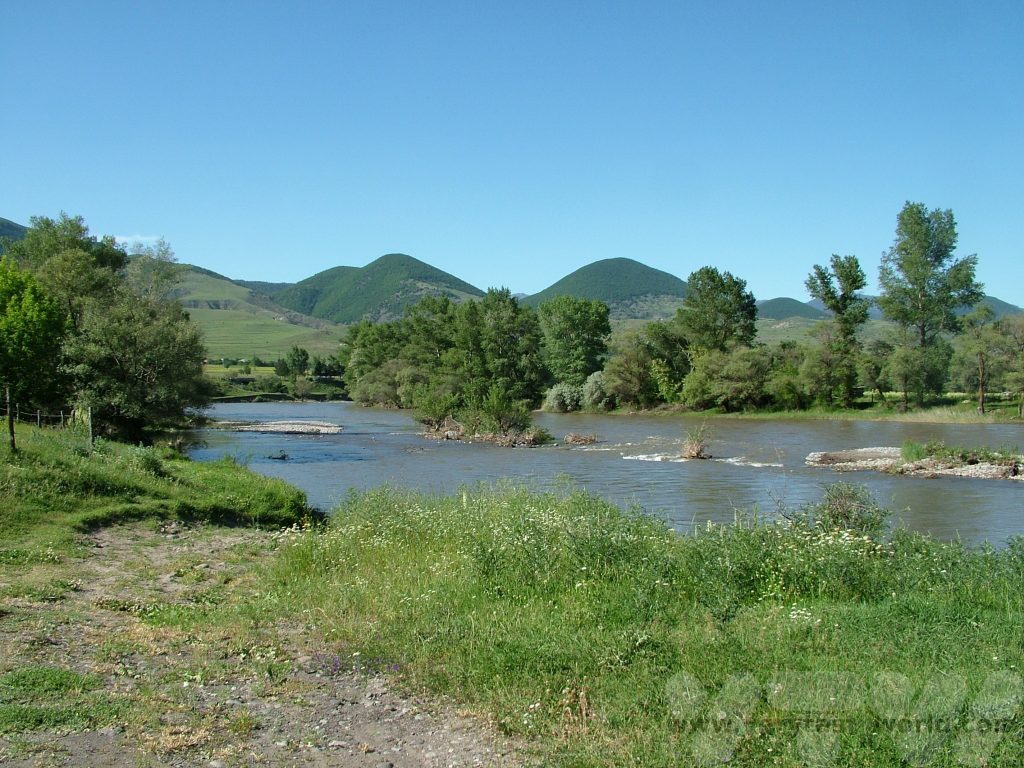
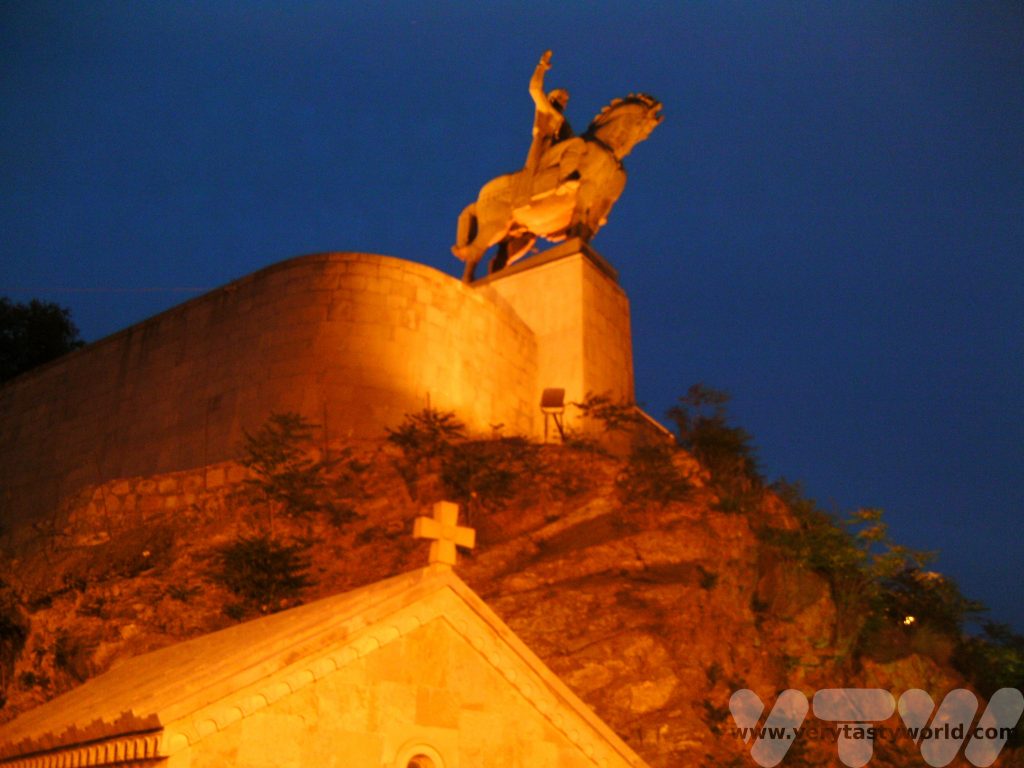
The western part of Georgia lies on the Black Sea cost. Batumi is a resort and is clearly a party town.
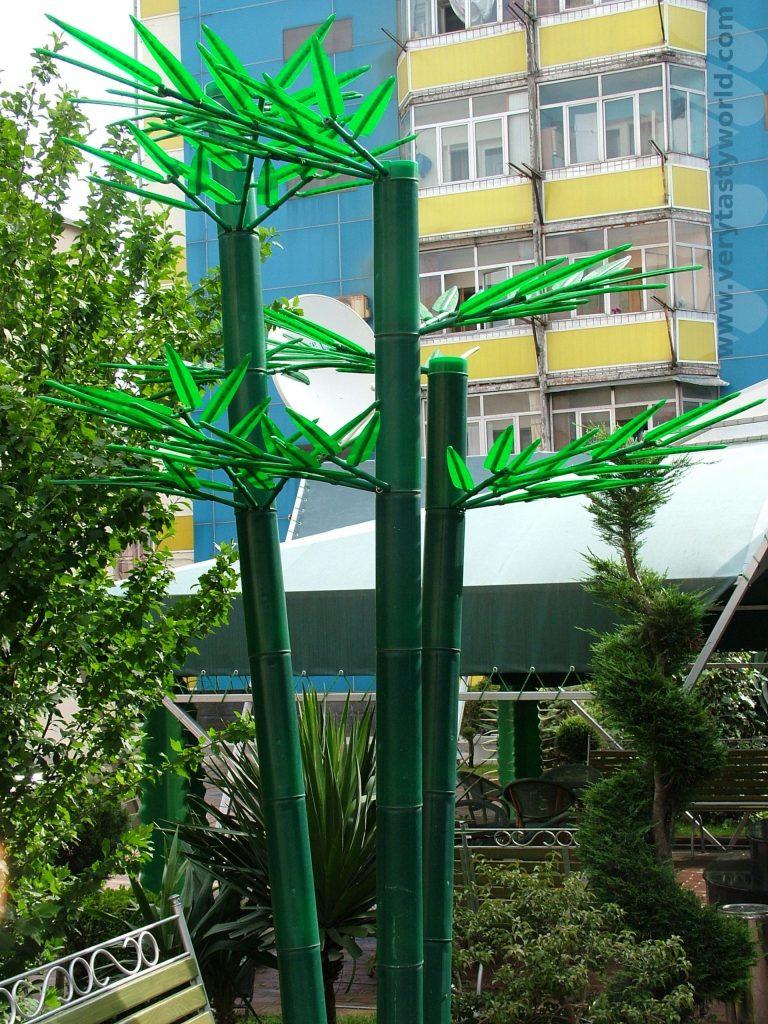
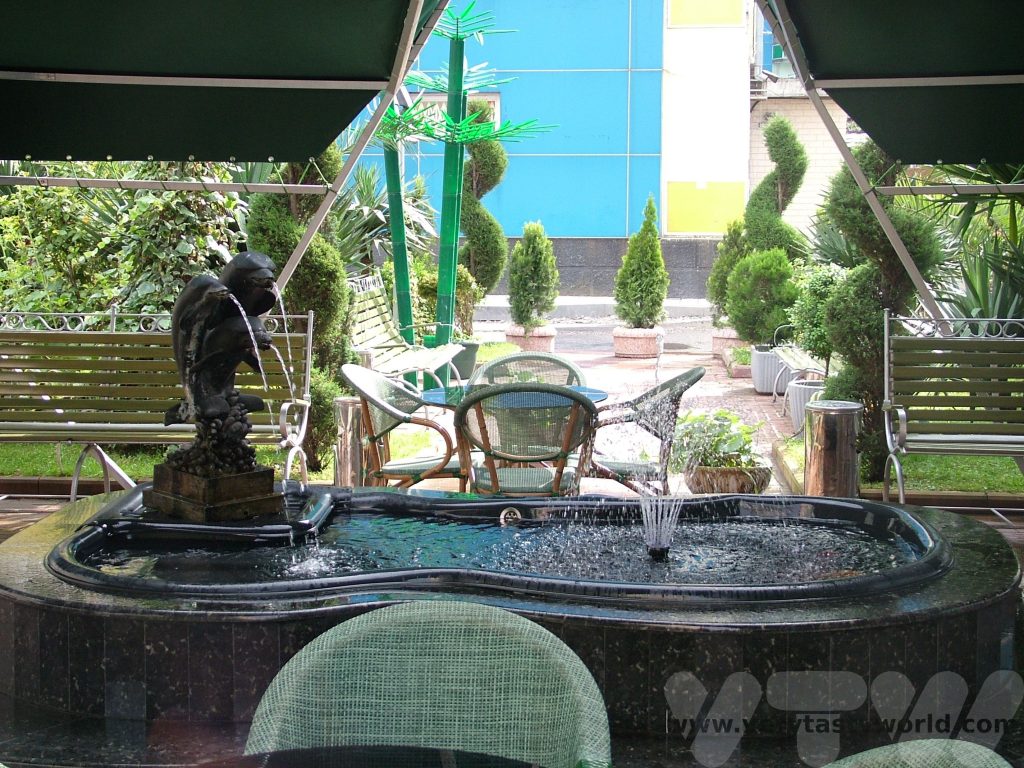
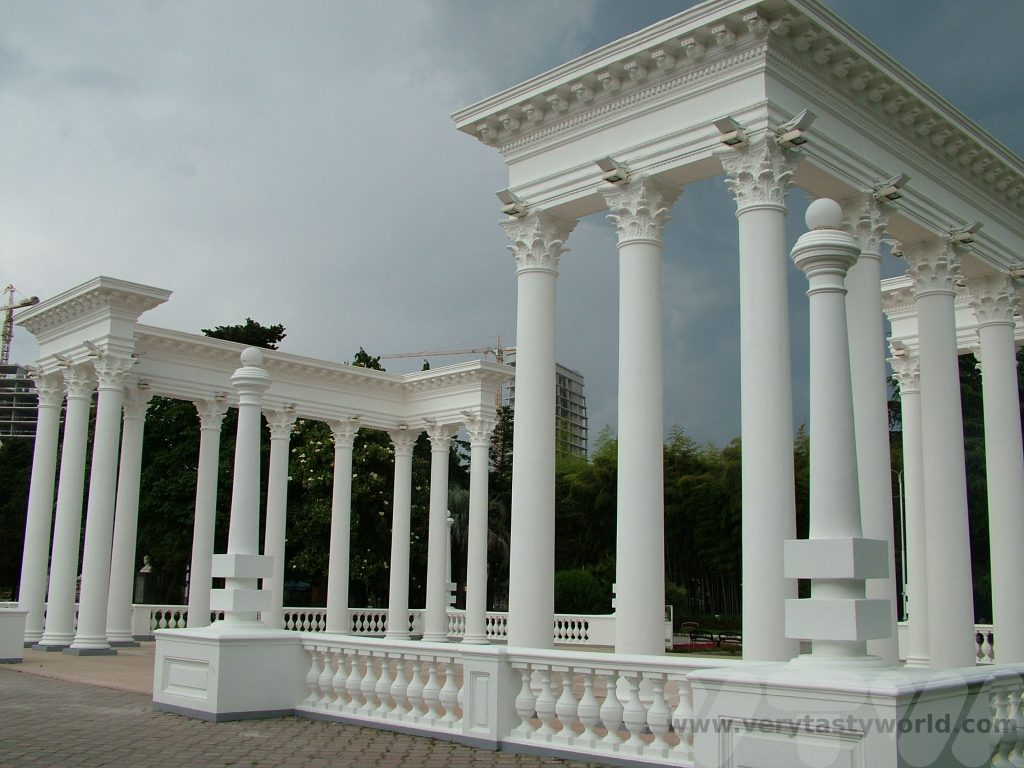
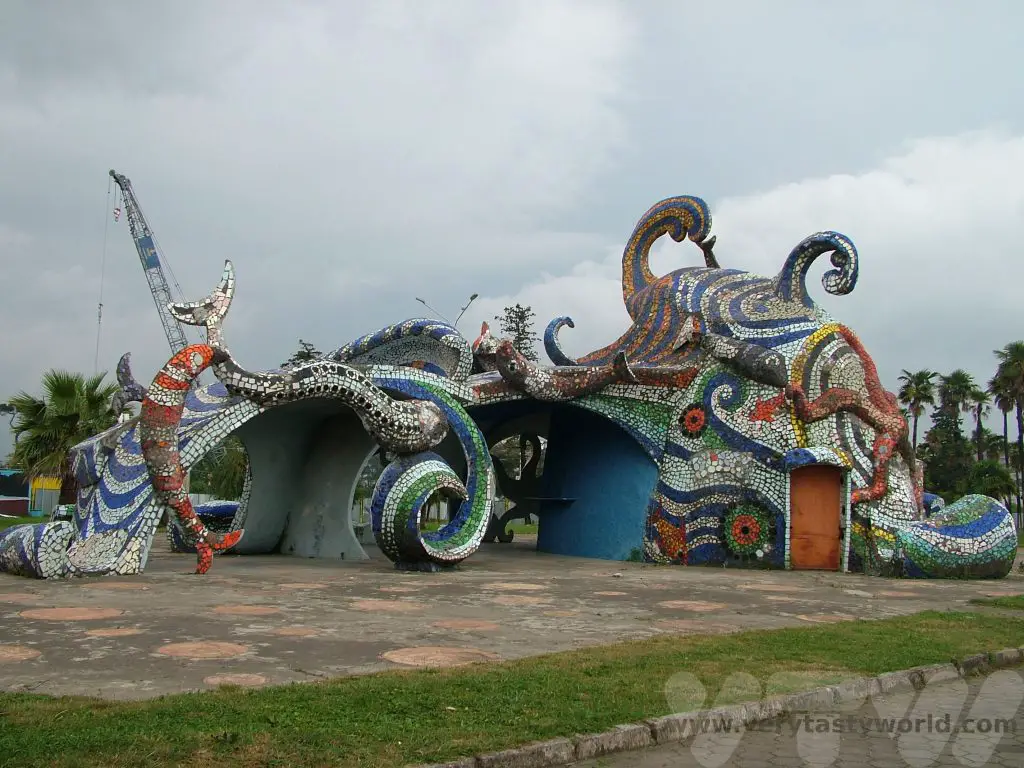
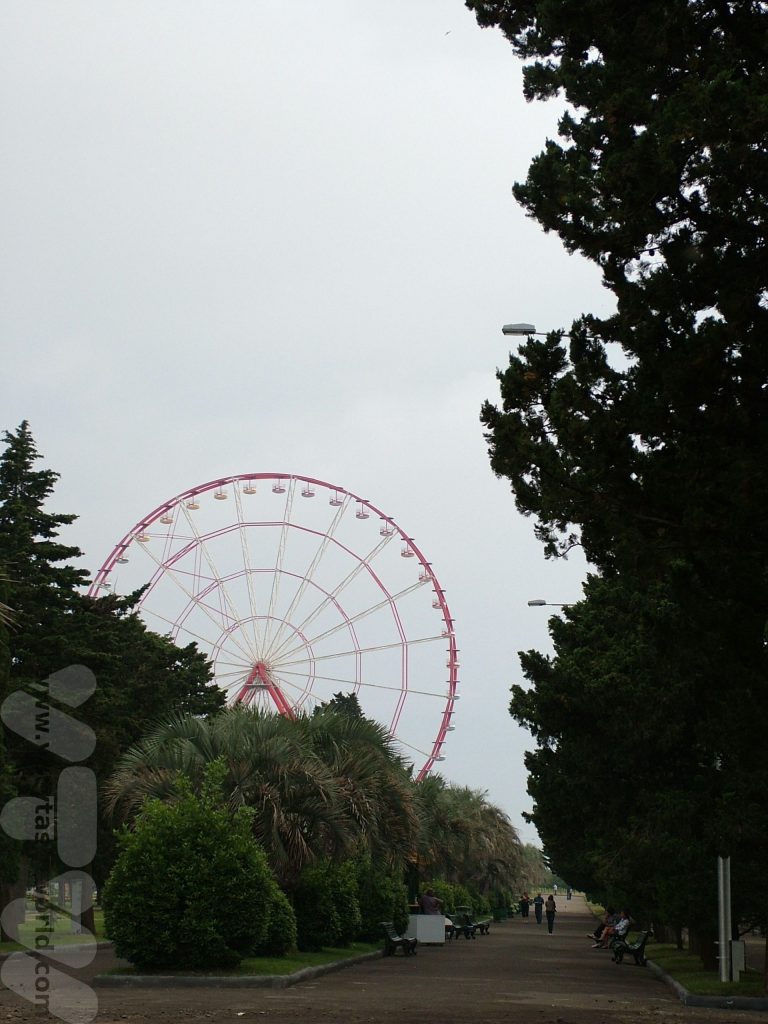
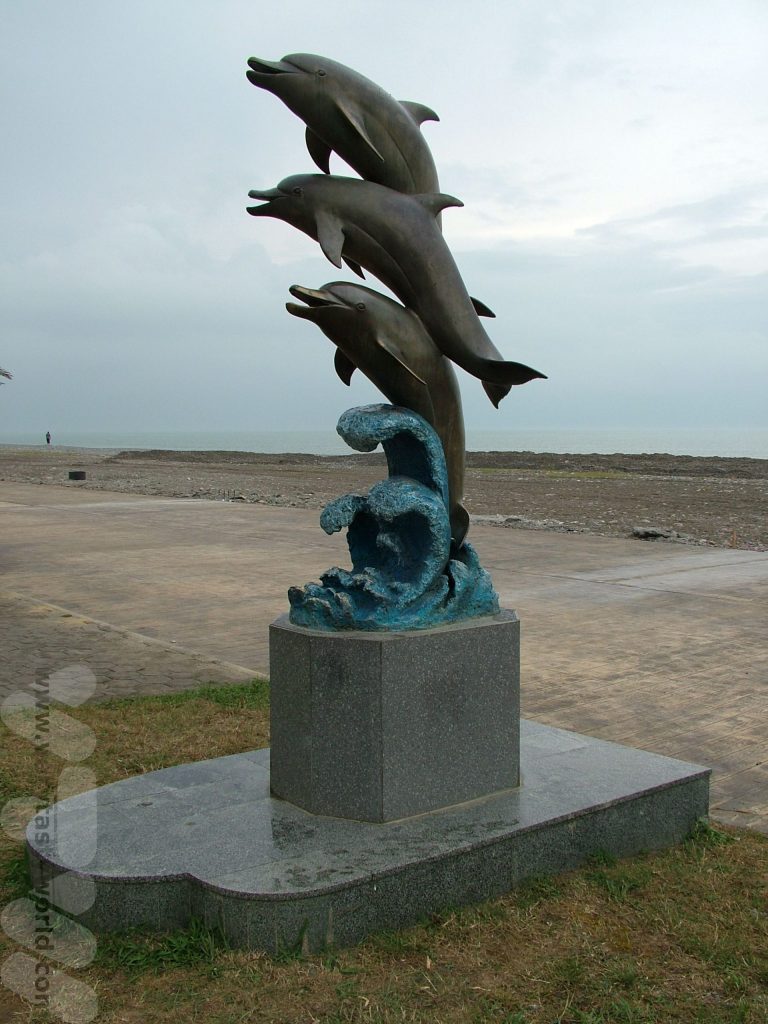
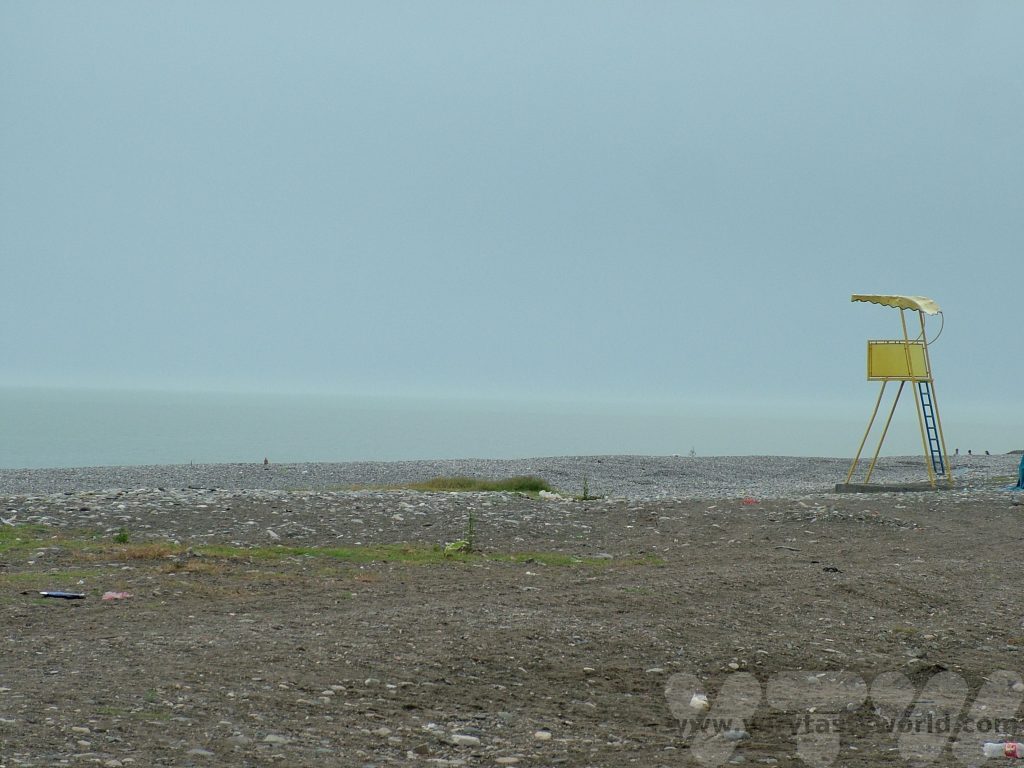
The Legendary Georgian Cheese Boat
It was in Batumi that we discovered the Georgian cheese boat, Acharuli Khachapuri, a monster from the Adjaran region. In keeping with Batumi’s flamboyant style, this is the daddy of cheese pies. It comprises a bread dough crust in the shape of a boat, filled with local cheese plus an egg and is topped off with an enormous knob of butter. You have to mix everything up (the egg cooks very slightly and the butter melts away so that you can pretend that it wasn’t there in the first place) so you end up with very buttery cheesy scrambled egg in a massive boat shaped piece of bread. It was suggested at the restaurant that we order a boat each. We insisted that we share one. One was more than enough but, oh, so delicious.
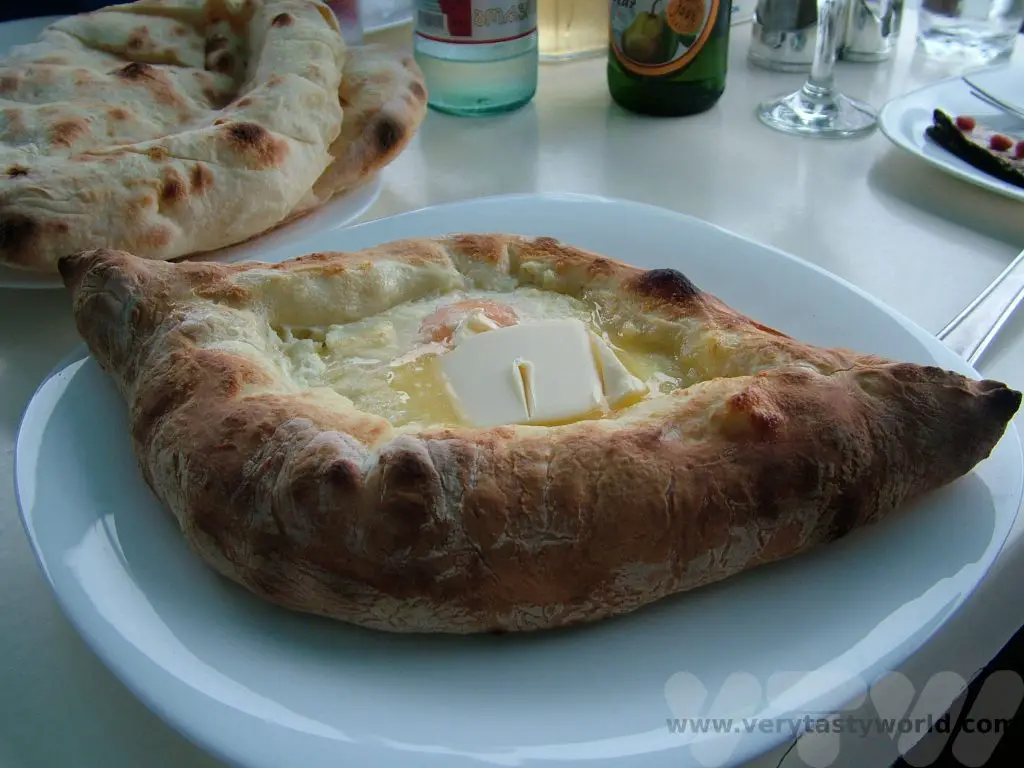
*Actually, it isn’t. Cheese tends to dull the palette, so if you’re serious about tasting wine you’re better off not eating anything at all and keeping your tastebuds in tip-top condition. But, of course, if you’re just out to have a good time, wine and cheese together is a delightful combination and entirely wonderful.
Related Posts You May Enjoy
Hello, Thali – South India Thali
South Indian Thali are a wonderful way to enjoy a cheap and filling meal which gives you the opportunity to sample loads of different dishes. Most restaurants across India will offer a thali option and often they are available on an endless top-up basis. Although, to be fair, even though the portion sizes of the individual dishes aren’t enormous, the combination of delicious food and rice is guaranteed to fill you up. While we were travelling through South India unlimited thali meals were available for just a couple of dollars. There will always be a choice of veg or non-veg thali. Both are emphatically delicious.
Thali are all about flavours and textures.
The quintessential thali comprises a flat round plate with a heap of rice in the centre surrounded by small bowls containing a variety of sauces, vegetables and curd. There will be a sweet dish in there too. And, of course, a crispy poppadum on top.
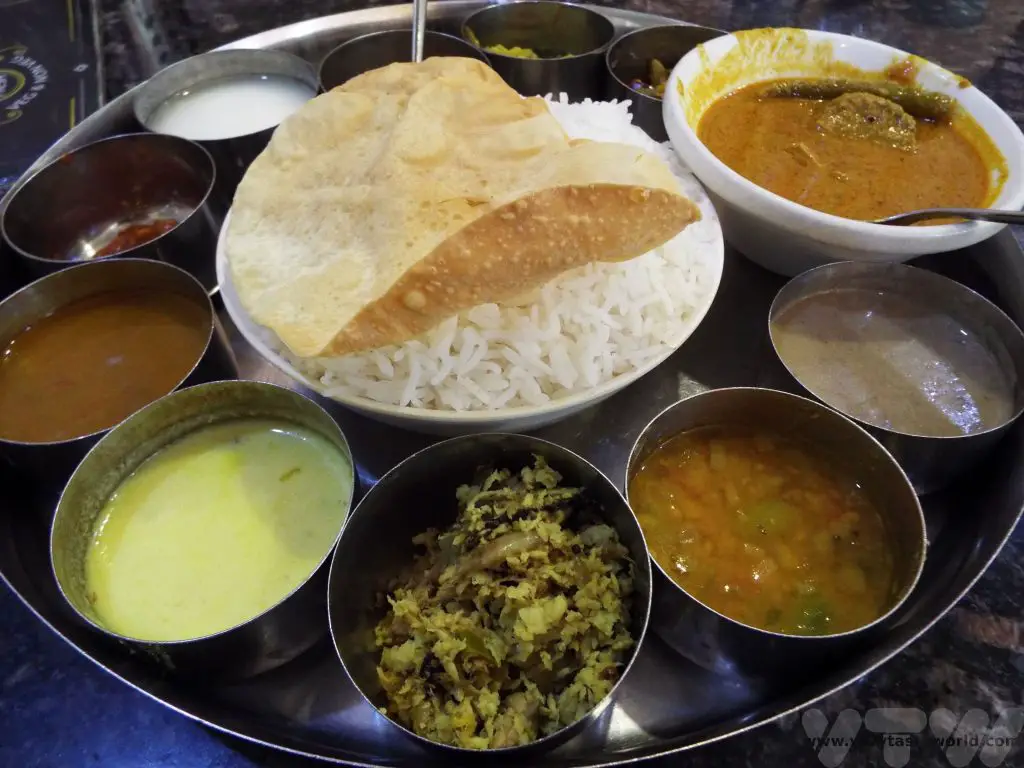
If you’re in South India many restaurants won’t have a knife or fork, but there are usually spoons available. If you’re eating with your fingers, make sure you wash your hands first. Every restaurant has a hand-washing area.
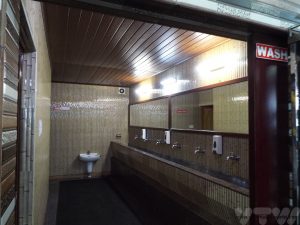
Sometimes the South Indian thali will be served on a banana leaf which is a more traditional approach – in a restaurant the waiters will arrive at each table with a vessel and will spoon the various curries onto the leaf. They will return and return – just nod to request another dollop of something delicious.
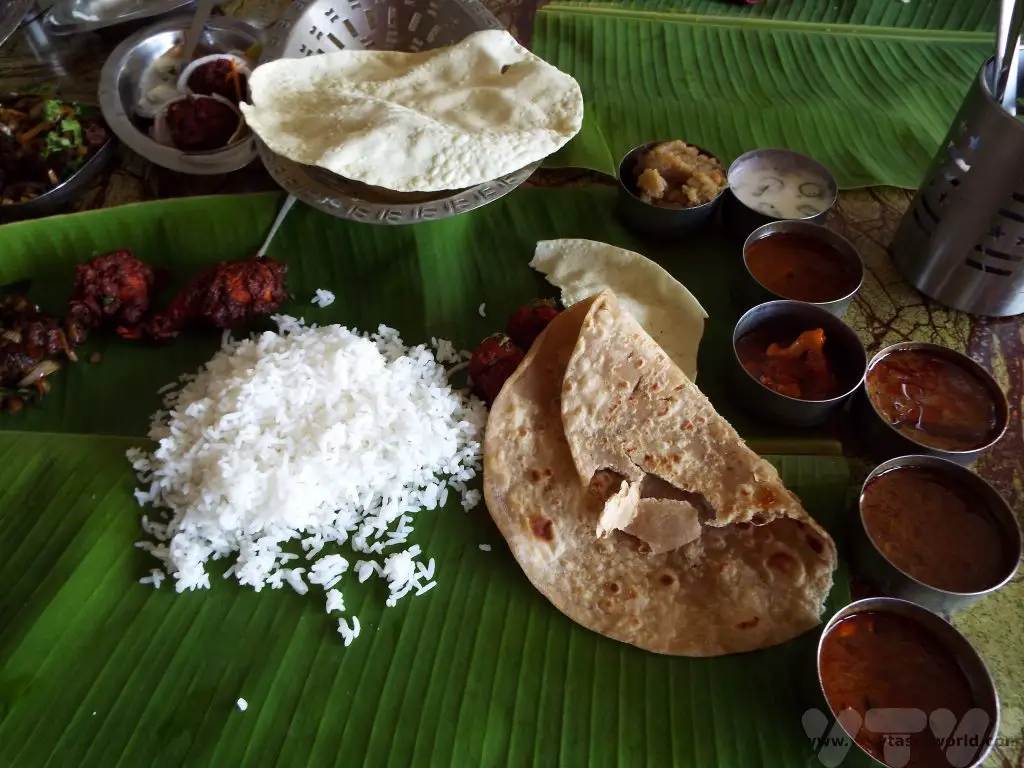
How To Eat South Indian Thali
Separate a portion of rice and pour the sauce from the dish or place some of the vegetables onto it. Mix it in. Then scoop up with the fingers of your right hand, pop it into your mouth and savour.
There is an order to eating the dishes of the thali, although no one will criticise you if you don’t follow it.
You should start with meat (if you are eating non-veg) and vegetables – both sauced and dry form.
Sambar, a mild lentil and vegetable sauce, comes next. It’s a staple throughout the region, often found at breakfast too – and eaten with idly (a savoury rice cake) or vada (like a savoury doughnut).
Rasam is a thin sauce, almost like a soup, made with tamarind to give a sour note, but spiced up with chilli or black pepper. It is always the last of the sauces to be eaten and it too can be mixed with the rice.
Yoghurt (also known as curd) rounds off the savoury part of the meal. It cools the palette in preparation for the dessert (if there is one).
There is often a sweet dish in one of the bowls – maybe something like rice with jaggery or sweet vermicelli in a milk-based sauce. If the dessert is liquid based, it’s okay to drink it directly from the container. Sometimes you may be given a piece of fruit. And the fruit, locally grown of course, is delicious.
We found that whenever we ate in restaurants the locals were very happy to see us. They were also quite keen to see how we coped with eating using our hands (a little bit messy, to be honest) but they were also happy to guide us about the etiquette. There were a number of occasions when we weren’t really sure in which order to eat the – absolutely delicious – dishes, and were on-hand to offer some friendly guidance, particularly when it came to accidentally eating the sweet dish before the savouries had been guzzled with relish!
Related Posts You May Enjoy

Japanese Chawan Mushi – Savoury Egg Custard
A Treasure Hunt
Japanese chawan mushi is a savoury egg custard. Its name derives from the combination of two words: chawan (tea bowl) mushi (steam), that is a teacup-steamed-custard. It often arrives in a lidded cup, and treasures are to be found inside.
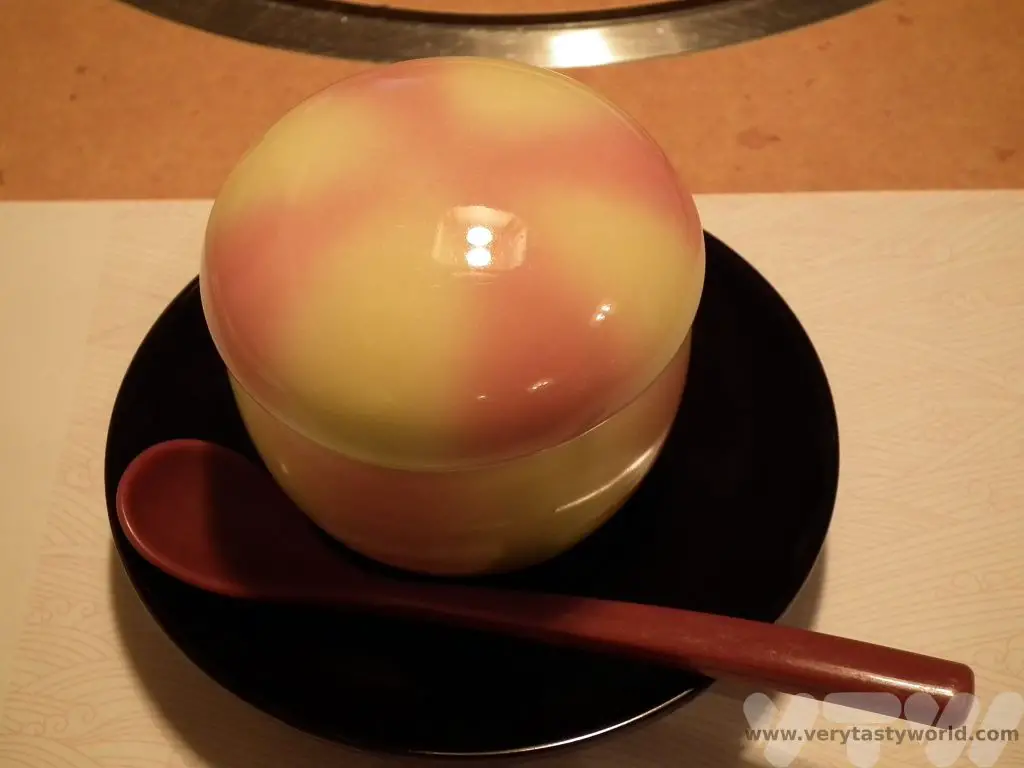
The egg mixture is flavoured with a dashi (stock) and/or mirin (sweet rice wine) and/or soy sauce which gives a flavour that is very subtle. But the most wonderful thing about chawan mushi is that no cup is ever the same.
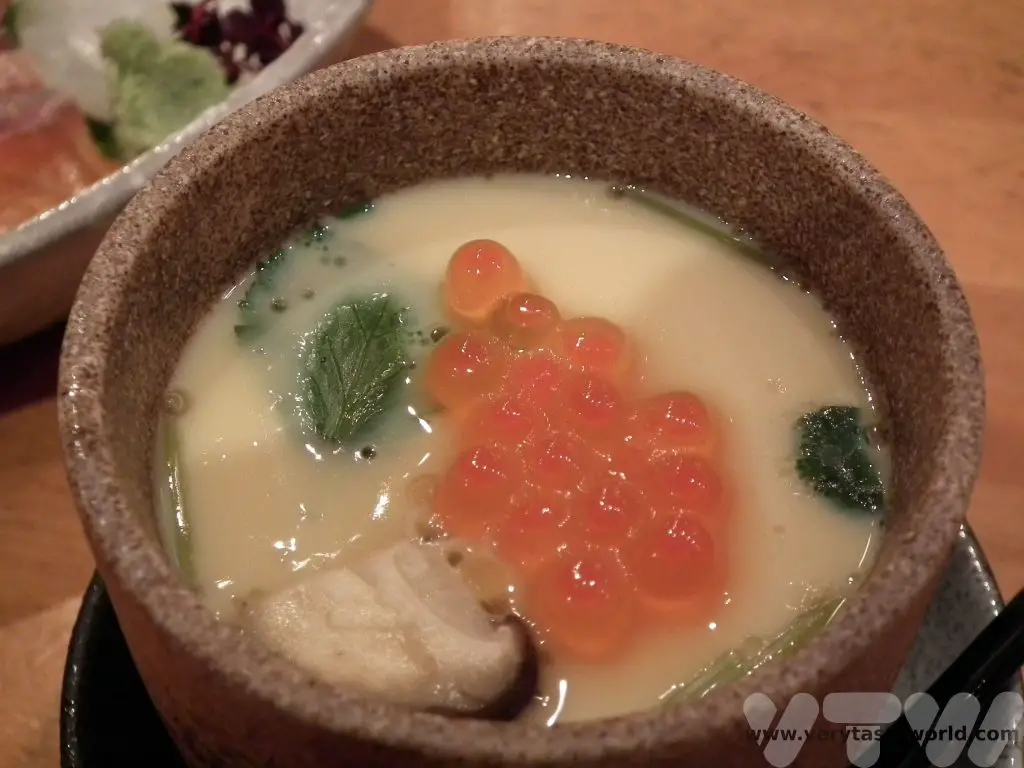
Hidden treasures are to be found inside the depths of the silky-smooth custard. Ginkgo nuts and yurine (lily root) are traditional but there may also be little shiitake mushrooms, prawns, kamaboko or surimi (little slices of fish cake), sometimes even little thin slices of chicken that add both texture and flavour. Presentation is always beautiful and garnishes can include herbs such as shiso (a Japanese herb, like Perilla), negi (spring onions, finely sliced) or ikura (salmon roe).
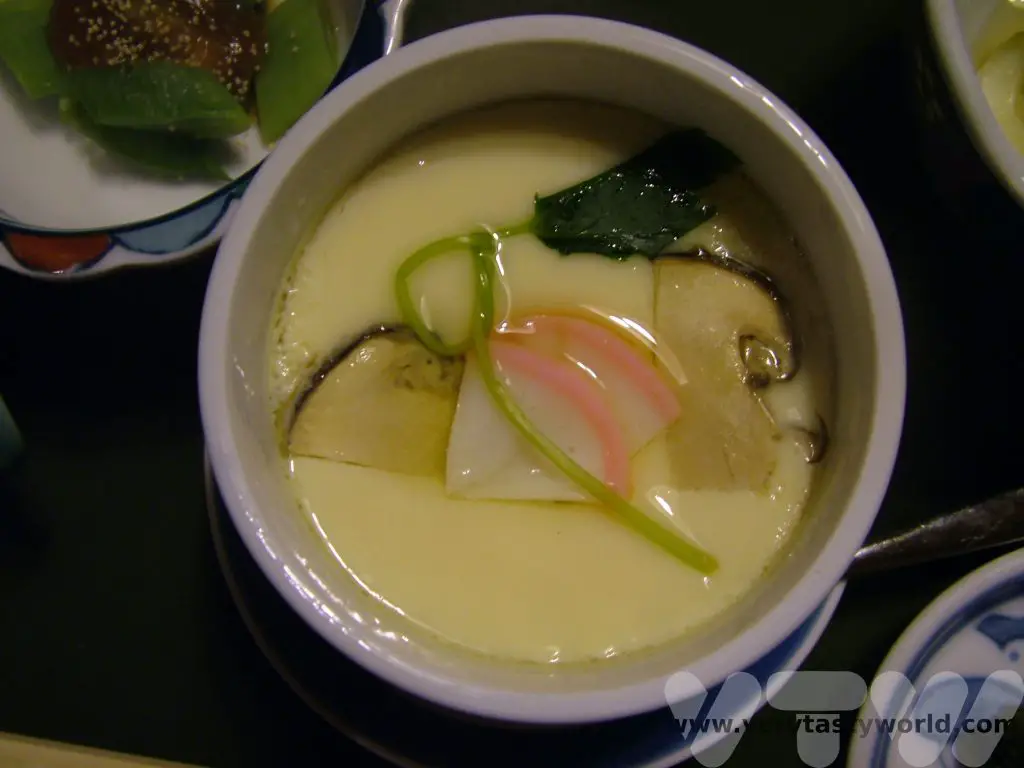
Some restaurants that specialise in a particular type of cuisine can adapt chawan mushi to their style. This crab chawan mushi savoury egg custard, from the famous crab restaurant on Dotonbori, Osaka was very simple in terms of its ingredients, the flavour was delicate and divine.
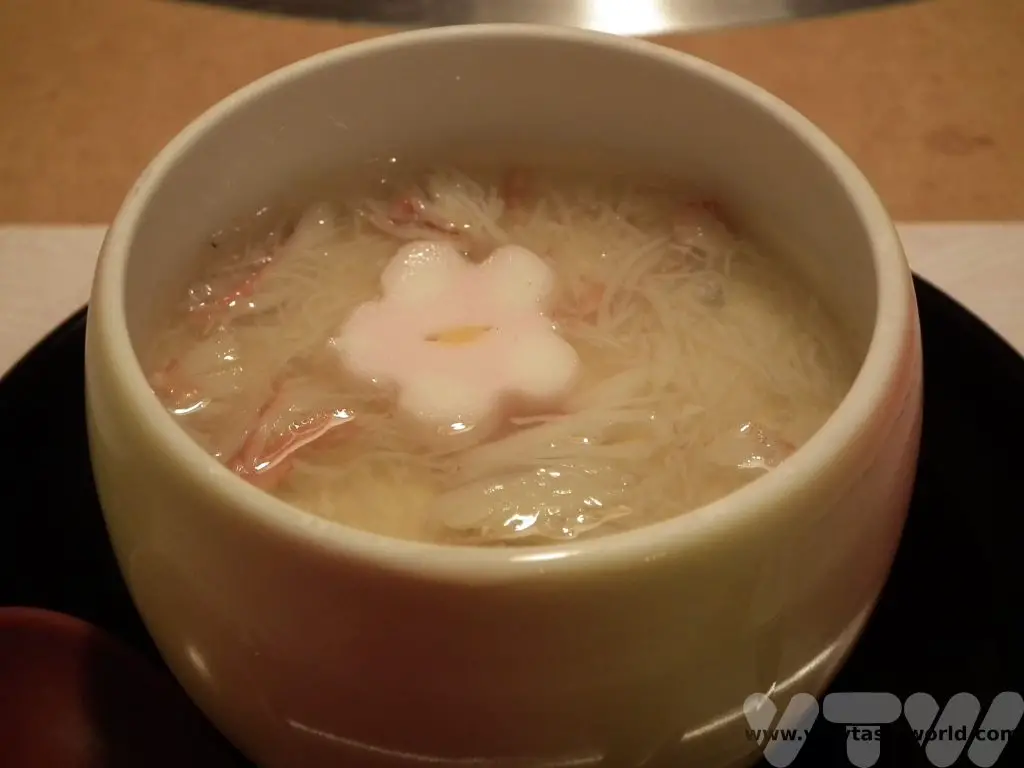
In some parts of Japan udon noodles can be added to the mix to make odamakimushi.
Japanese chawan mushi can often be ordered in restaurants to accompany a meal. It might form part of a wider set menu. Even sushi bars often offer chawan mushi. It’s also a dish that families cook at home.
Related Posts You May Enjoy

- Recipe: Simmered Shiitake Mushrooms

- How to Use Public Transport in Japan

- RECIPE Oyakodon Donburi

- Planning a Trip to Japan

- The Makanai: Cooking for the Maiko House

- Setsubun Food – Bean Throwing Day

- The Gassho Farmhouses of Rural Japan

- Recipe: Japanese Simmered Pork Belly – Buta no Kakuni

- RECIPE: How to Make Umeboshi

